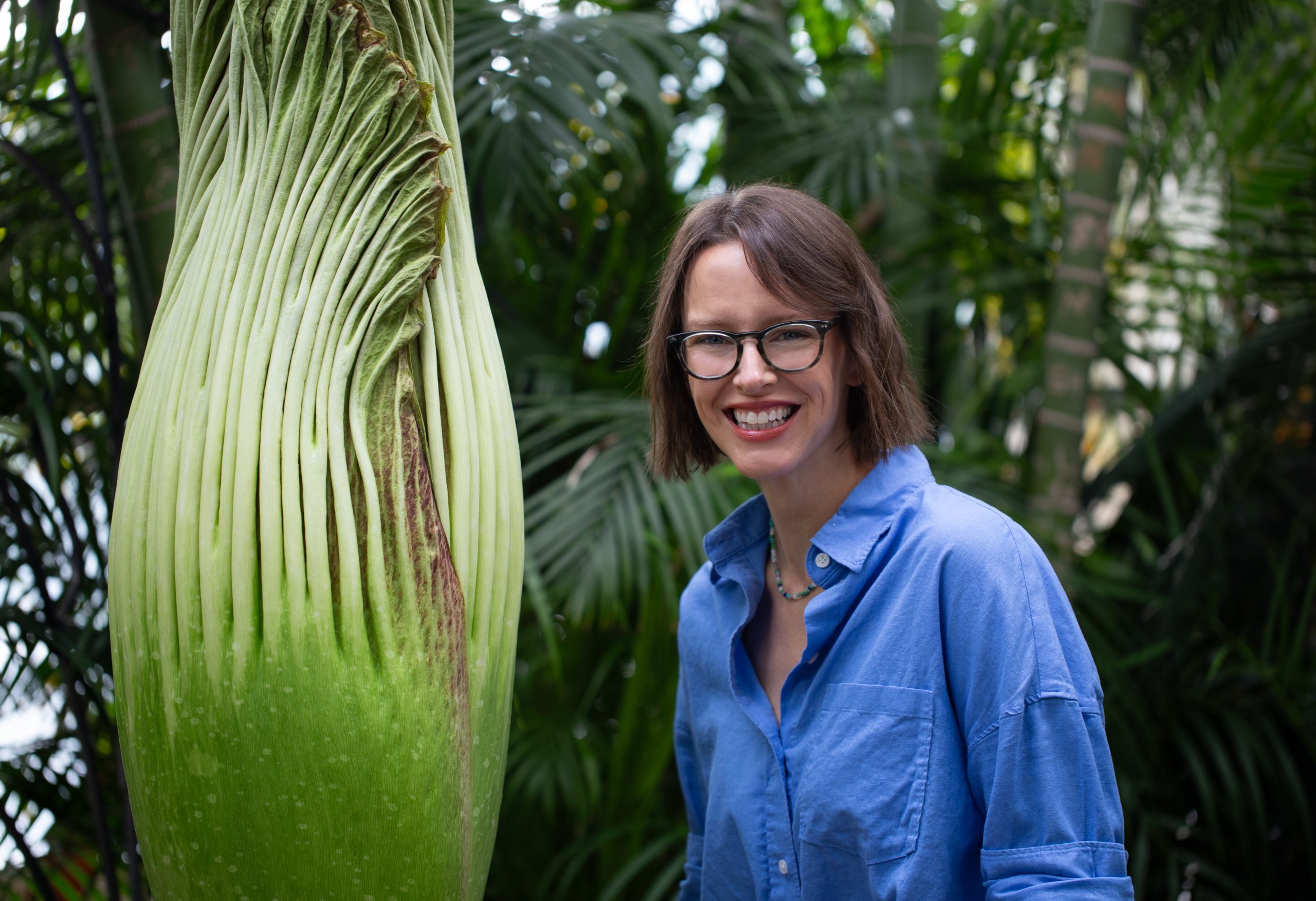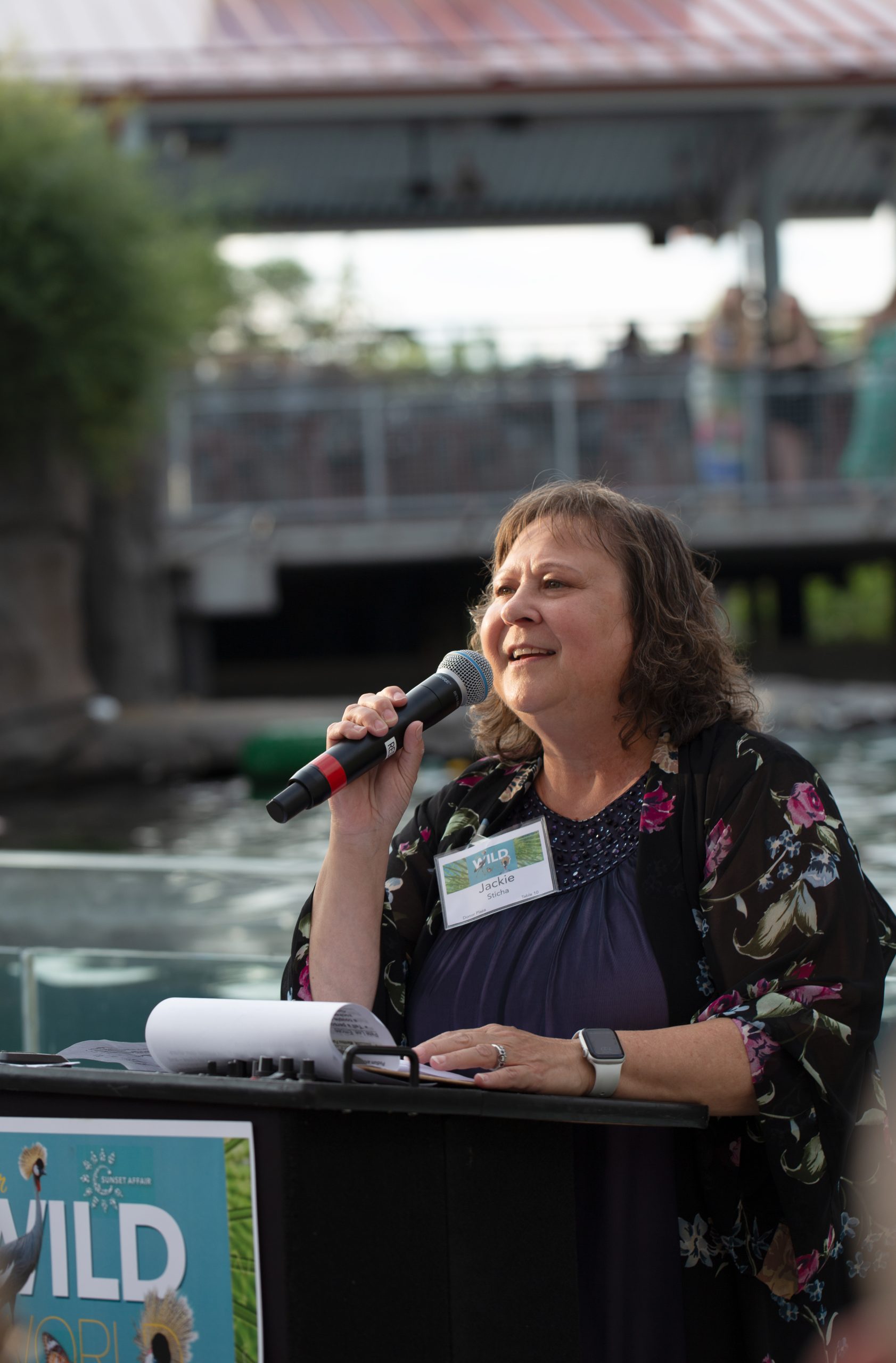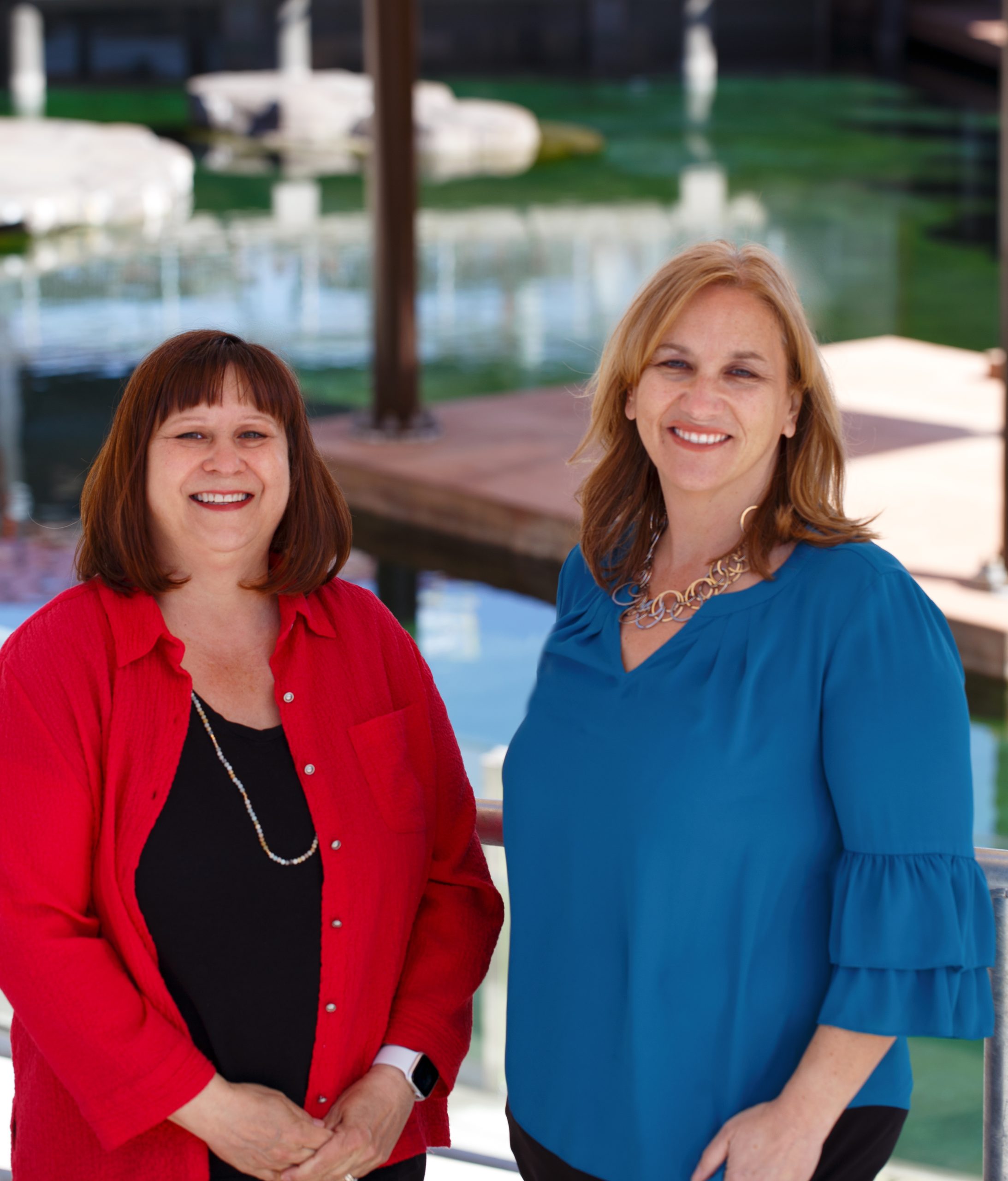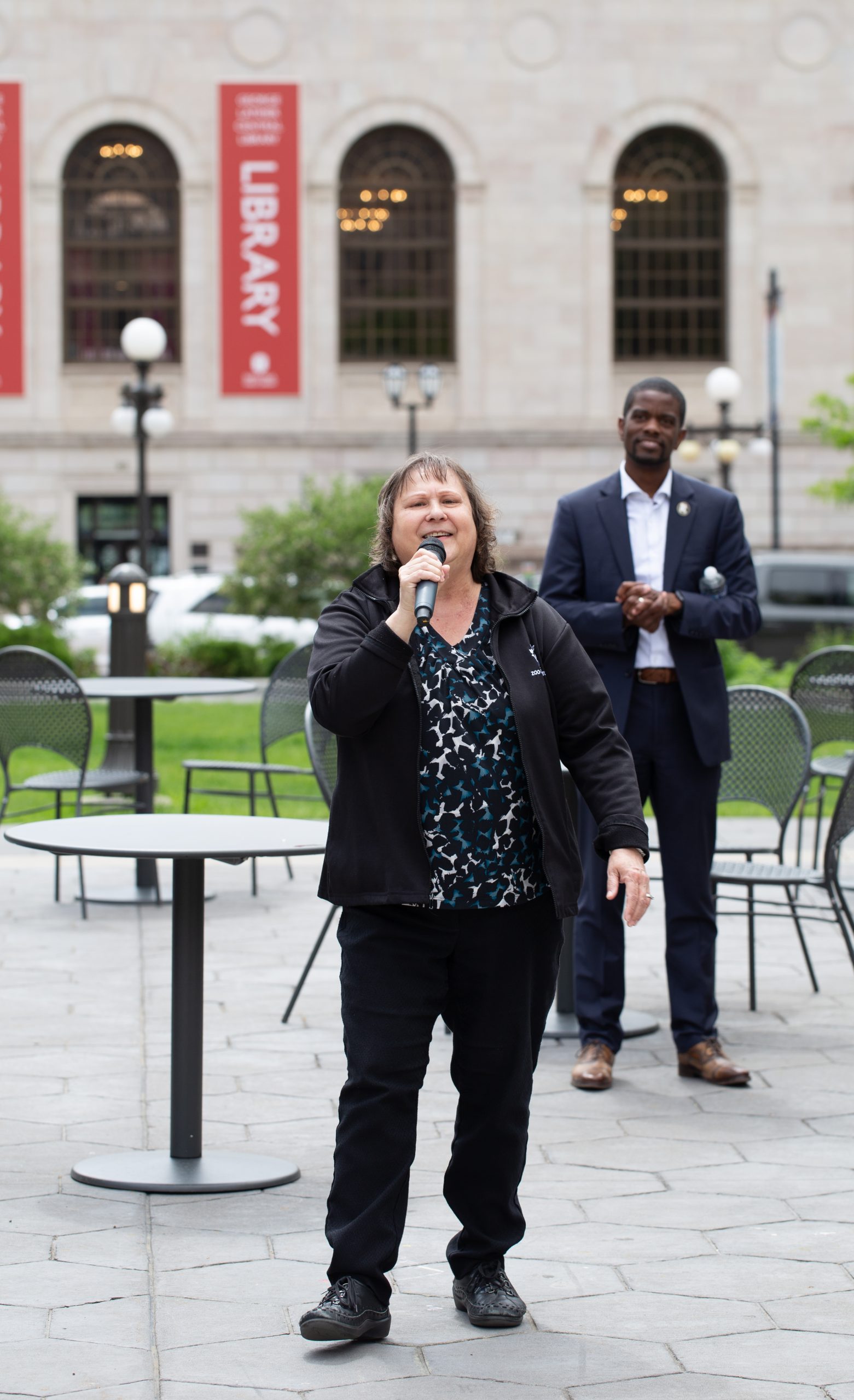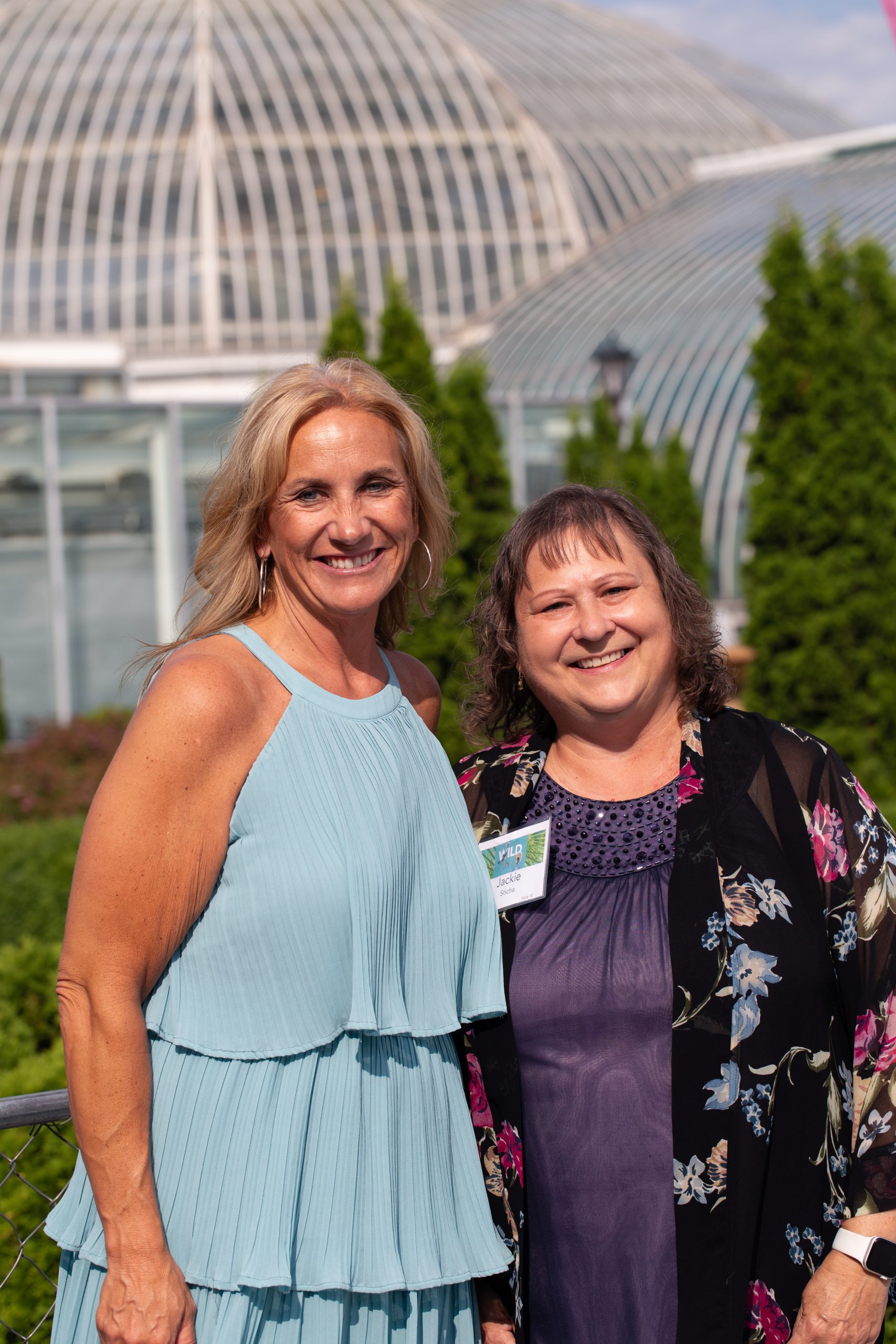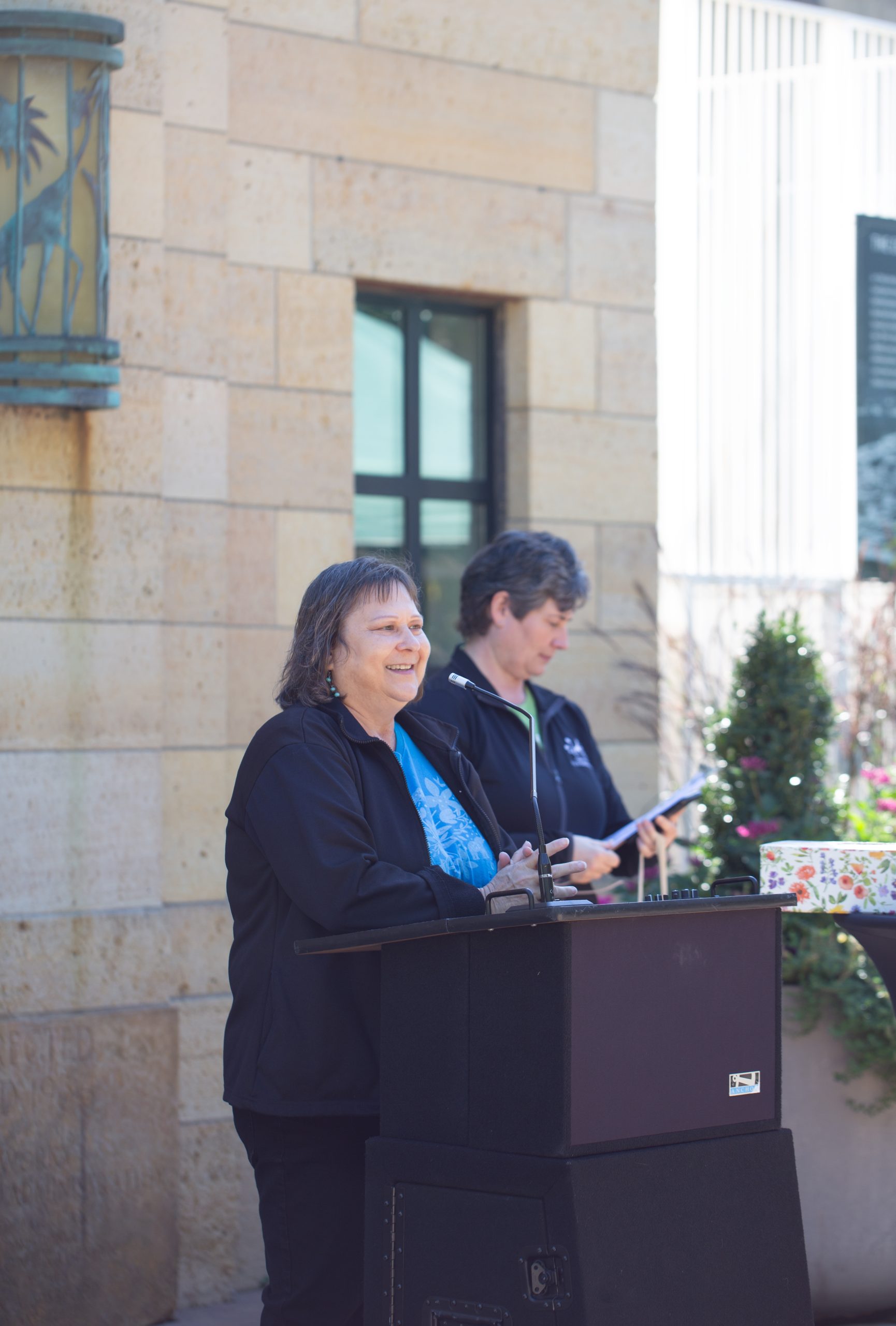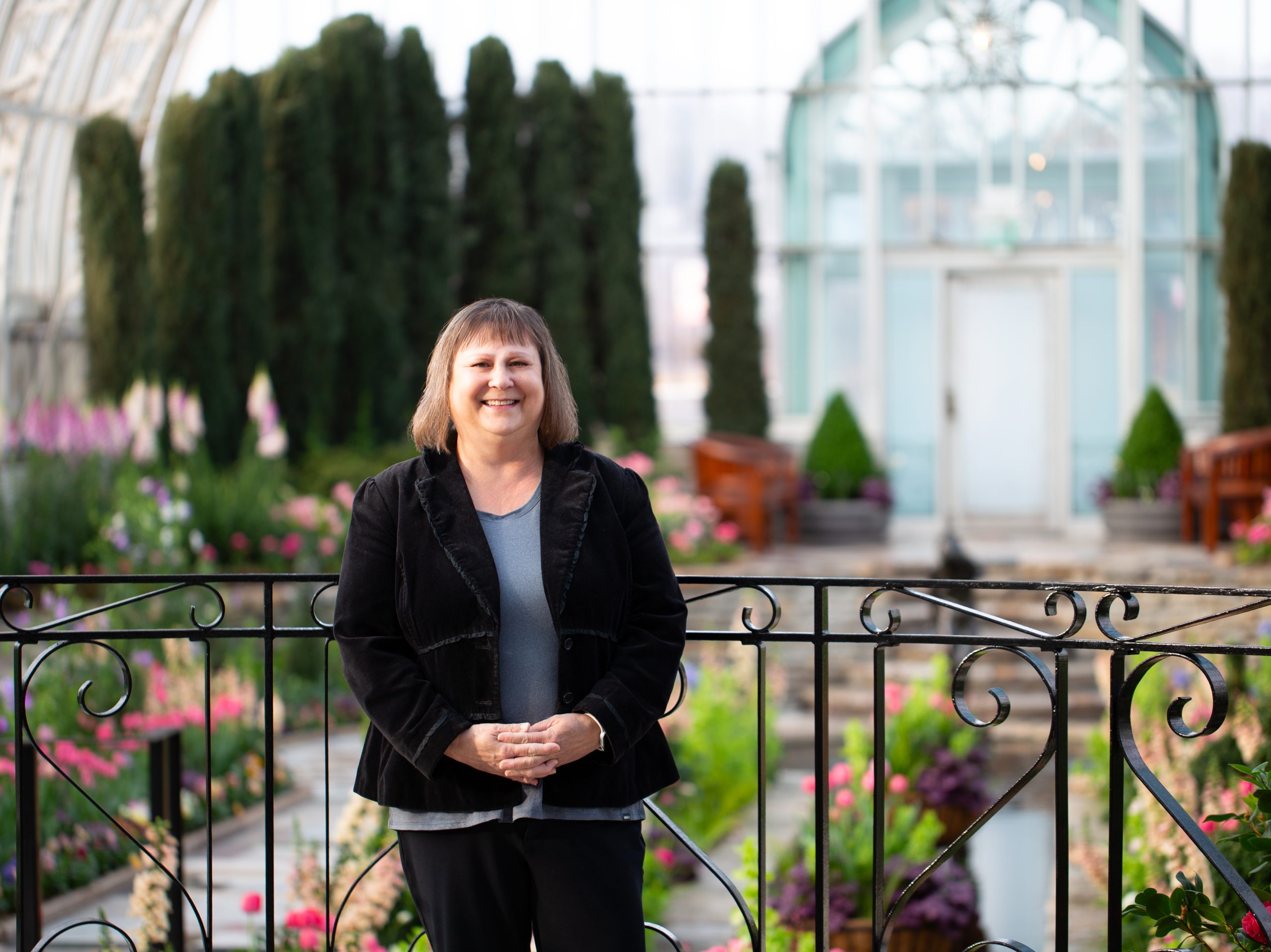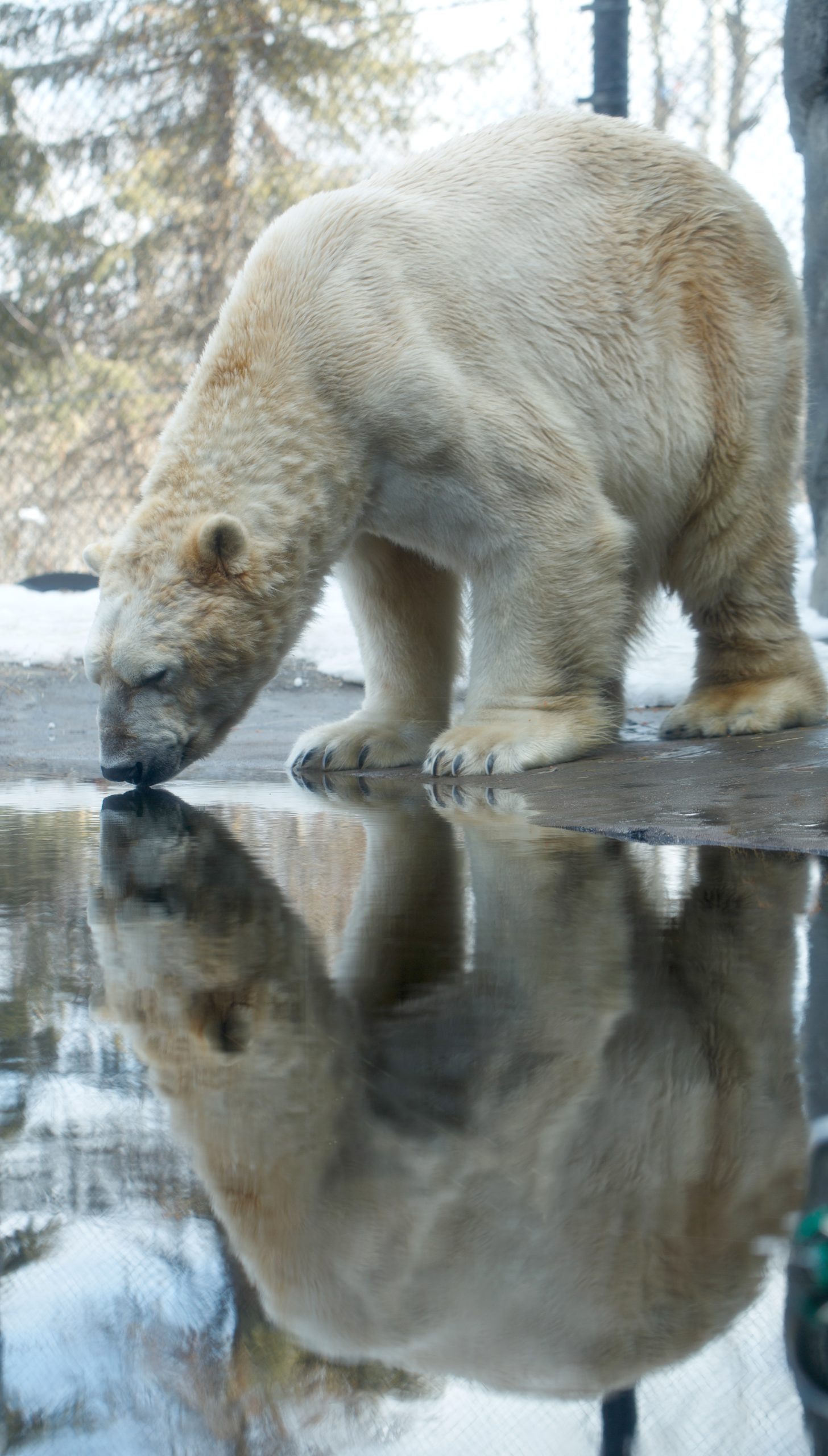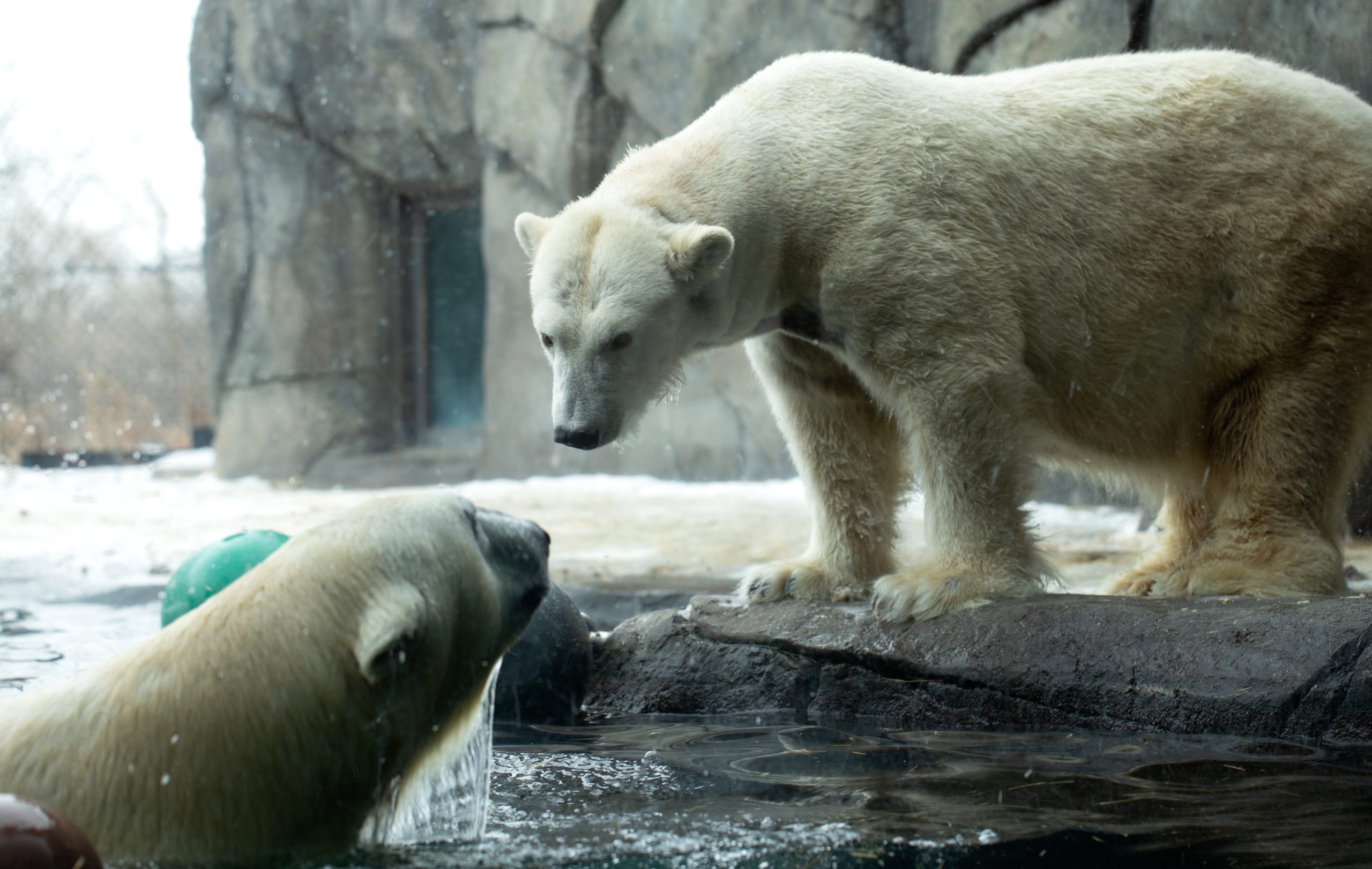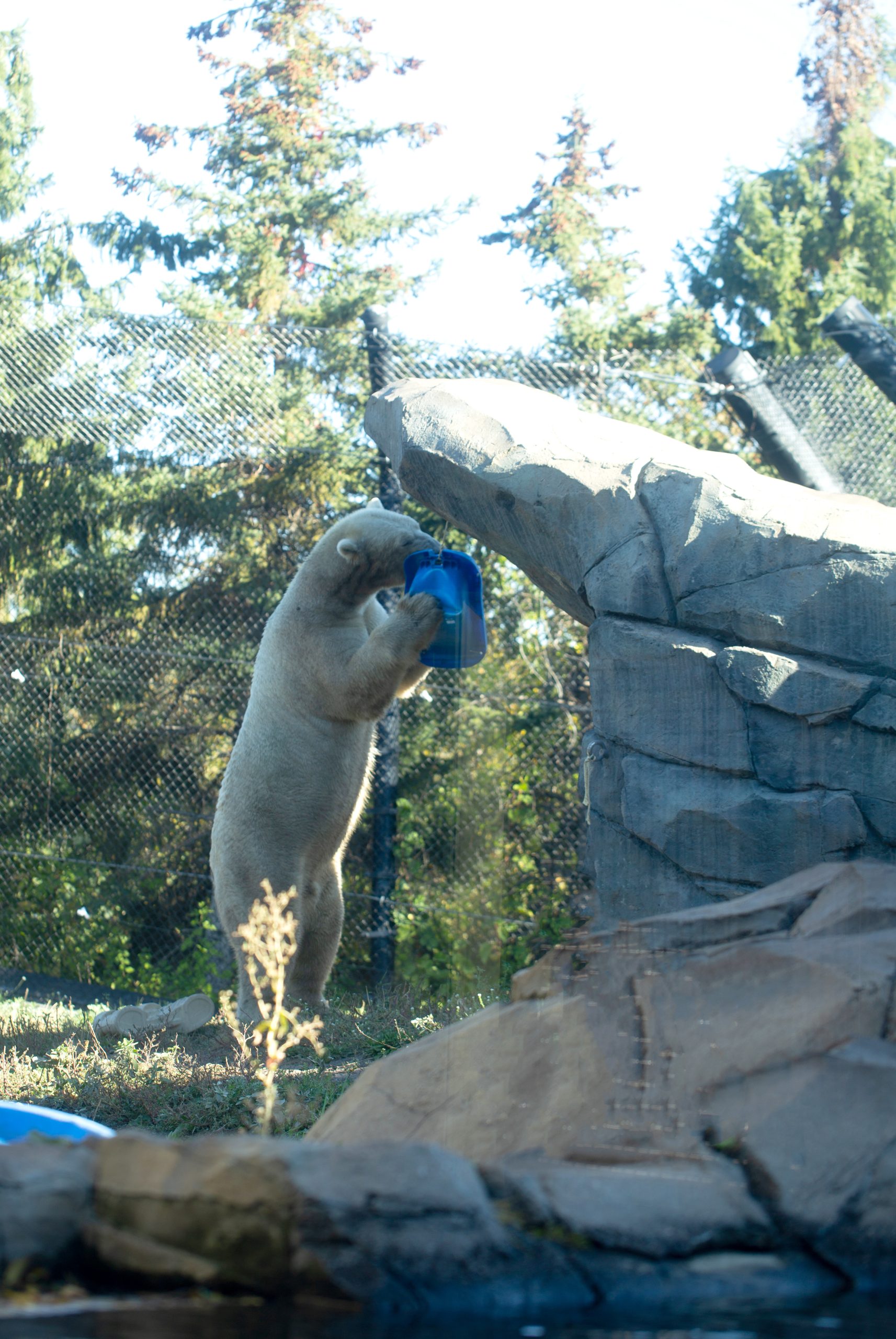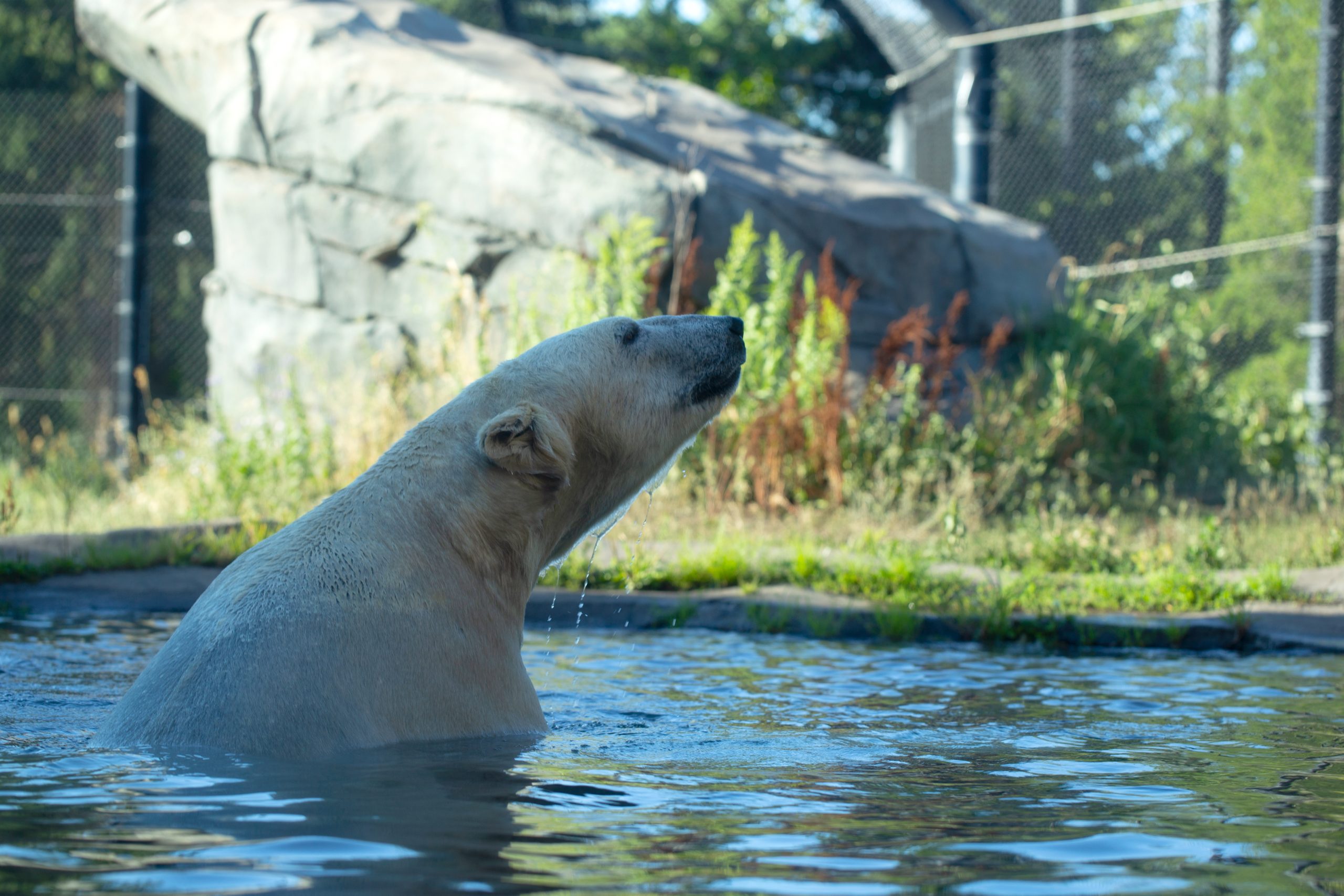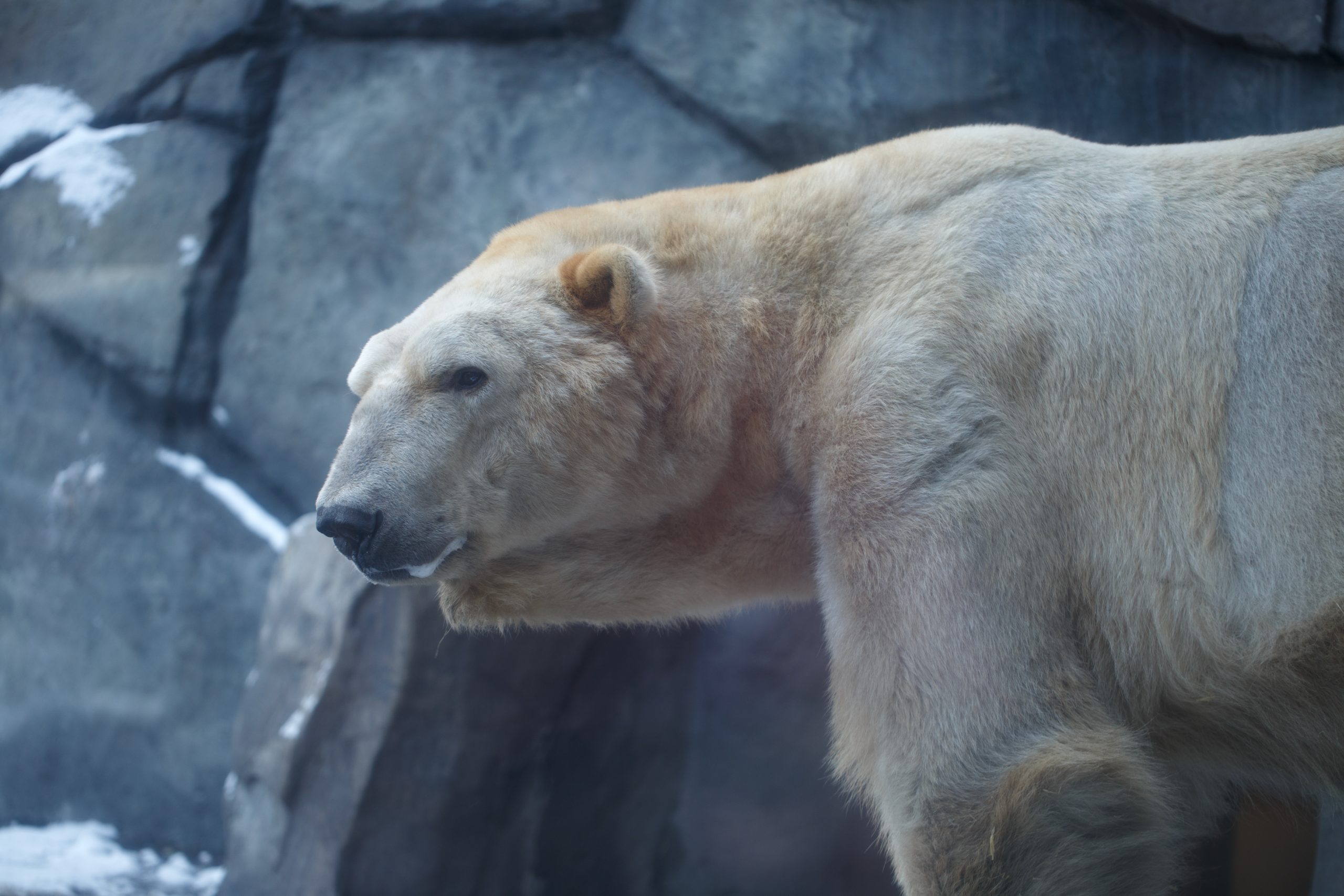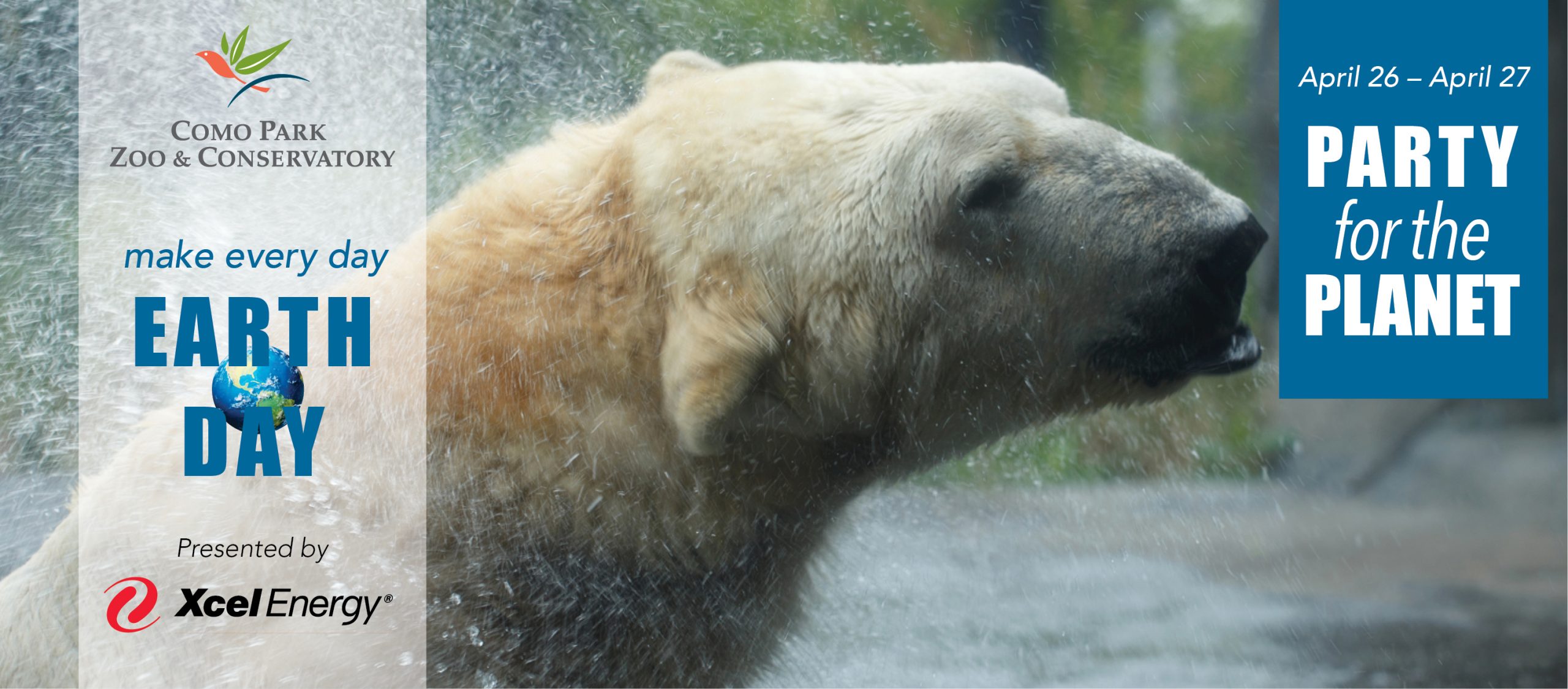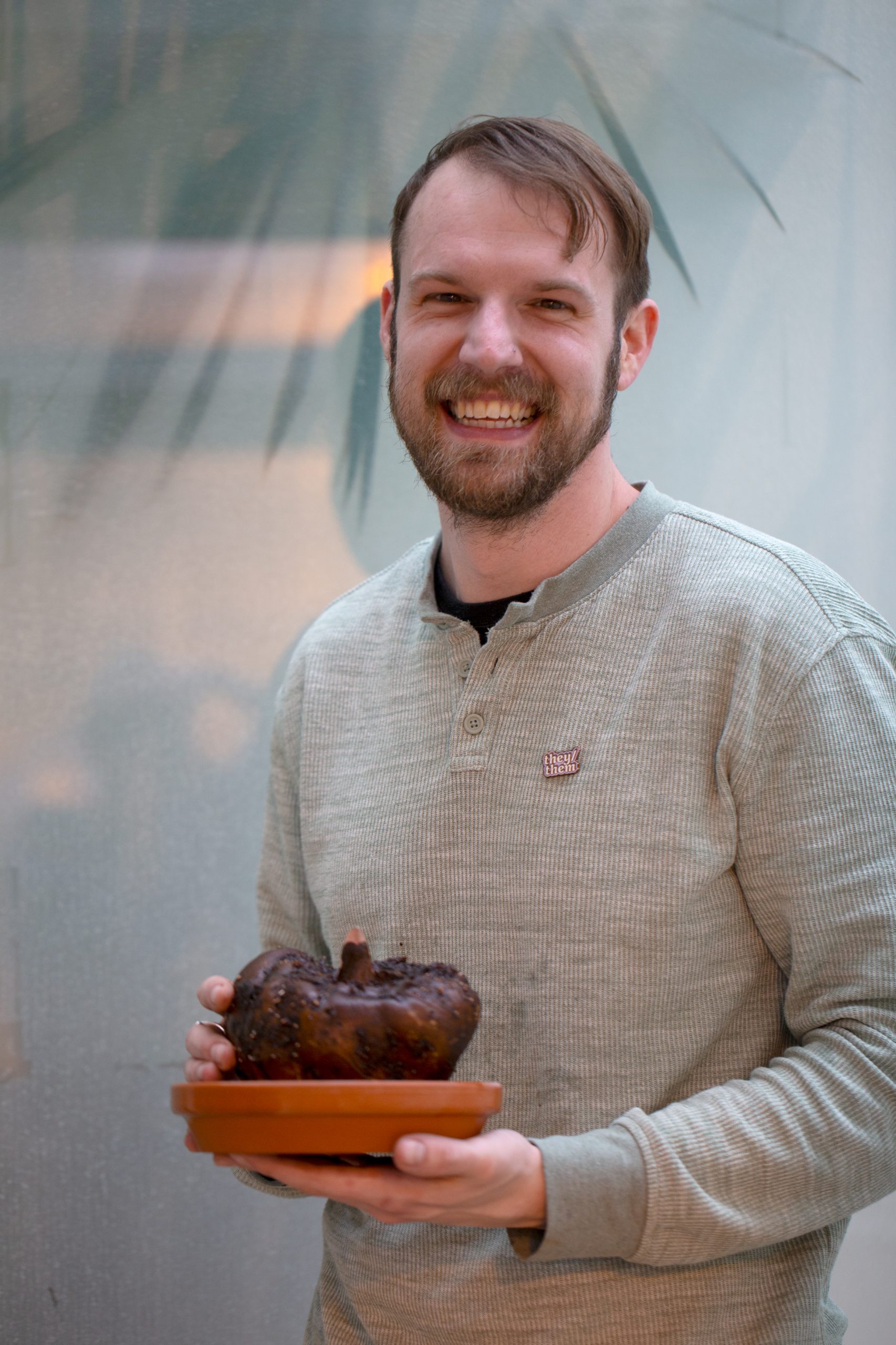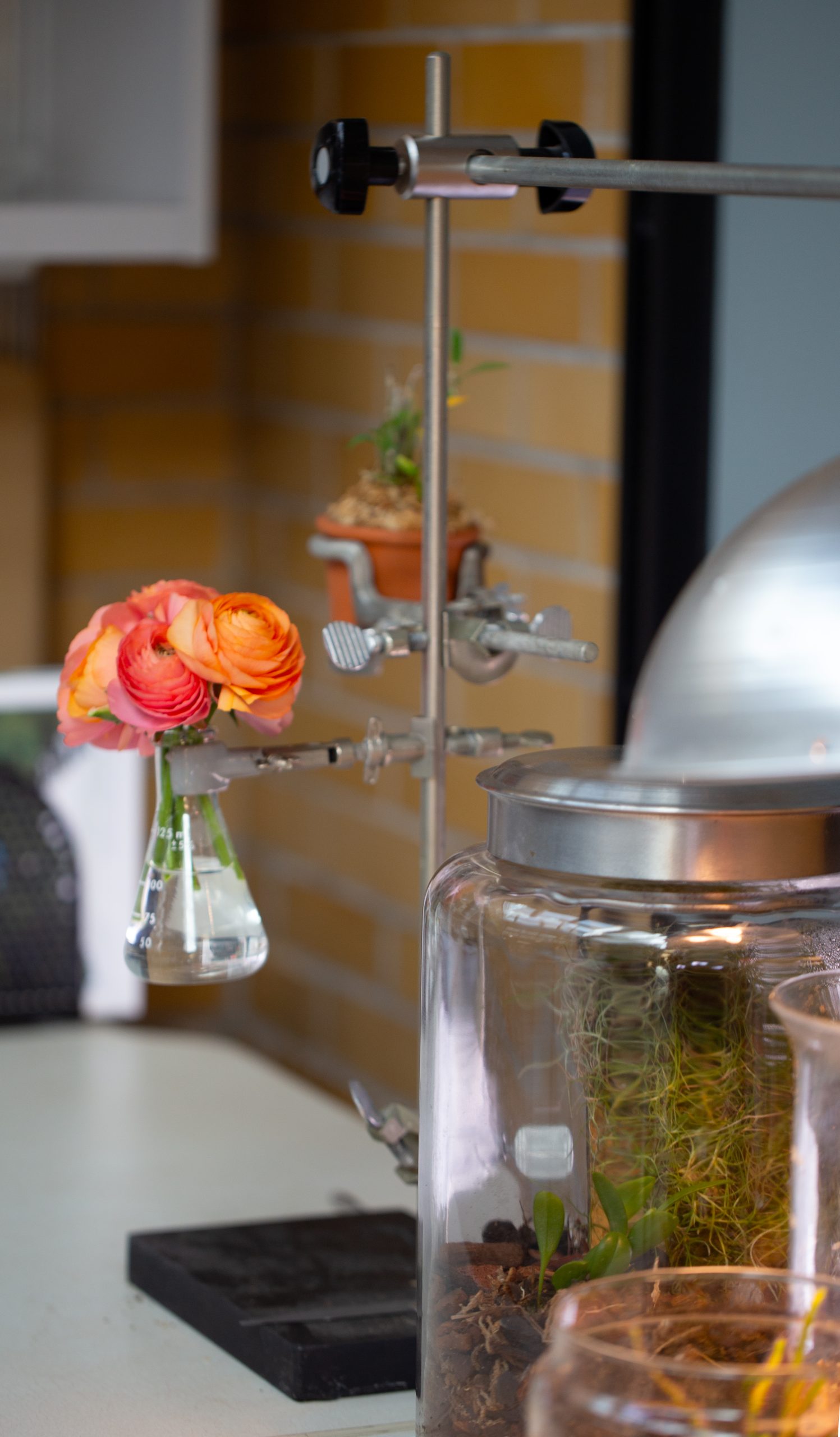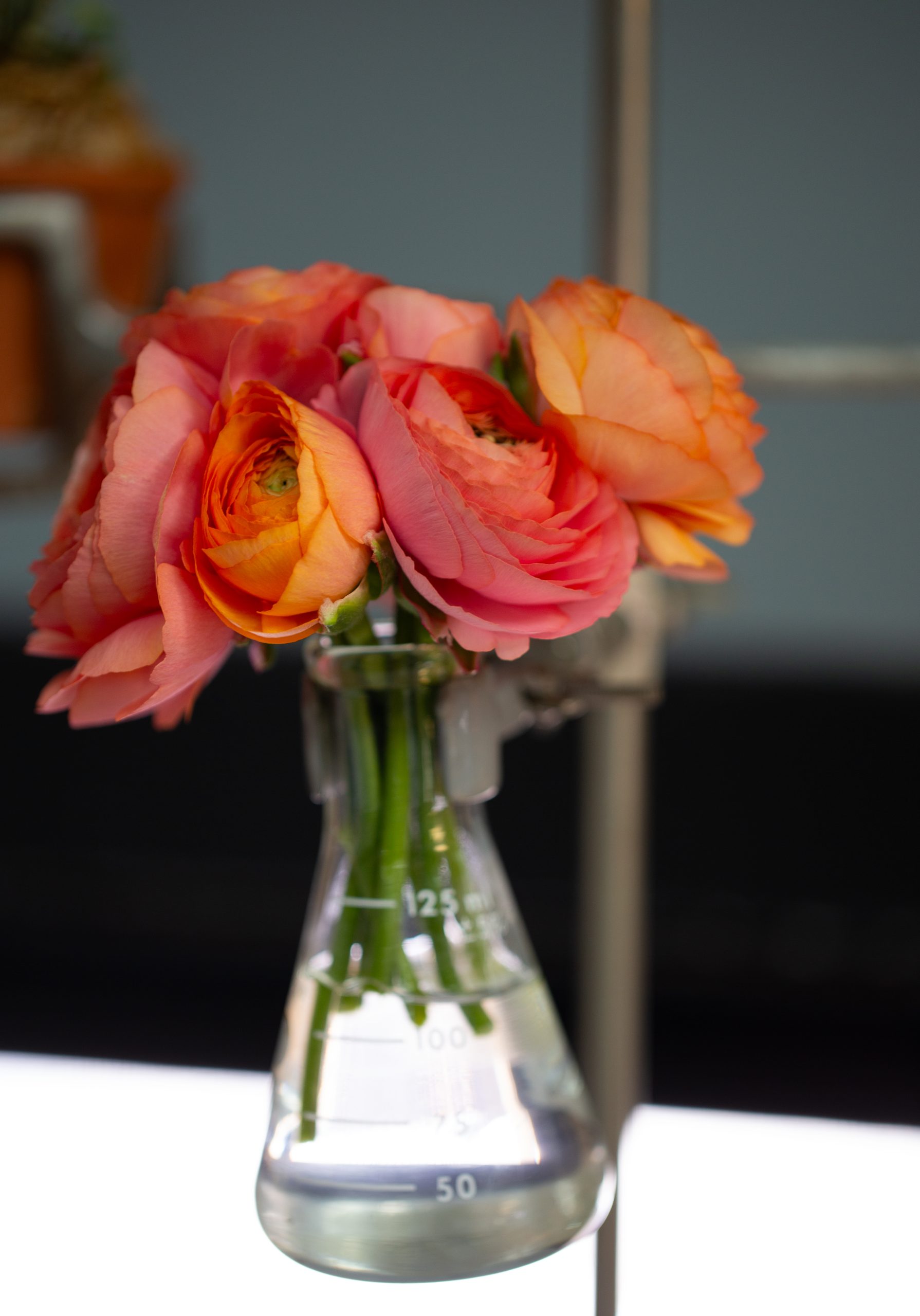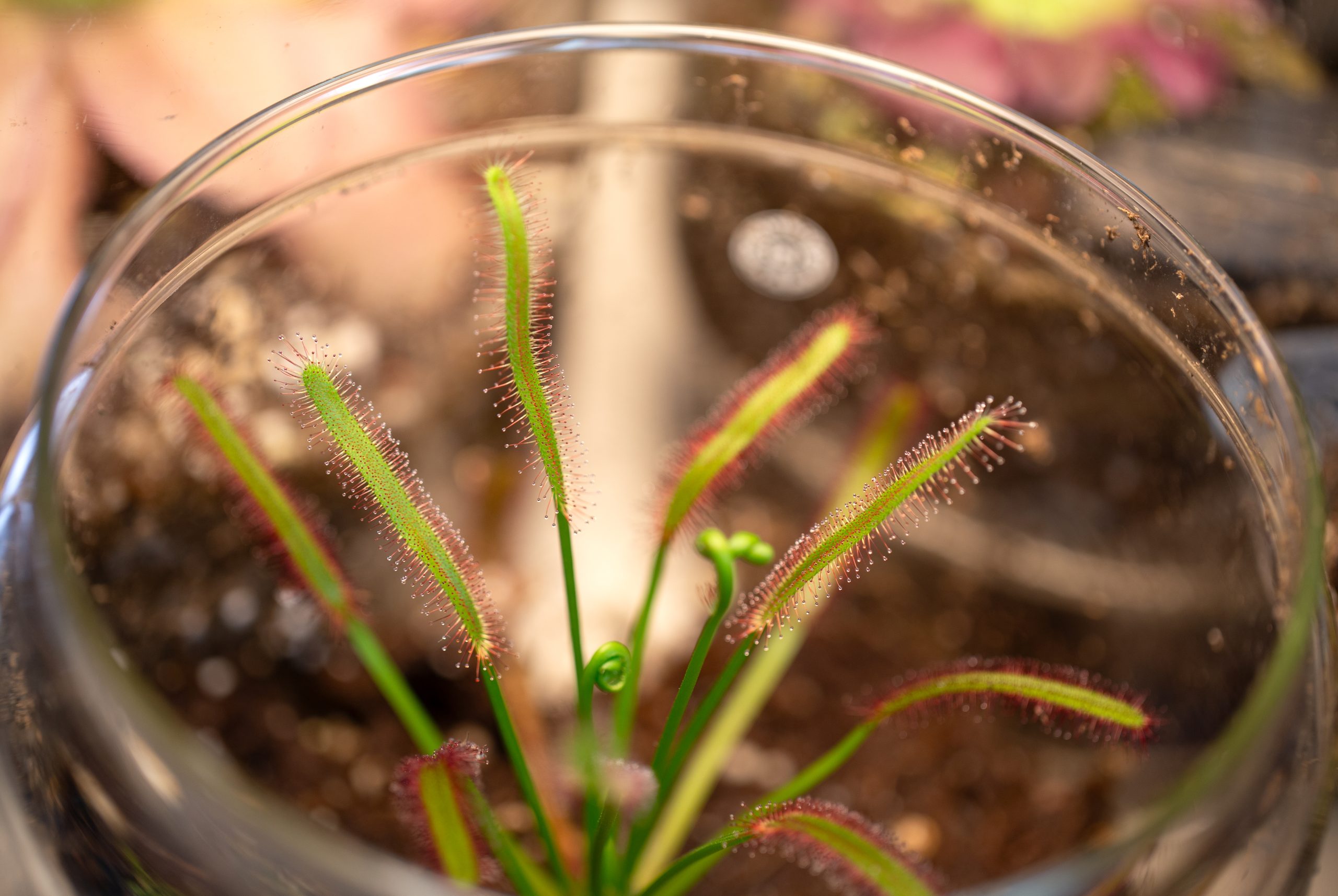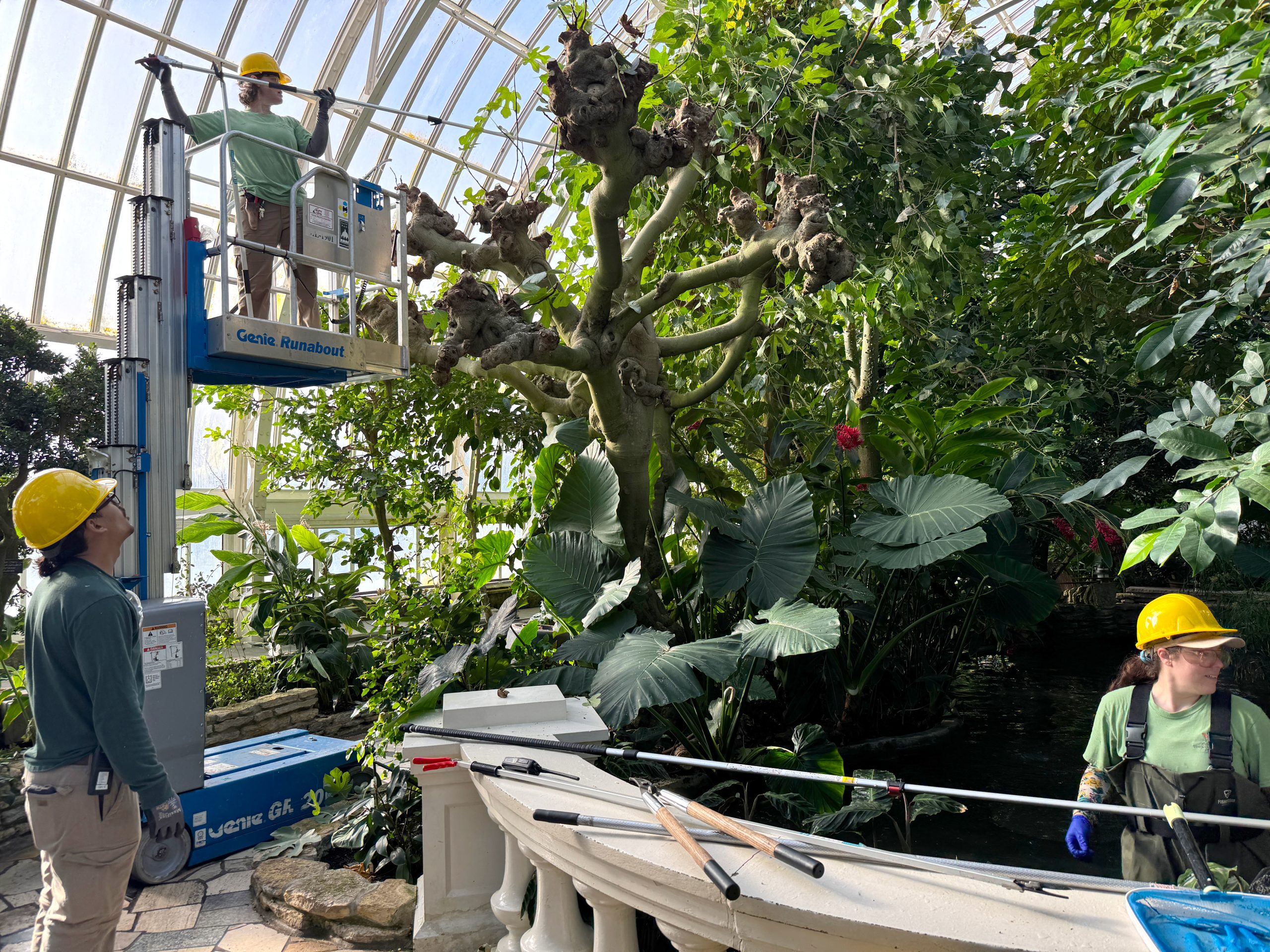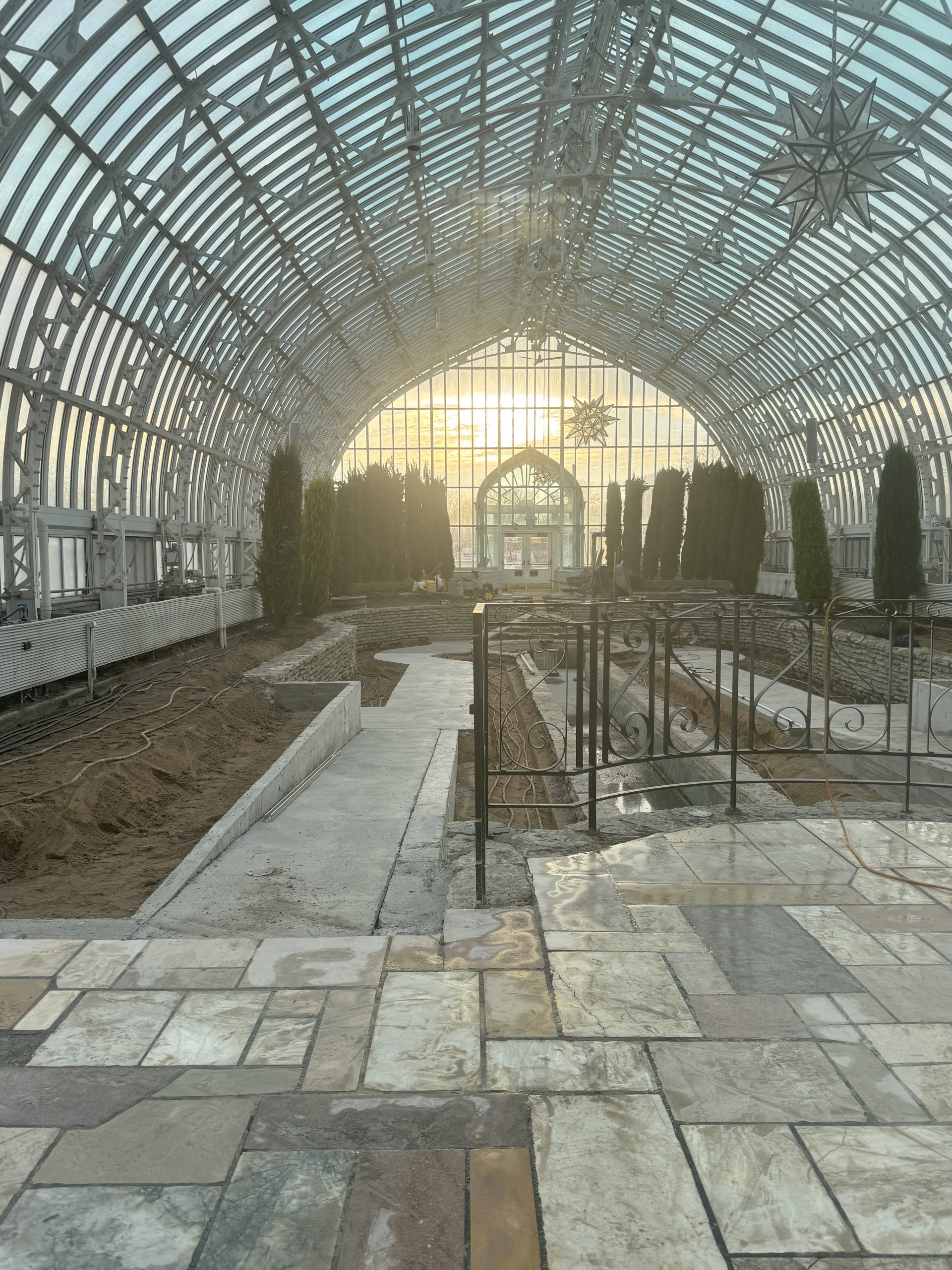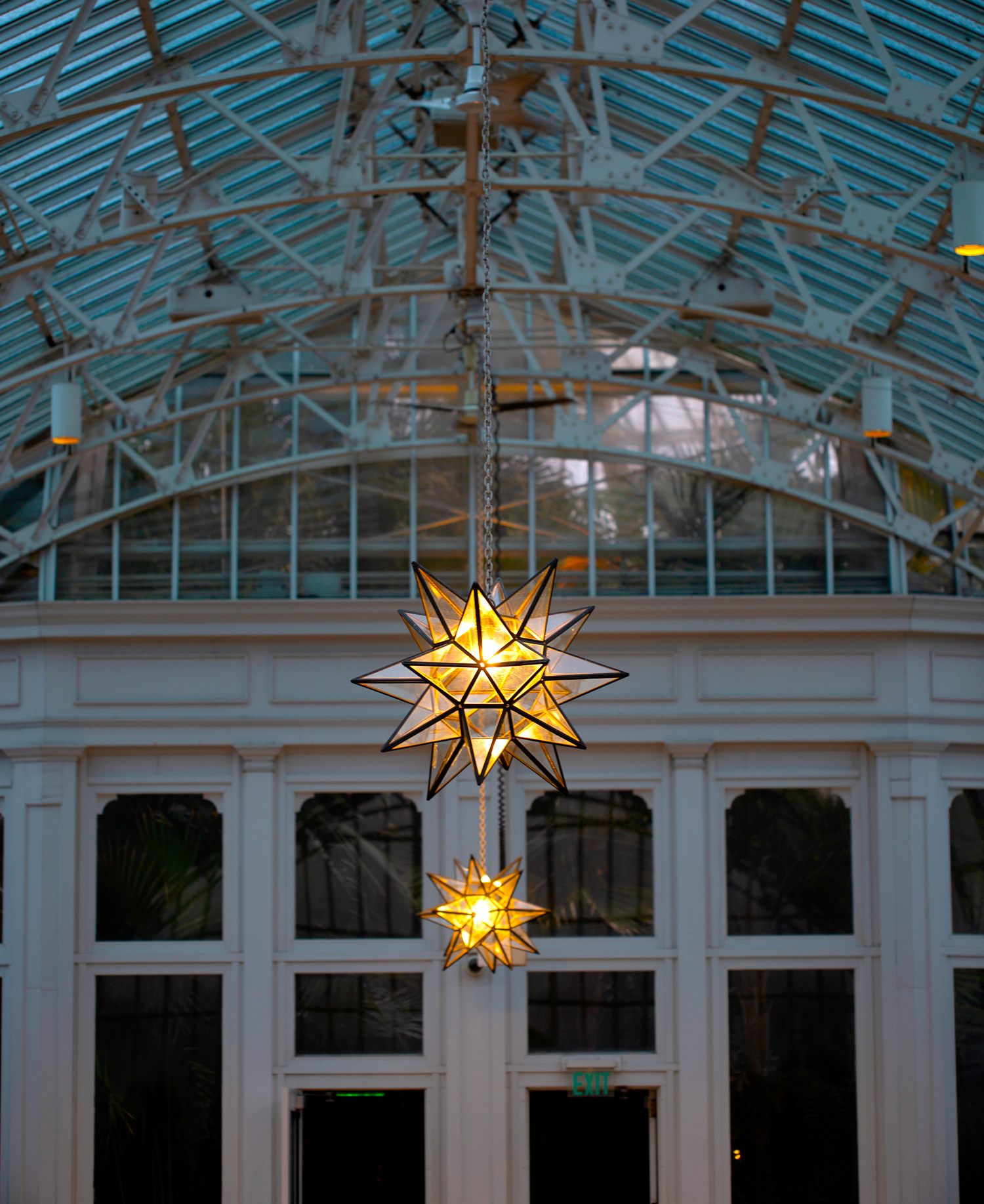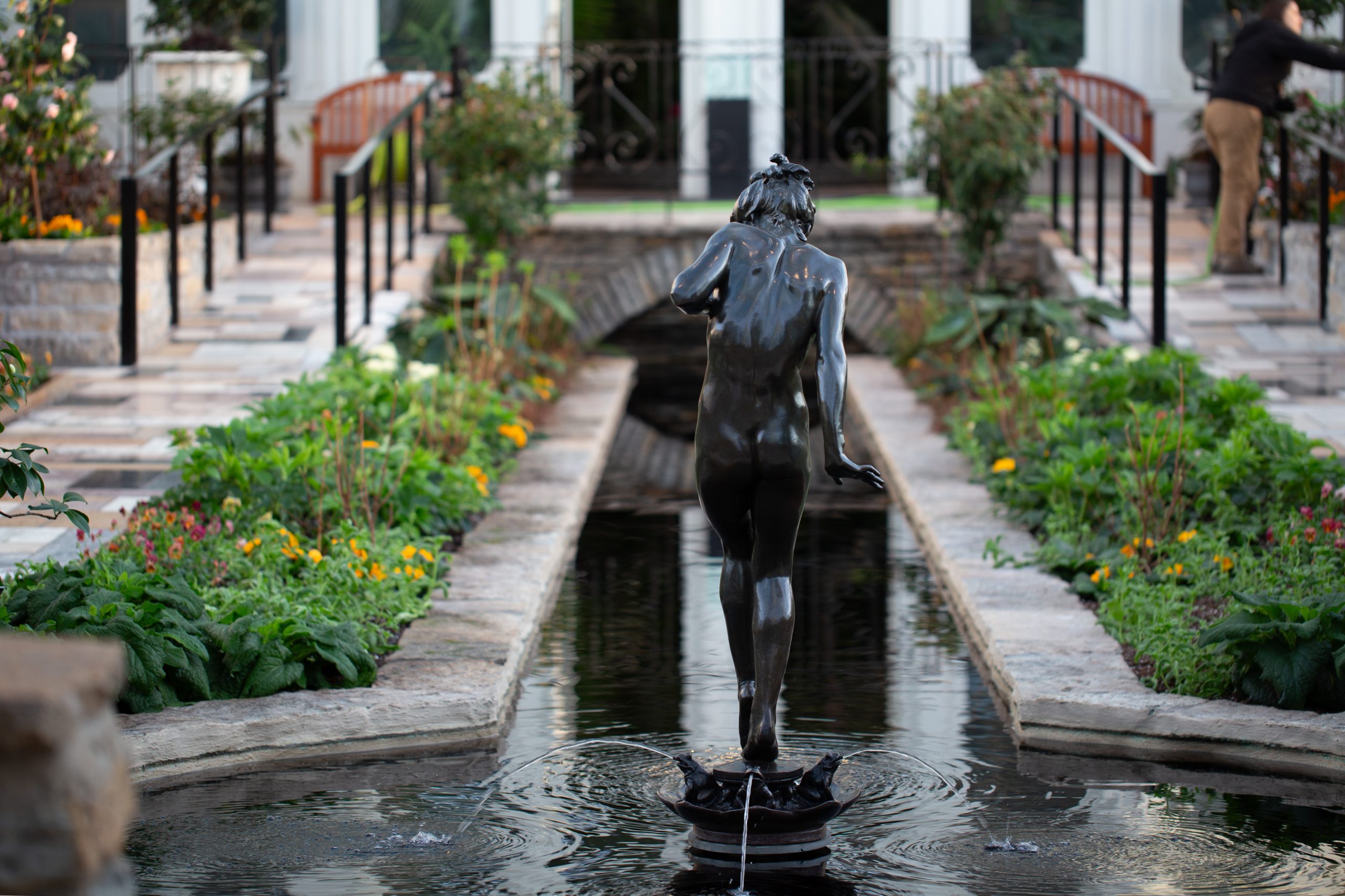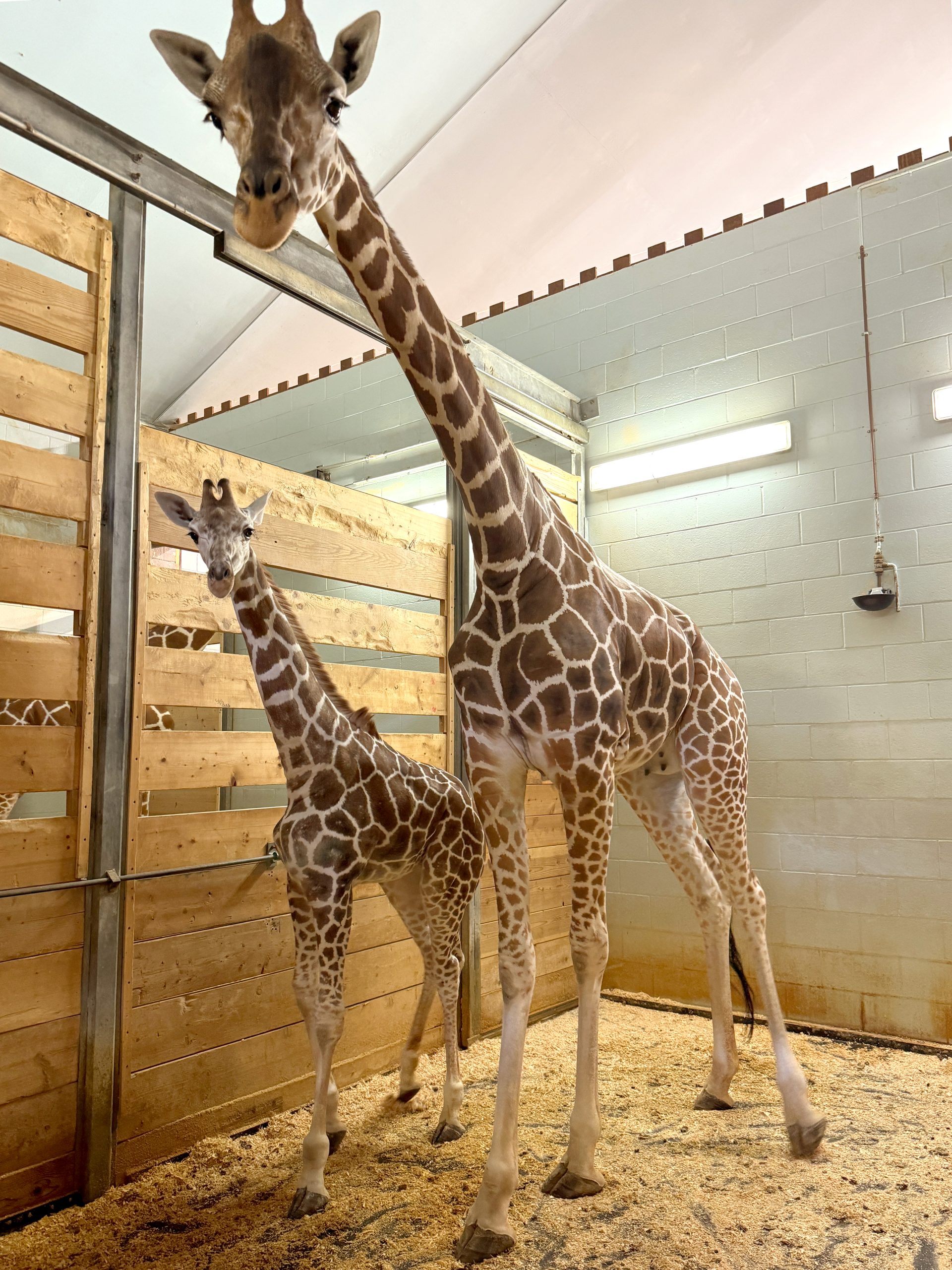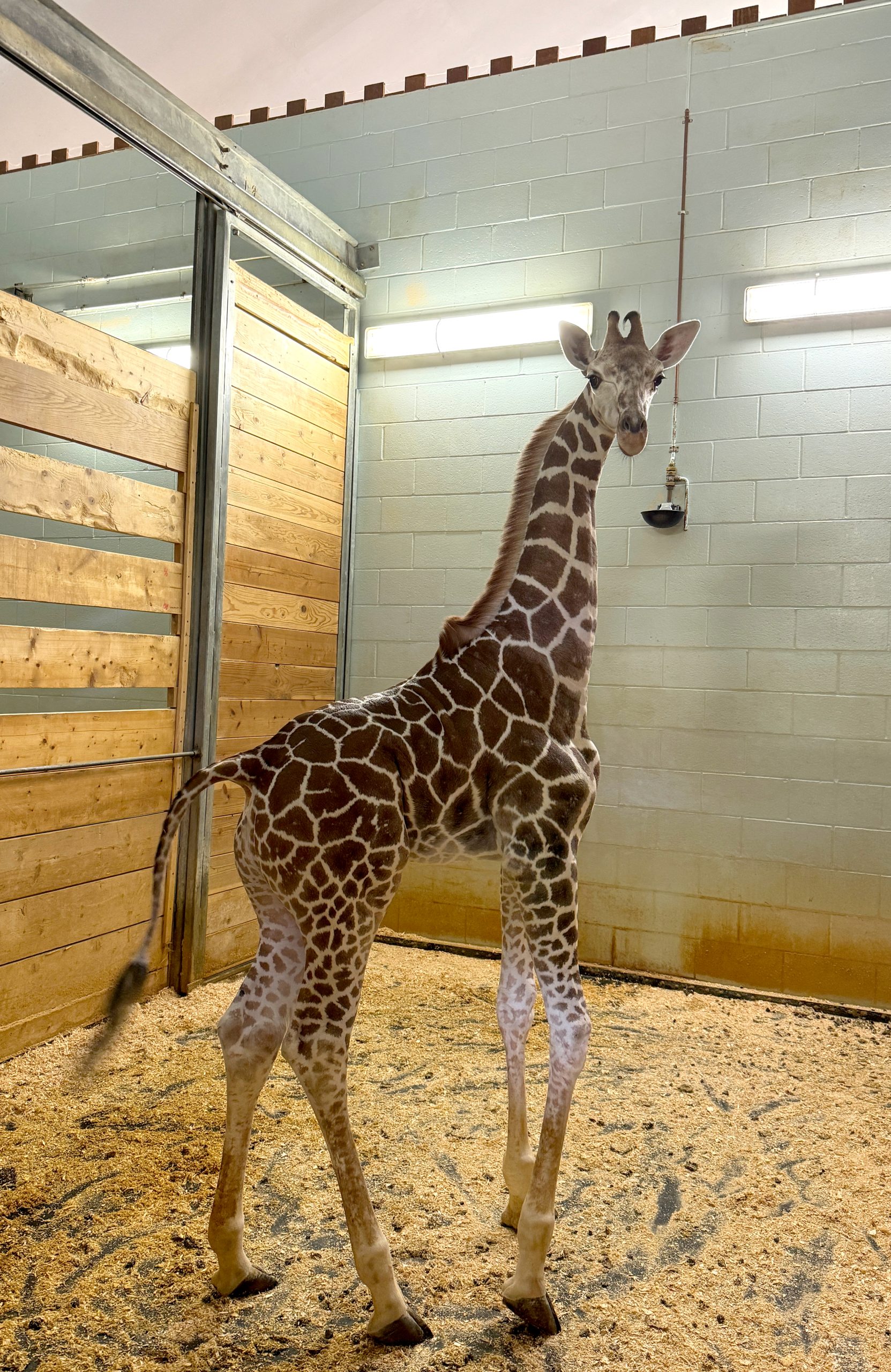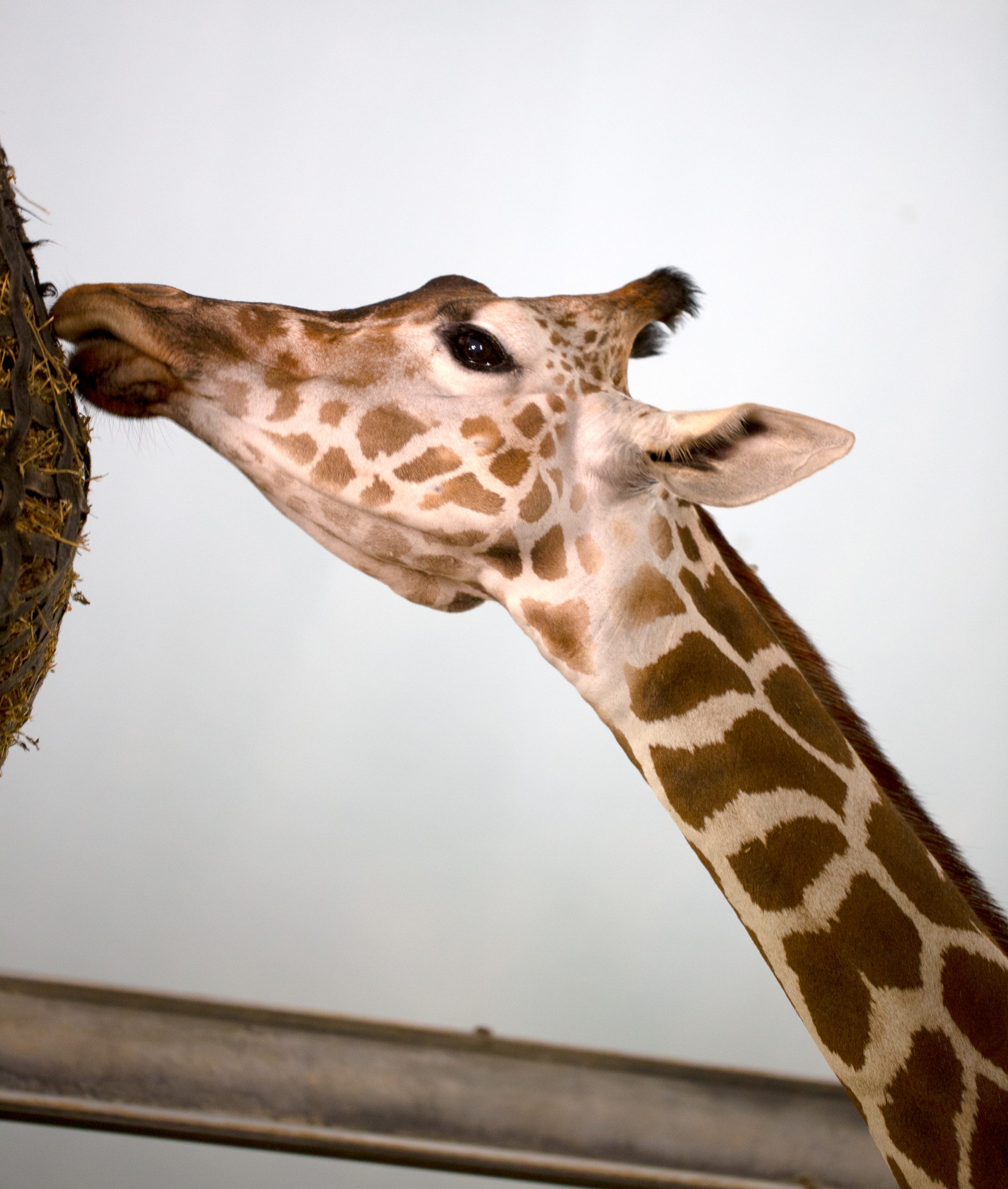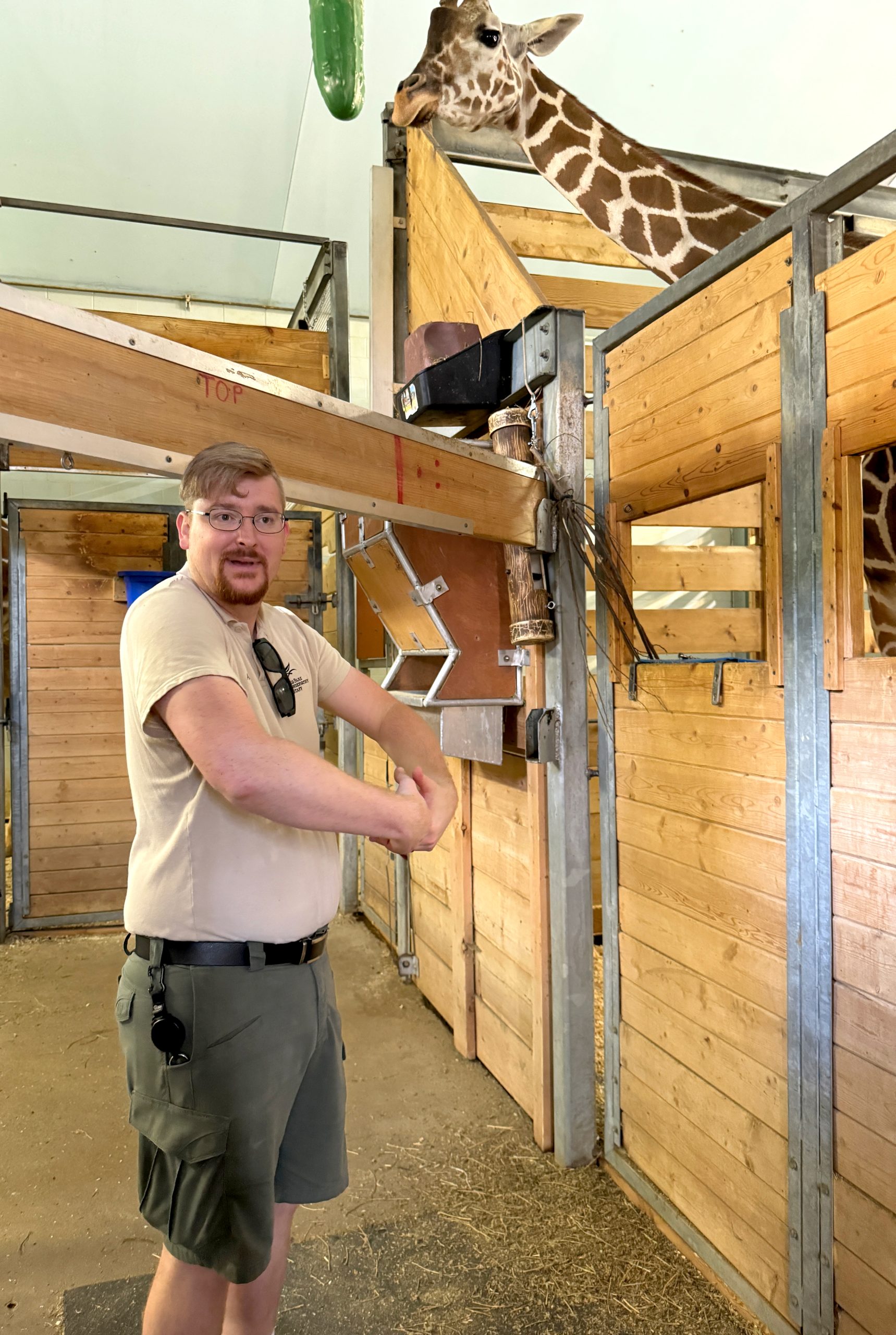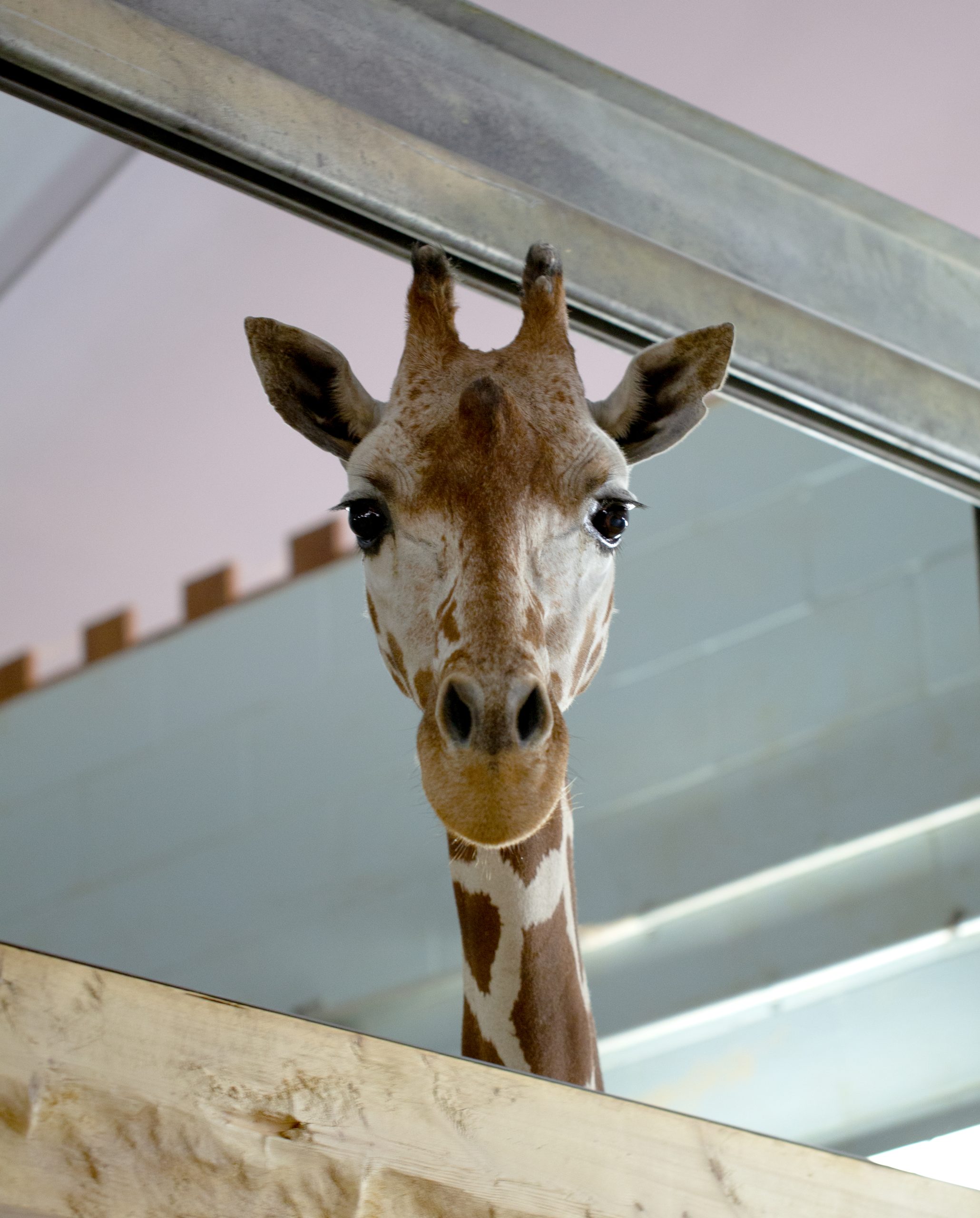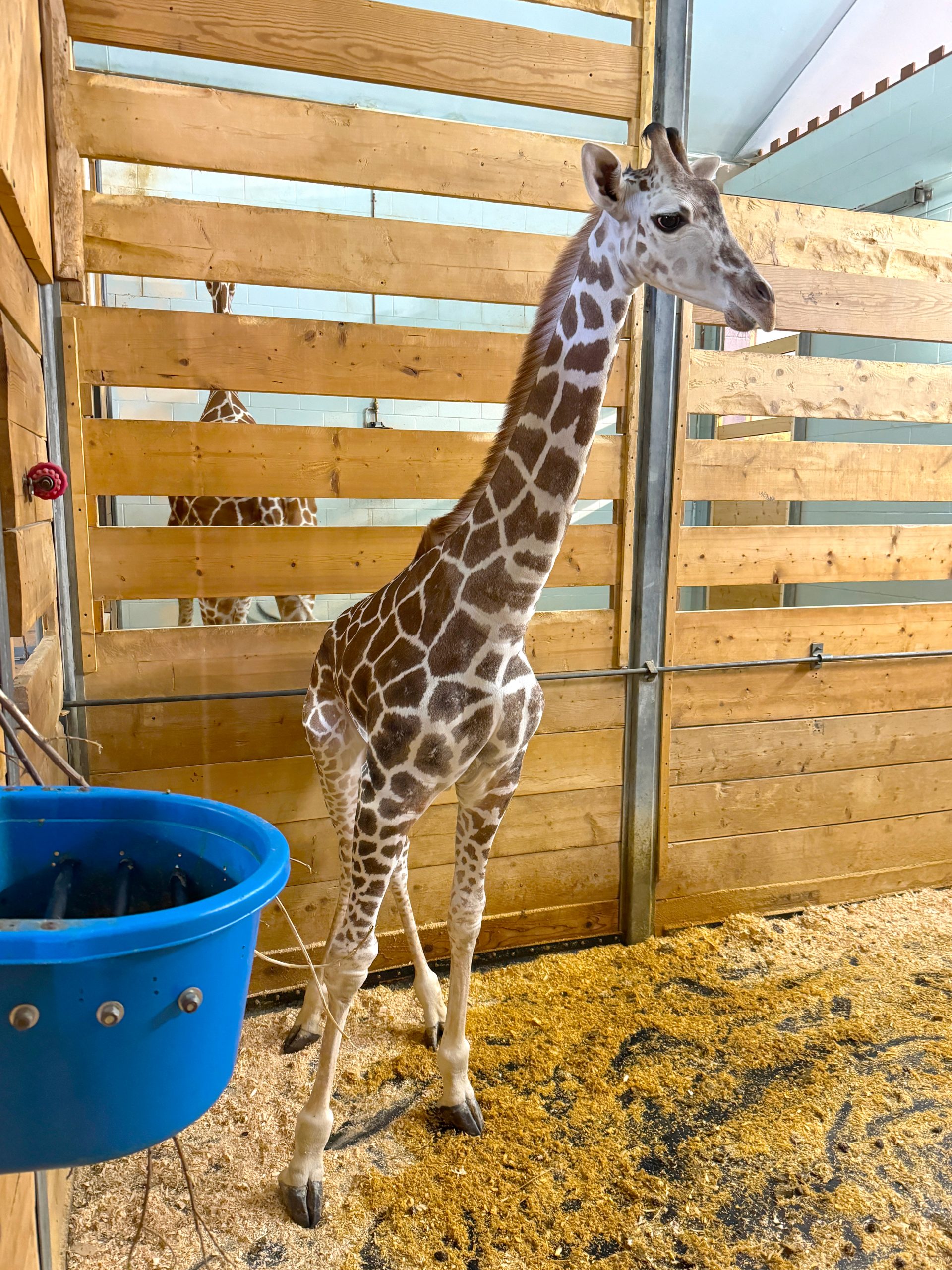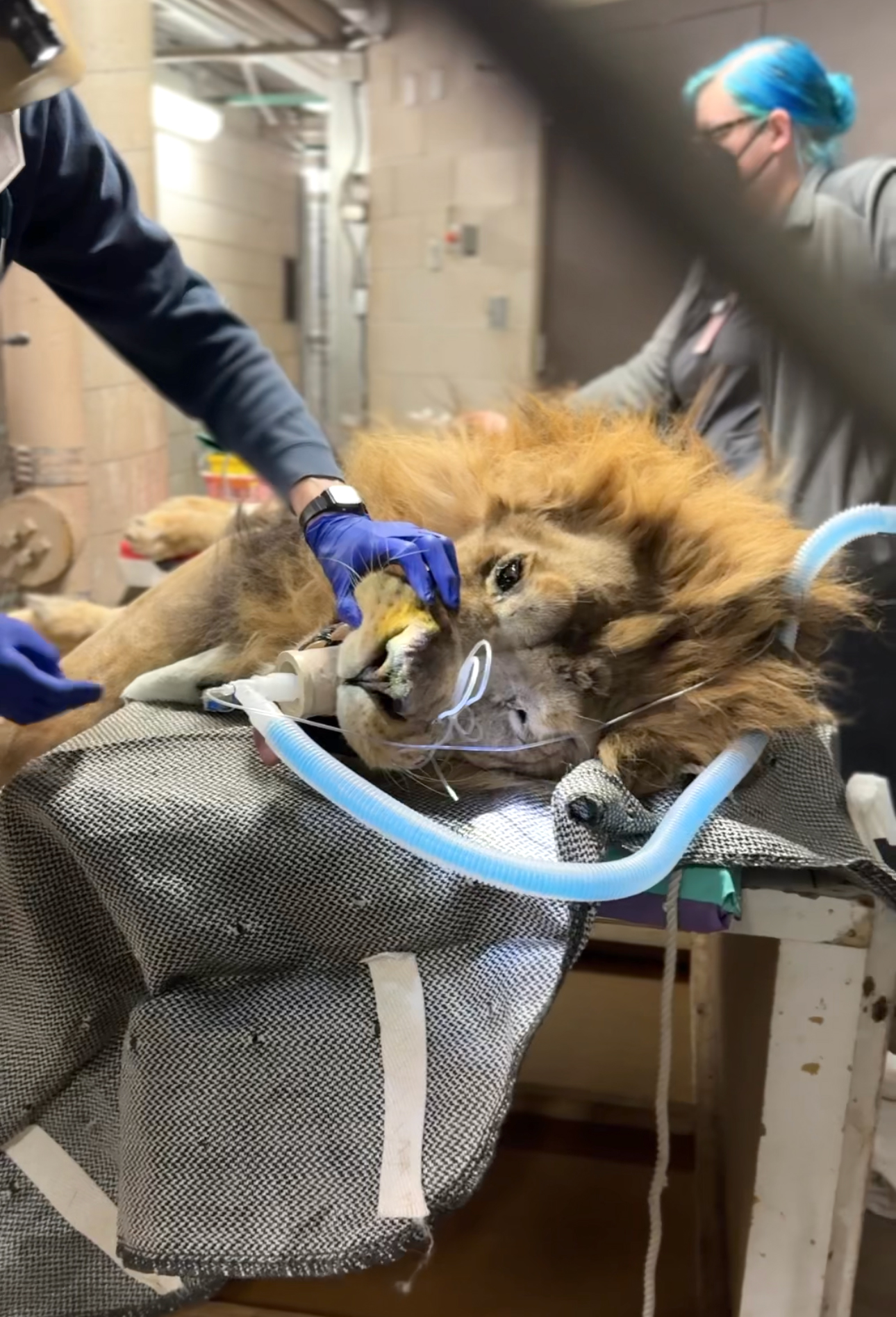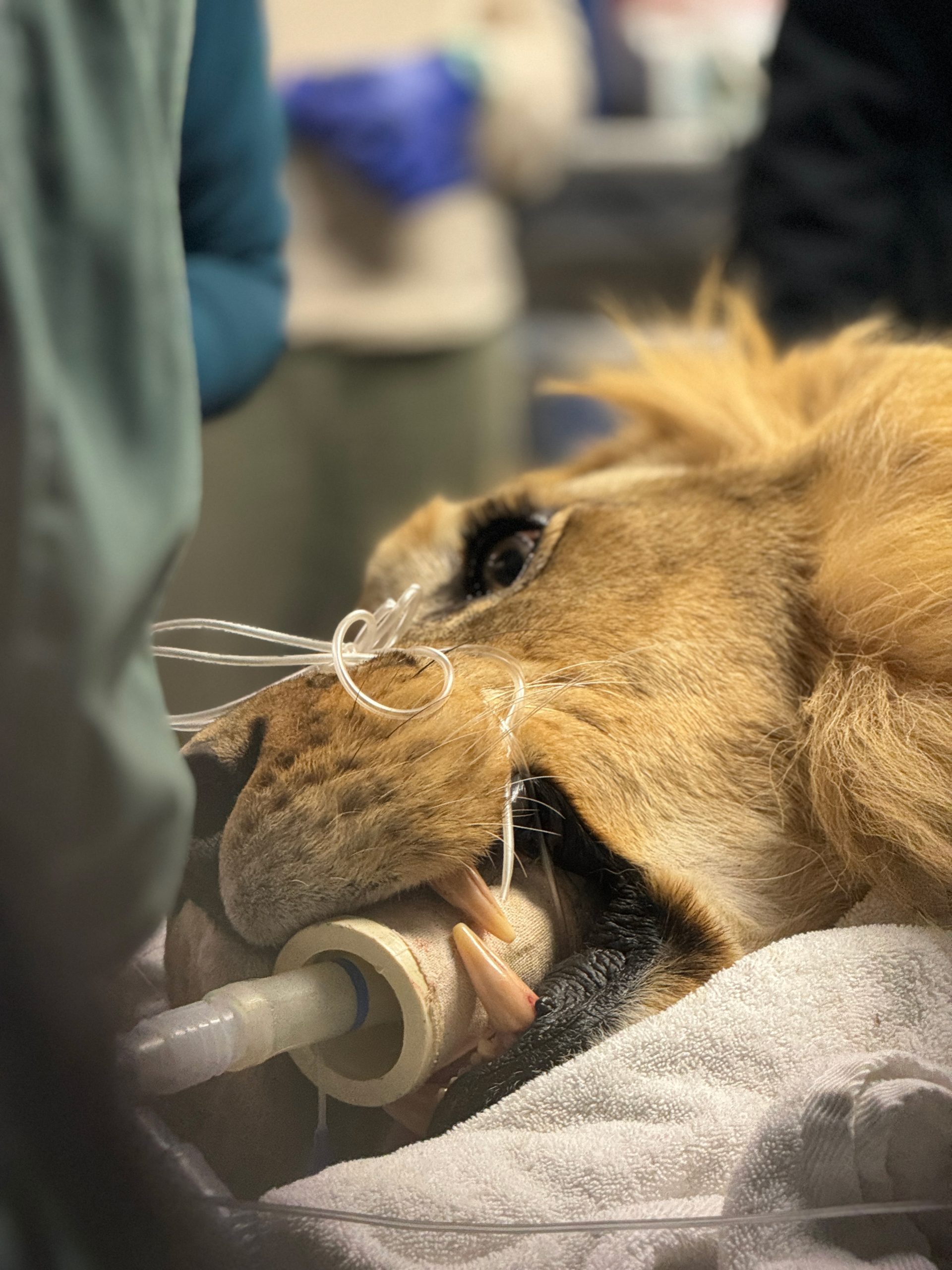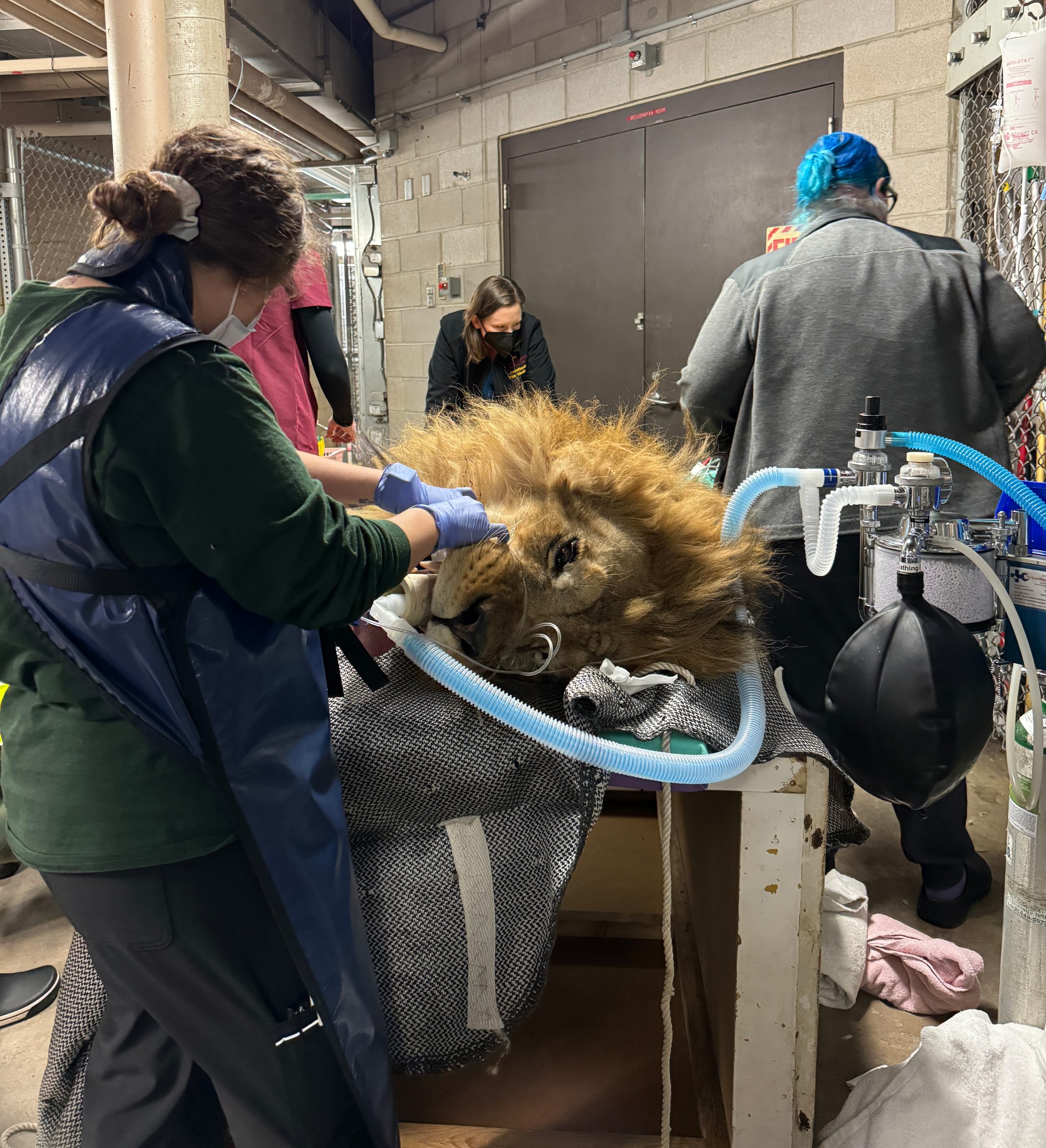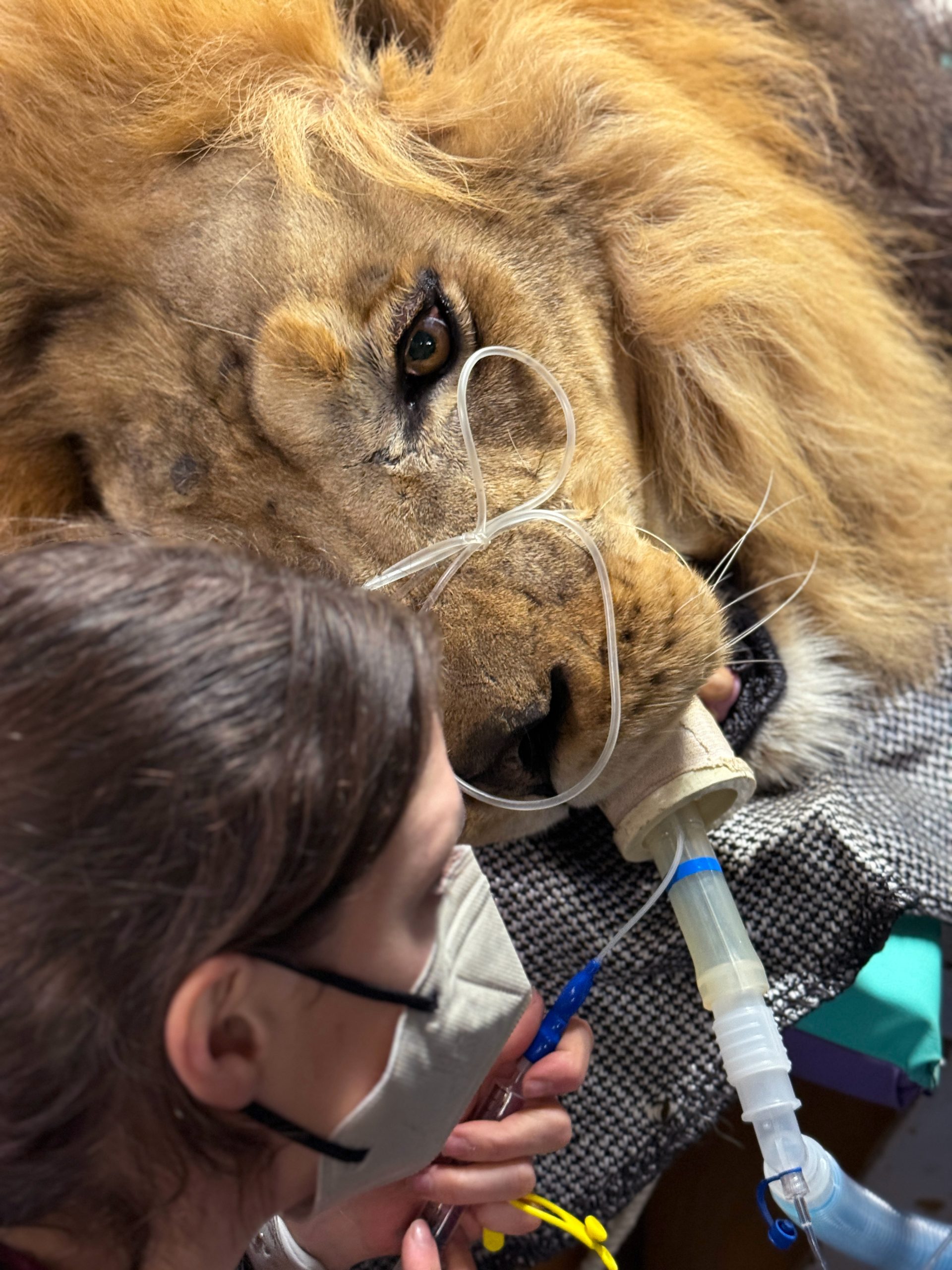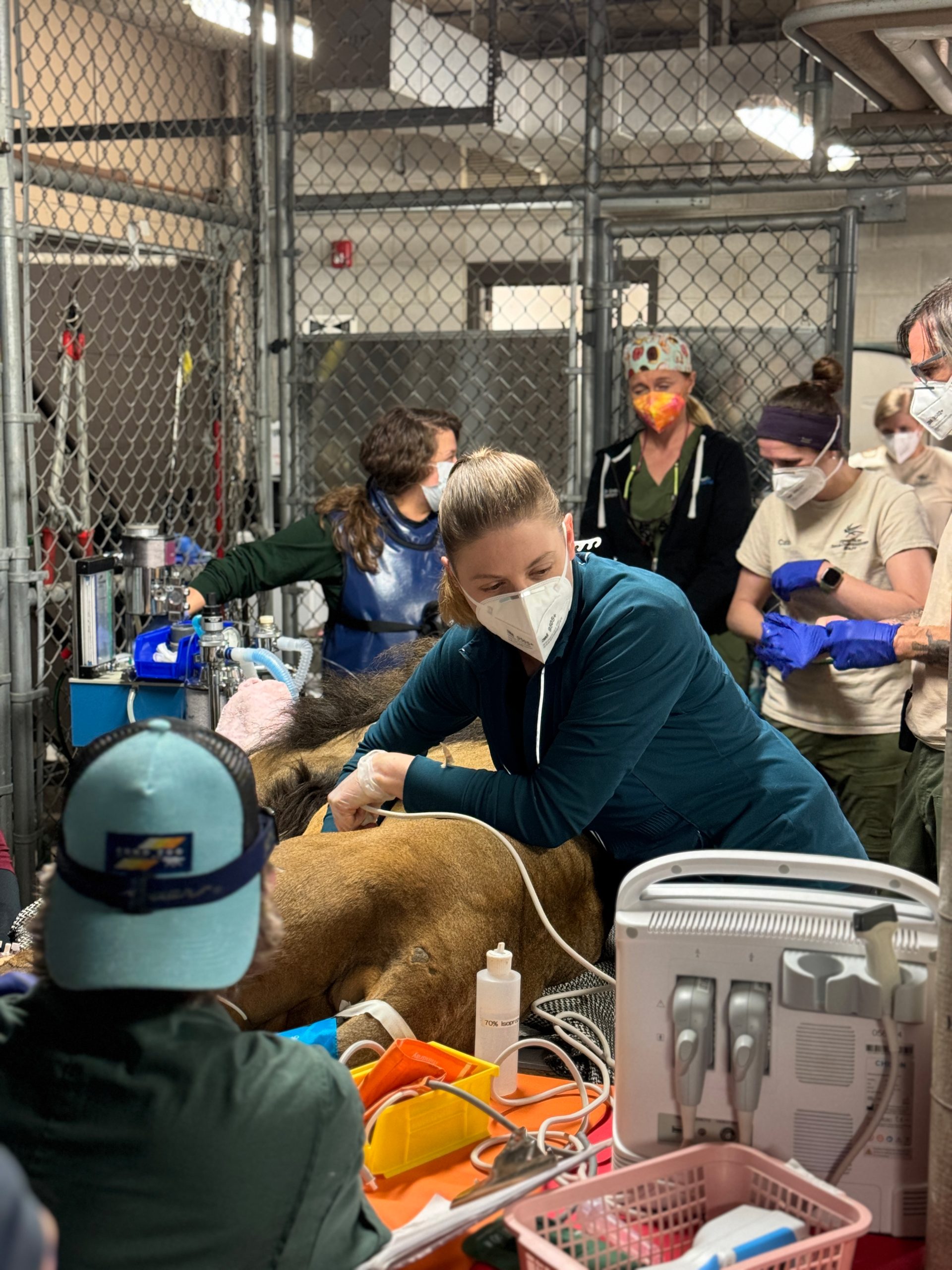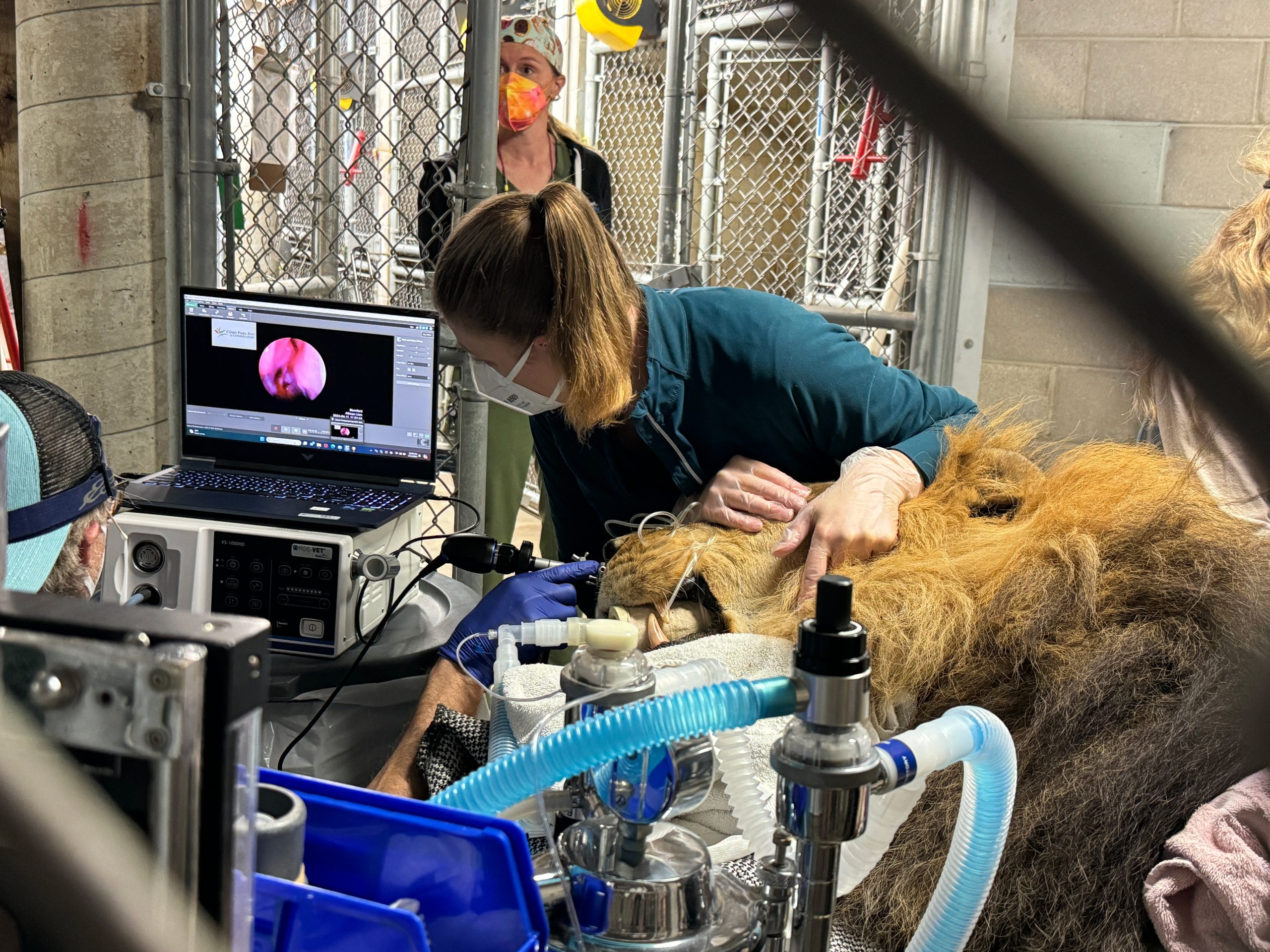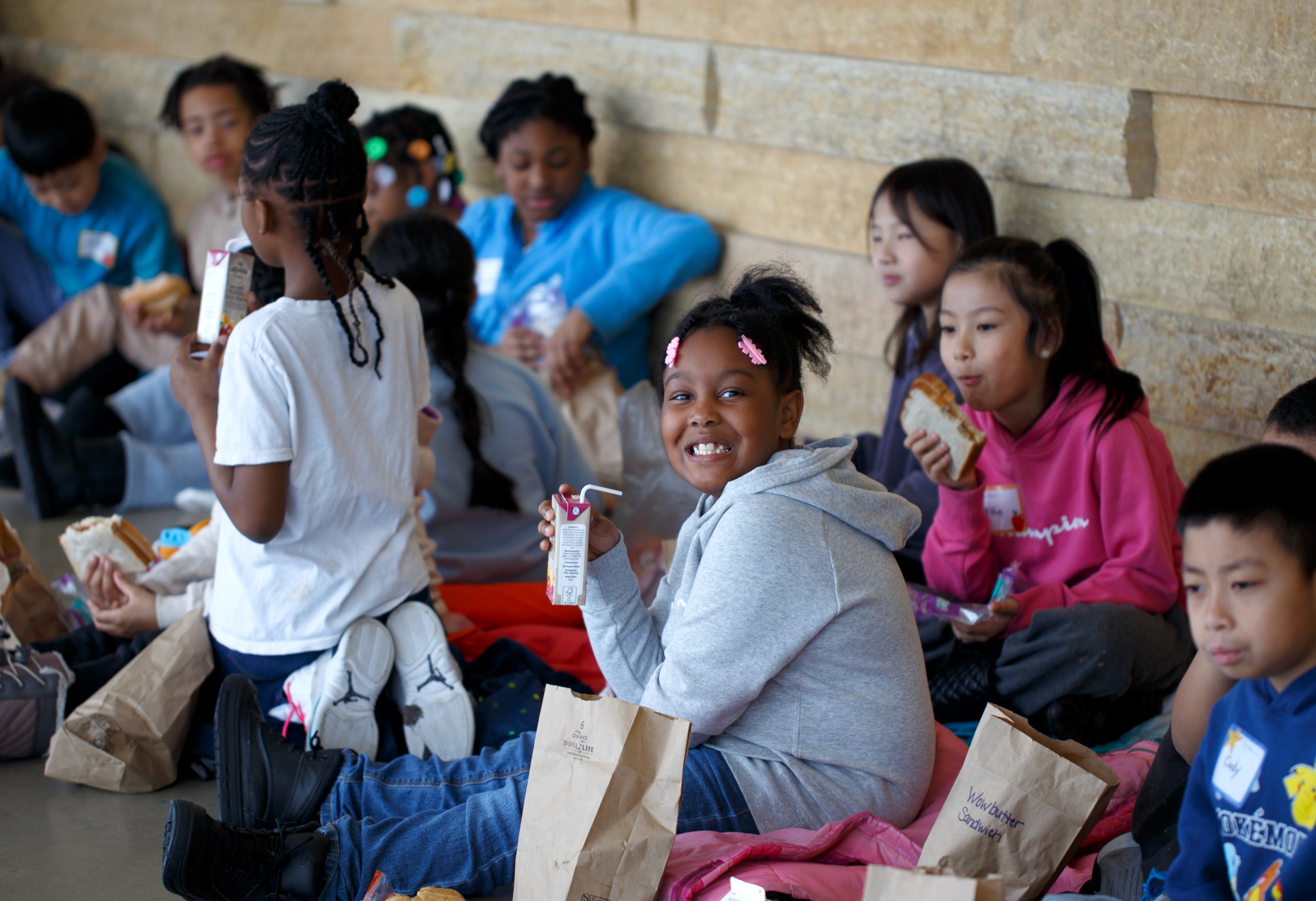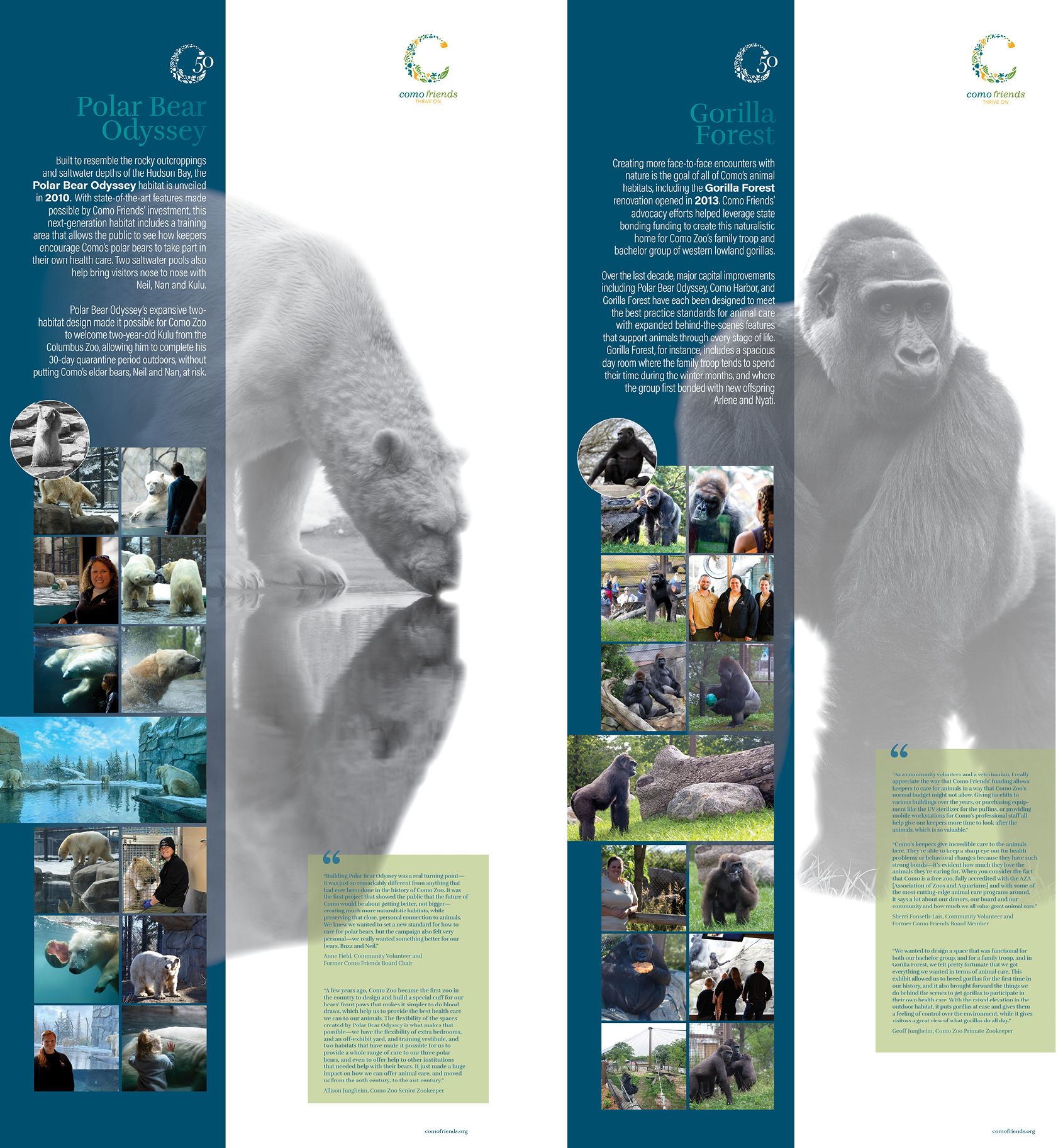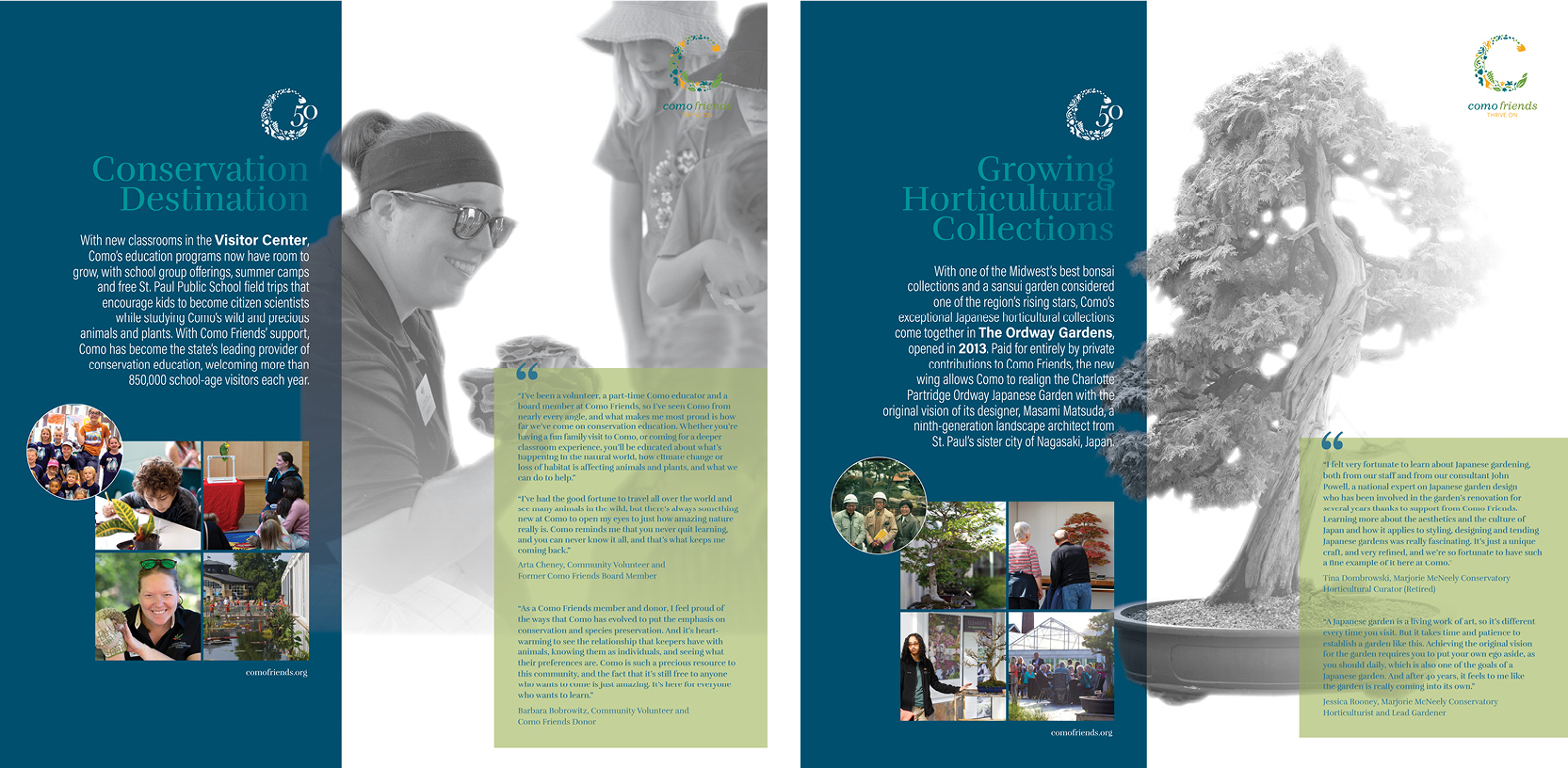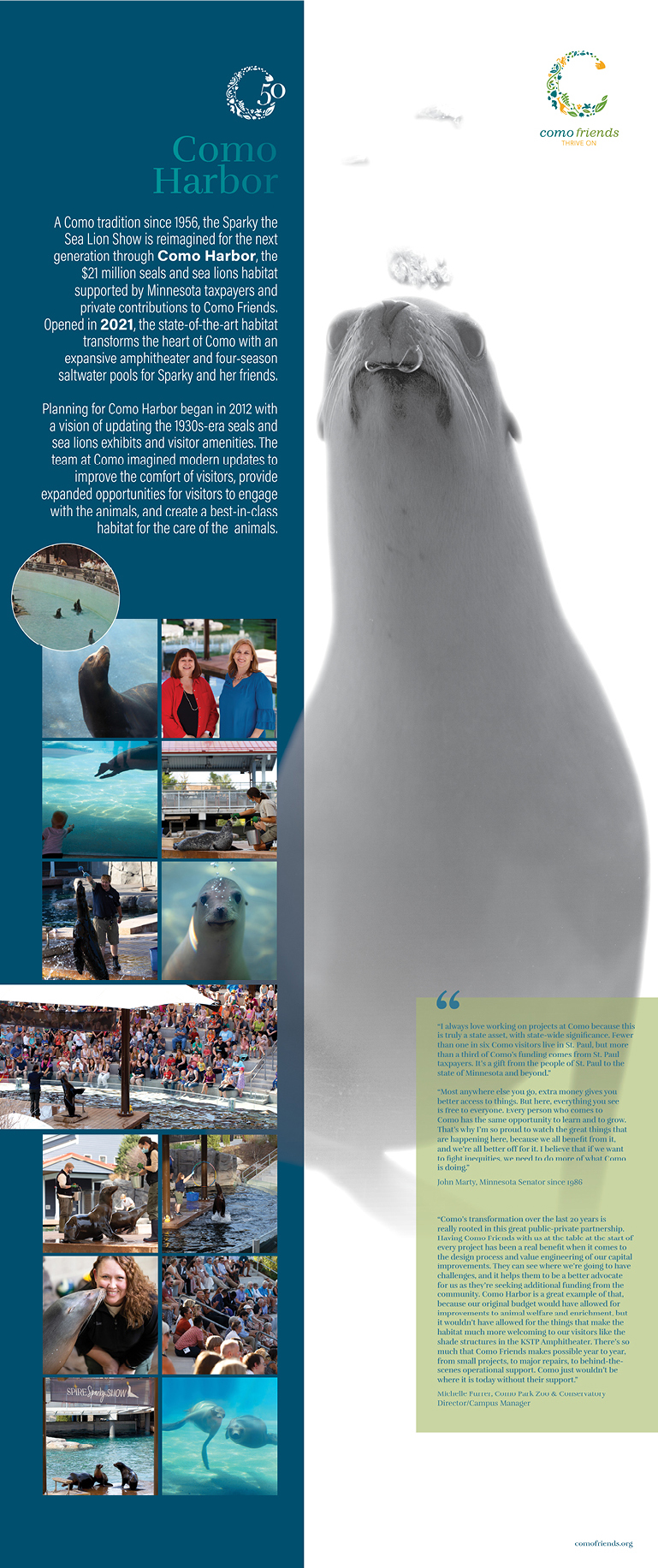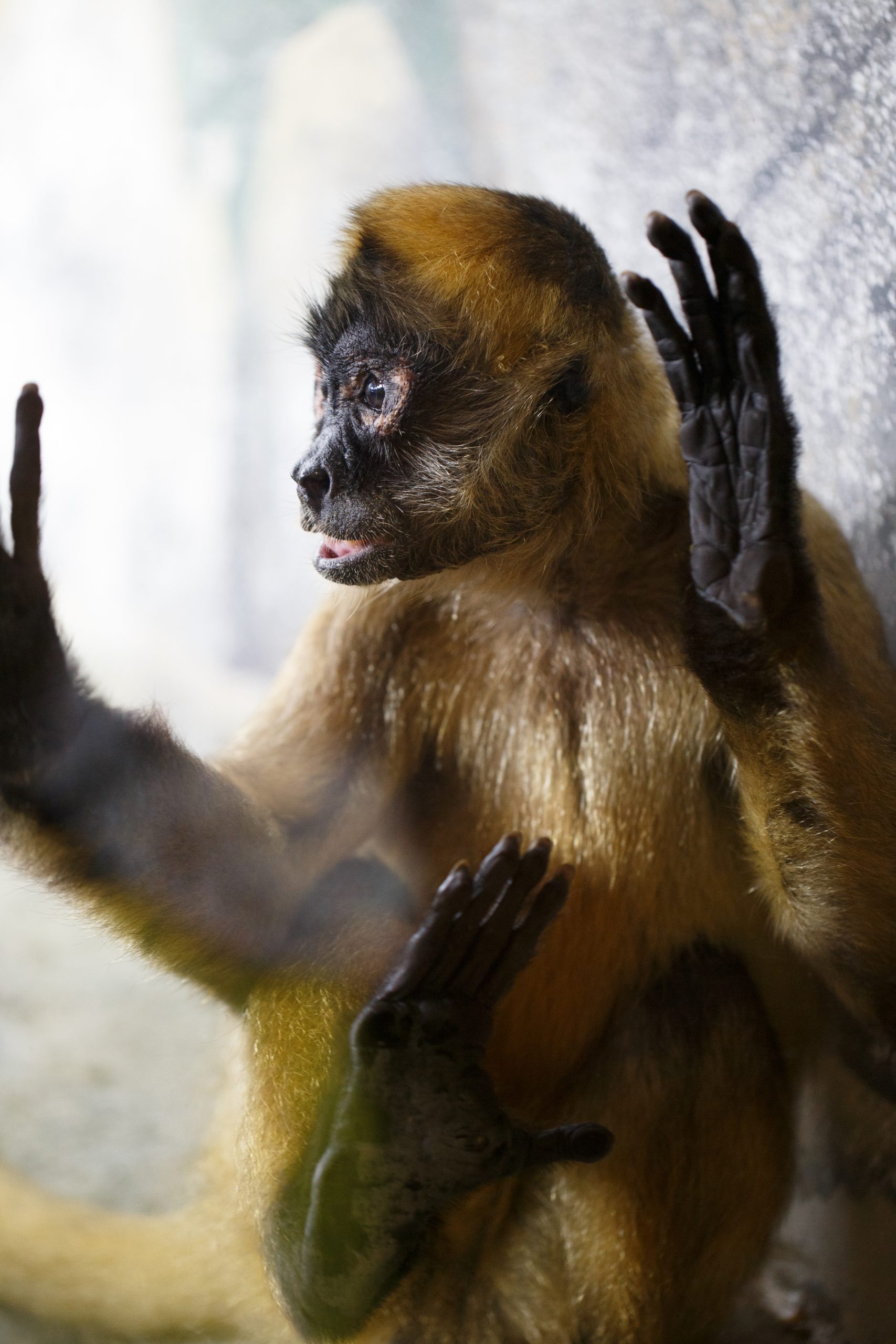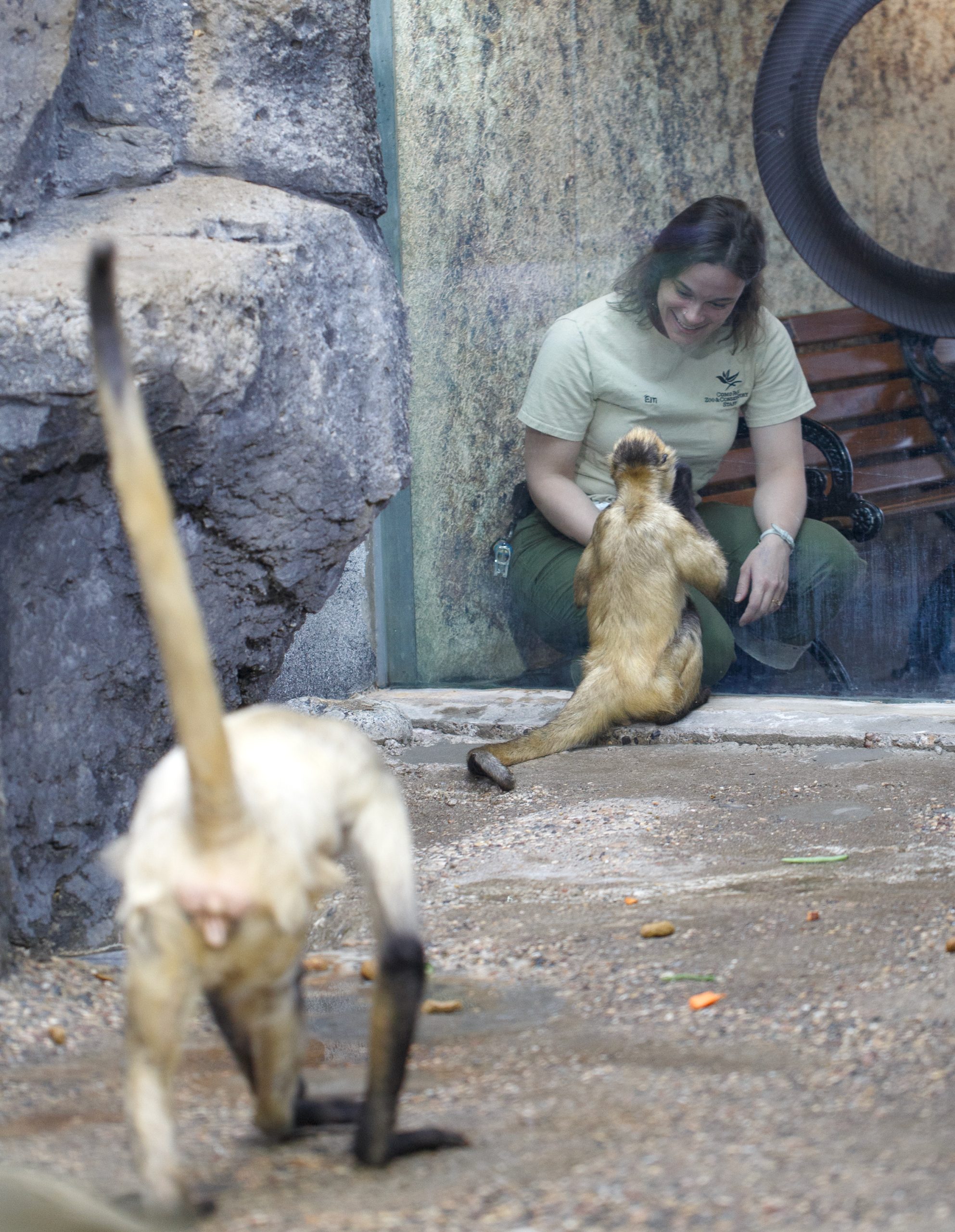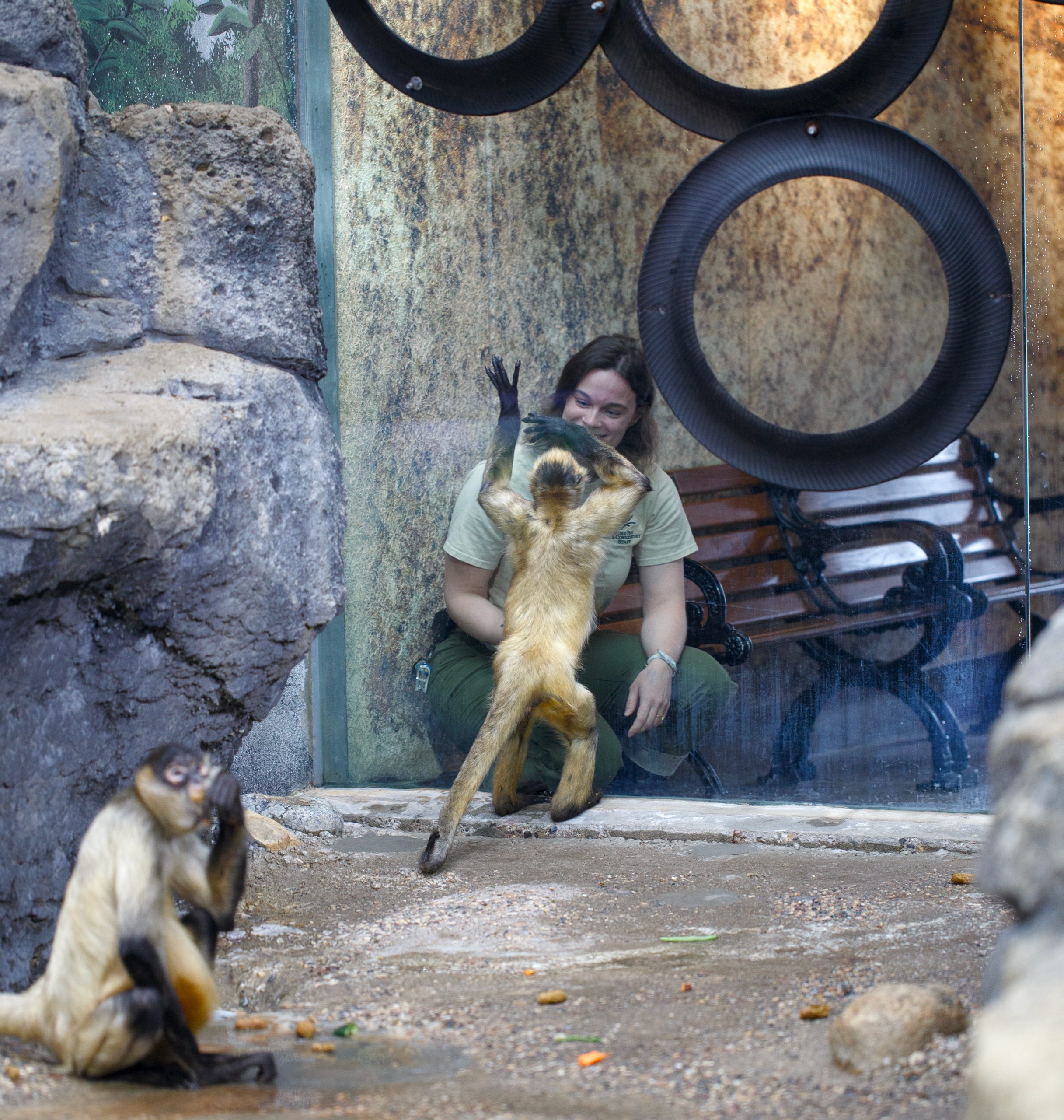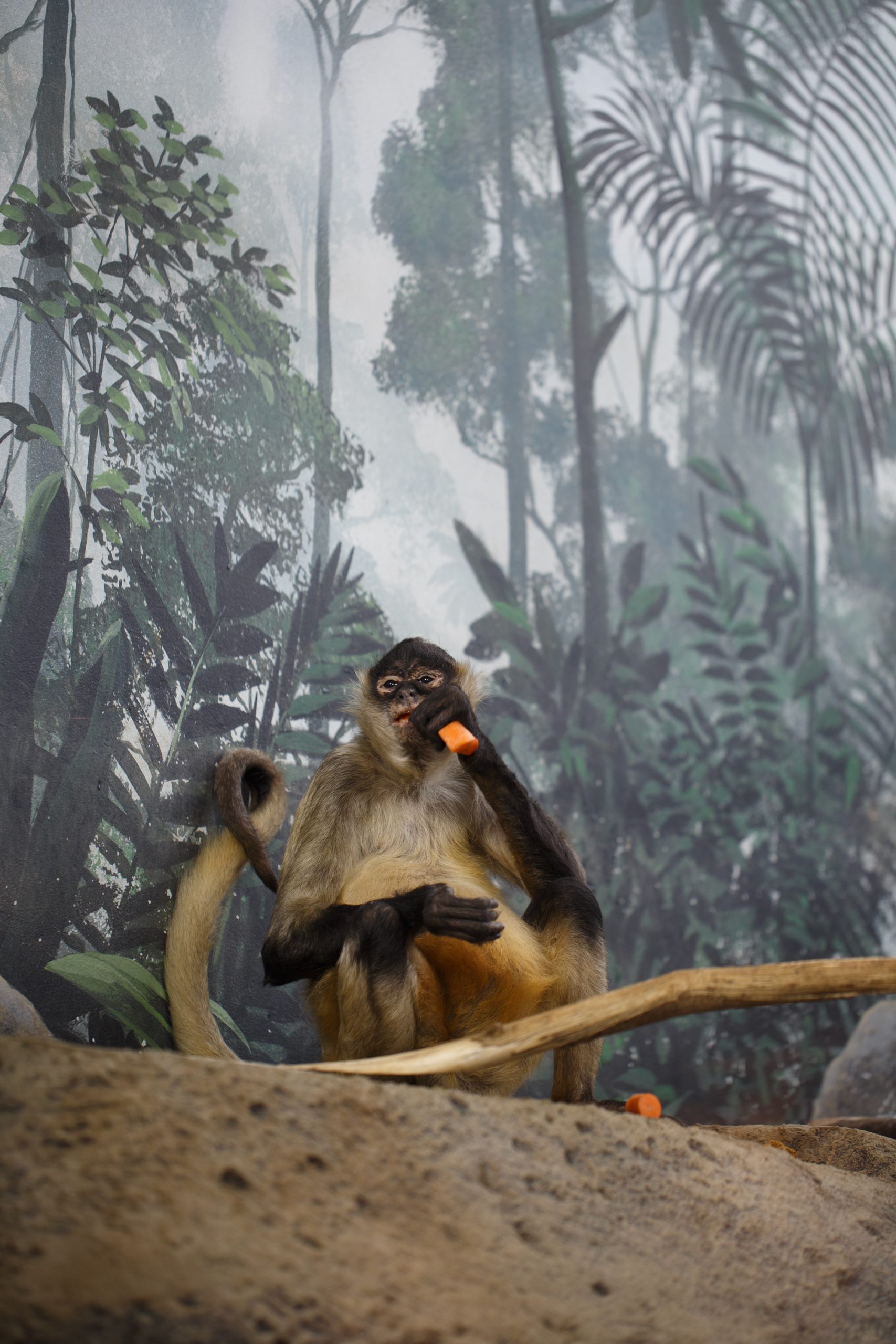Como Friends’ board of directors is pleased to announce the appointment of Katie Hill as its next president, effective July 14, 2025.

“Katie brings a rare blend of creativity, strategy, and heart,” says Andy Davis, board chair of Como Friends. “She understands what it means to lead with purpose and partnership. Her deep roots in the Twin Cities, her passion for equity and access, and her track record of innovation make her exactly the right leader to guide Como Friends into its next chapter.”
Como Friends’ board of directors is pleased to announce the appointment of Katie Hill as its next president, effective July 14, 2025. Hill succeeds Jackie Sticha, whose 25 years of visionary leadership transformed Como Friends into a nationally recognized model for public-private partnership and helped secure a vibrant, accessible future for Como Park Zoo & Conservatory.
The current vice president of engagement and chief innovation officer at Milkweed Editions, Hill has consistently reimagined how the public connects with such treasured civic institutions as the Walker Art Center and the Minneapolis Institute of Art.
“Katie brings a rare blend of creativity, strategy, and heart,” says Andy Davis, board chair of Como Friends. “She understands what it means to lead with purpose and partnership. Her deep roots in the Twin Cities, her passion for equity and access, and her track record of innovation make her exactly the right leader to guide Como Friends into its next chapter.”
A lifelong Saint Paul resident and longtime Como champion, Hill brings a personal commitment to Como’s future. “Como is where I bring my kids to explore, reflect, and recharge. It’s not just a place—it’s a living ecosystem of wonder, learning, and belonging,” she says. “I’m honored to join Como Friends at this important moment and excited to reimagine how communities connect with public cultural spaces.”
Prior to joining Milkweed Editions—a nationally respected independent publisher of literary fiction, nonfiction, and poetry—Hill spent more than a decade in art museum communications, digital strategy, and public engagement. She launched her career in innovation as creator of the first Internet Cat Video Film Festival at the Walker Art Center in 2012. Hill moved on to help launch the practice of audience engagement at the Minneapolis Institute of Art, where she headed the engagement strategy department and oversaw the marketing operation. Hill holds a BA in English language and literature from Kenyon College, and an MA in art history from the University of St. Thomas.
Selected after an extensive search conducted by Ballinger | Leafblad, Hill will join Como Friends in July. Como Friends supporters will have their first chance to connect with Hill on July 17 at Sunset Affair, the organization’s annual summer gala. The nonprofit fundraising partner to Como Park Zoo & Conservatory, Como Friends has delivered more than $54 million in private contributions to Minnesota’s most visited cultural destination, safeguarding the free admission policy Como’s 1.9 million annual visitors value.
As she prepares to retire this year, founding president Jackie Sticha looks back on 25 years with Como Friends
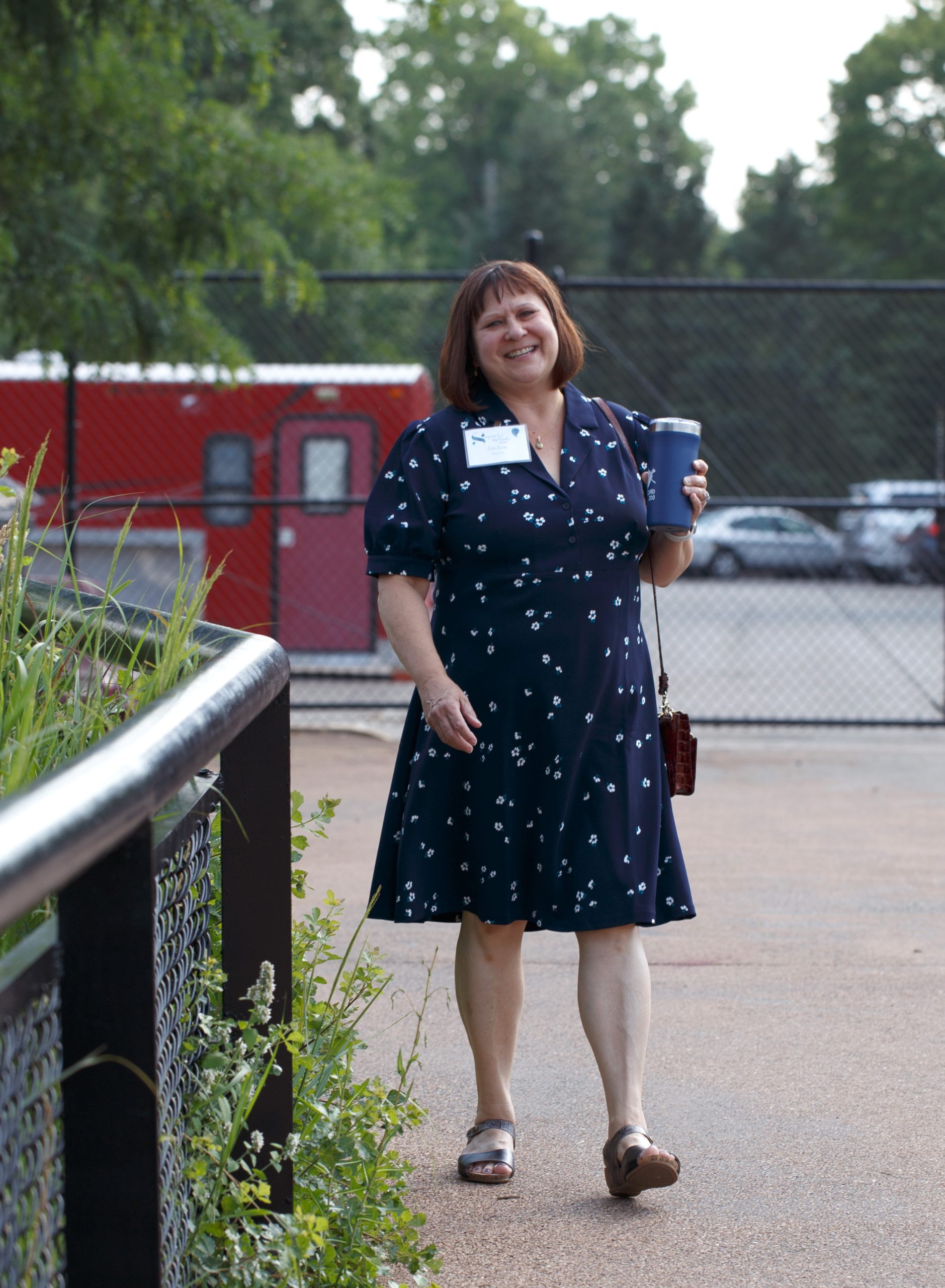
Nearly every day, Como Friends President Jackie Sticha takes a walk around the grounds of Como Park Zoo and Conservatory, but those first bright days of spring are always her favorites. “There’s really nothing like being at Como on a beautiful busy day, with thousands of people of all backgrounds and ages, tourists and teenagers, senior citizens, families and kids on field trips,” she says. “I often overhear conversations that are quite inspiring, or that make me chuckle. And I love the way the whole place buzzes with energy.”
The long-tenured president of Como Friends, Sticha can claim credit for a lot of that buzz. Since the organization’s founding in 2000, she’s led annual fundraising strategy, advocacy initiatives, and three successful capital campaigns that have contributed $52 million in new funding for the historic Como Zoo and the Marjorie McNeely Conservatory and leveraged an additional $50 million in state funds made possible through Como Friends’ advocacy work. These funds have had a big impact, creating new classroom space that serves thousands of students every year; unveiling cutting-edge habitats like Como Harbor, Polar Bear Odyssey, and The Ordway Gardens; and expanding programs that connect visitors to the wonders of the living world.
But 25 years ago, as an early hire of the newly formed Como Zoo and Conservatory Society, a merger of four different nonprofits and docent groups, Sticha’s first job was figuring out how to establish a strong public/private partnership that could protect the future of one of the Twin Cities’ most beloved institutions. “With 100 years of history, nearly everyone has a memory of coming to Como as a child, with their children, with their grandchildren,” she says. “Another strength was the passion and knowledge and commitment of the Zoo and Conservatory staff, and their vision for what could make Como even better.”
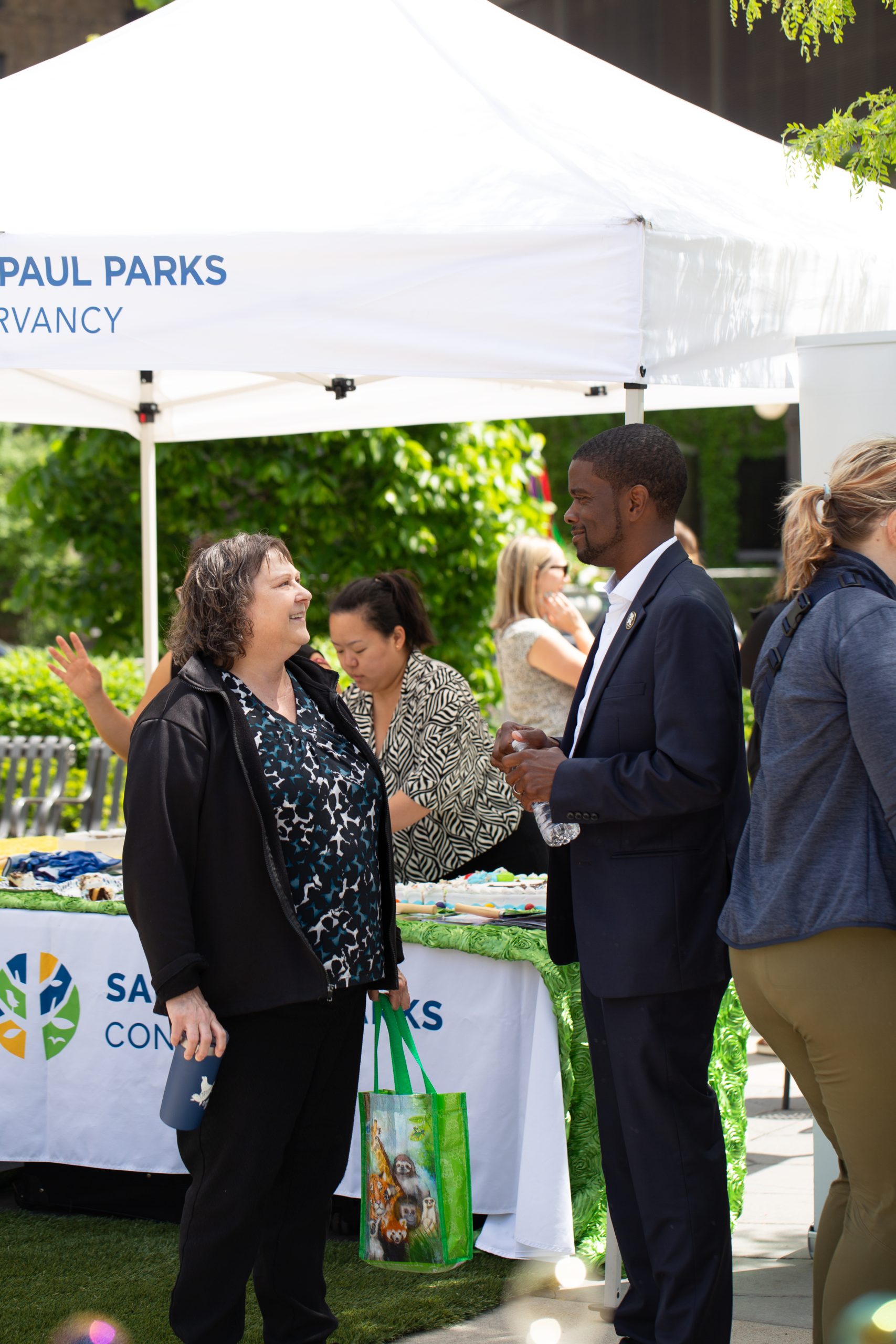
With strong support from the city and its parks department, an engaged board of directors, and such visionary volunteer leaders as Leonard Wilkening, Arlene Scheunemann, Bob Piram, and Paul Verret, the Society (renamed Como Friends in 2008) launched a major capital campaign to unite the Zoo and Conservatory through the Visitor Center, and to provide much-needed updates to the historic campus with new spaces for animal support, plant collections and administration. “What drew me is that this was a brand new organization with some really big ideas,” she says. “We all had to build new relationships to move forward, and while we definitely made mistakes along the way, it was often out of an excess of enthusiasm for what was possible.”
During the most challenging times, Como Friends’ first board chair, the late Leonard Wilkening, would give Sticha this advice: “Just give it five years, and it will all work out.” His timeline was prophetic—within the first five years of their partnership, Como Friends and Como Park Zoo and Conservatory unveiled the new Visitor Center, Tropical Encounters, the new Fern Room and the first ever Orchid House to the public, with behind-the-scenes improvements that included a new Animal Support Building and administrative offices retrofitted in Como Zoo’s iconic WPA-era building. “As we all began working together, we started having more and more success,” Sticha says. “But unveiling the Visitor Center was the real turning point, because it was the first visual demonstration of what the future at Como would look like.”
Since then, Como Friends has led the charge on two additional capital campaigns, one for Como Harbor, and another to create Polar Bear Odyssey and The Ordway Gardens. Como Friends also secured the major gift that renamed the Marjorie McNeely Conservatory, and a $1 million endowment to create a permanent source of support for the Charlotte Partridge Ordway Japanese Garden.
During Sticha’s tenure, Como Friends finished each fiscal year with an operating surplus and increased the annual contribution to Como Park Zoo and Conservatory. Como Friends’ steady growth provided stability for Como, creating a dependable source for their annual operations and funding for ongoing improvements.
When public funding for Gorilla Forest was threatened, Como Friends expanded its profile to include advocacy work, joining Como each legislative season to support the campus’s role as both a community asset and an economic powerhouse that welcomes nearly two million visitors each year—the largest audience for any cultural institution in the state. Como Friends also successfully diversified its revenue streams with a mix of popular fundraising events like Bouquets, Sunset Affair, and Como After Hours; strong relationships with foundations and corporate funders; growing individual giving programs; and a successful gift shop operation, Garden Safari Gifts. “We’ve grown and learned a lot since our early years, but we’re still a relatively small team for the amount of money we raise, and for the extensive retail operation that we have, but we have a smart and nimble staff who are so innovative and creative in coming up with solutions for how we can be successful, and then working together to execute them,” Sticha says.
As she looks ahead to retiring this summer, Sticha says many of her favorite memories were made learning from supporters energized by their love of plants and animals, and working with families who have passed their commitment to Como from one generation to the next. She also thinks often of community leaders like Wilkening; the late Nancy Nelson, who raised funds for the Polar Bear Odyssey campaign with her husband Russ; and fundraising consultant Jim Scarpetta and others who were instrumental in making Como Friends’ vision a reality. “Every time we finish a new project, I think how pleased they would be to see how much progress Como has made.” She also thinks about some of her favorite animal ambassadors, including the late Amanda the orangutan, who once spiced up a behind-the-scenes tour by spitting a mouthful of water and orangutan kibble in Sticha’s direction. “Orangutans can hold a lot of water in their mouths, so it was like walking into a lake,” she laughs. “But I wasn’t offended at all. I felt like she’d chosen me.”
As Como Friends looks ahead to announcing the appointment of its next leader, she has some advice for her successor: “Have fun. Being at a job for 25 years is a long time to be in one place, but I’ve never been bored because Como is so dynamic, with living animals and gardens that are always changing and evolving. Between our staff, our board, and our donors, there are so many wonderful people connected to Como and it’s fun working with them, and working together for something that is so meaningful to our community.”
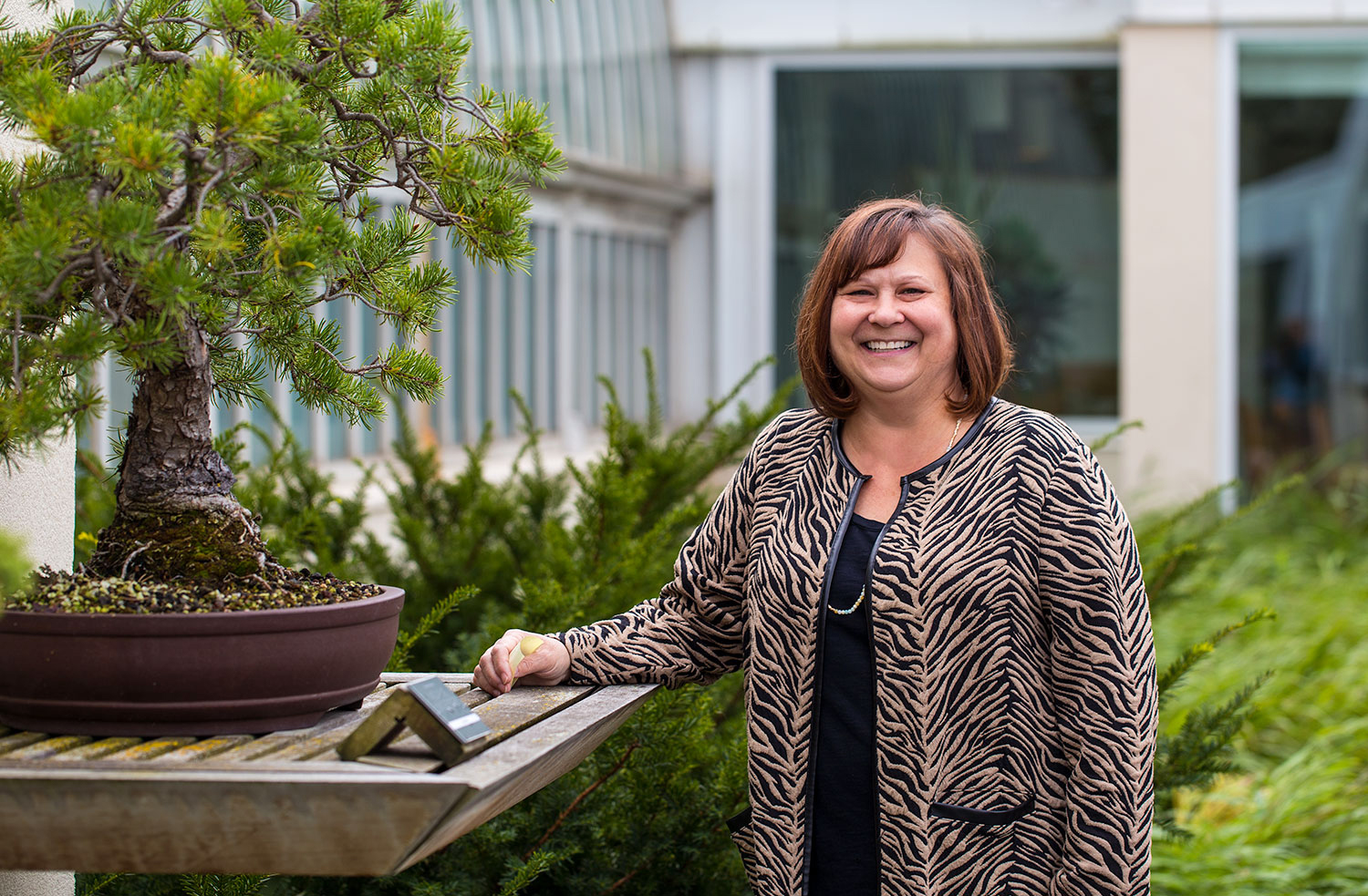
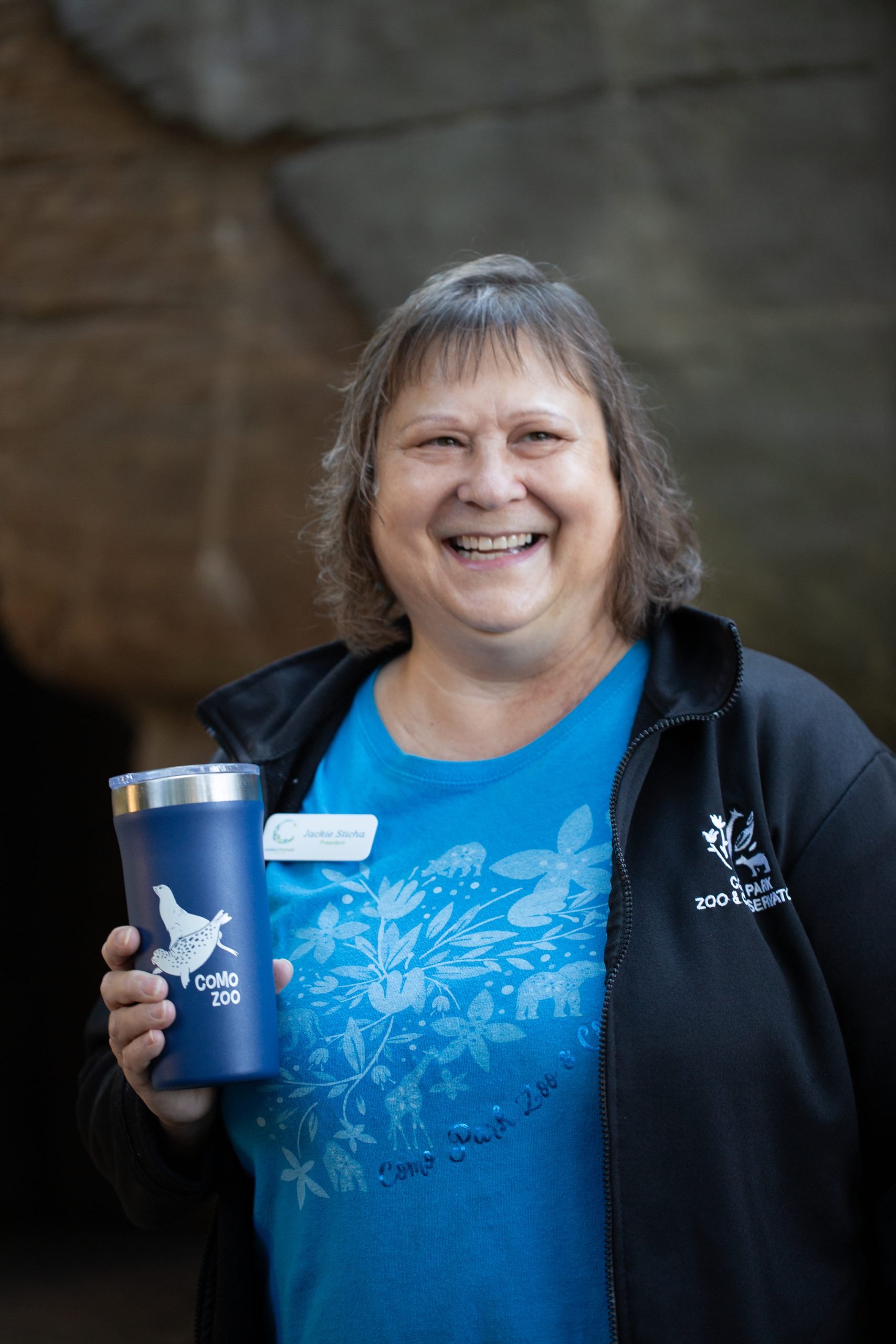
As studbook keeper for polar bears, Allison Jungheim preserves the health and genetics of North America’s most majestic species
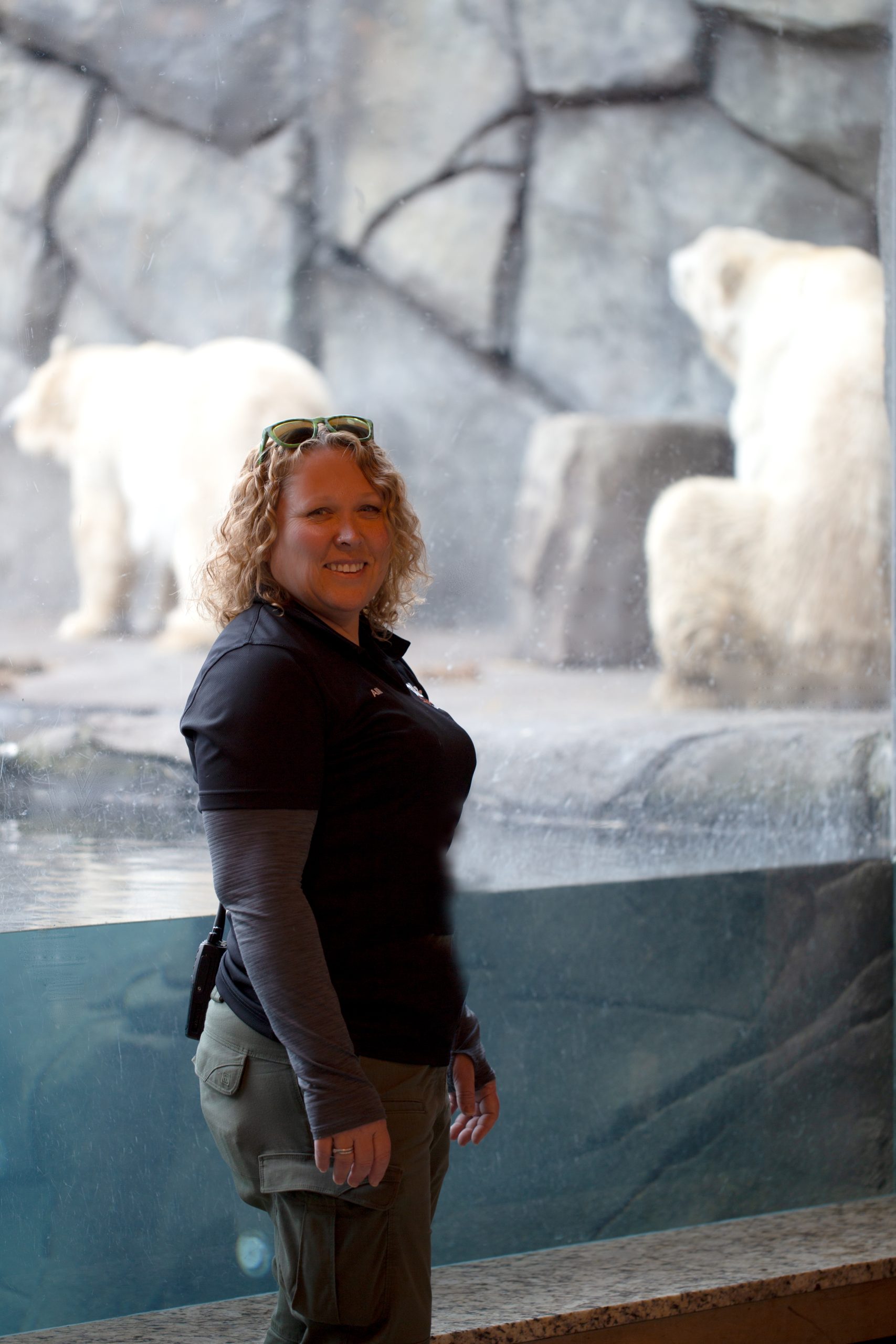
When she shares observations about the polar bears in her care, Senior Keeper Allison Jungheim can sound like she’s talking about her closest friends, bubbling about Nan’s bossy behavior, bragging about Kulu’s impressive weight gain (“At 940 pounds, we should probably stop calling him little Kulu”), and beaming at Neil, the mild-mannered male who first came to Como Zoo with his brother Buzz back in 2001. “He is my bear,” she says.
Jungheim brings the same enthusiasm to her role as studbook keeper for North America’s polar bears, responsible for tracking the genetic health and history of some 60 individuals living in partner zoos across Canada and the U.S. A project of the Bear Taxon Advisory Group through the Association of Zoos and Aquariums, the studbook is one of the ways that zoos work together to ensure that managed populations of polar bears are living their best lives.
Similar to your family’s own electronic medical records that allow for more coordinated health care, “keeping all of that data in one place is super important for the longevity of animals,” Jungheim says. “The studbook also gives me the ability to look back at historic animals and current animals, to see who’s related to whom, and who should breed with whom.”
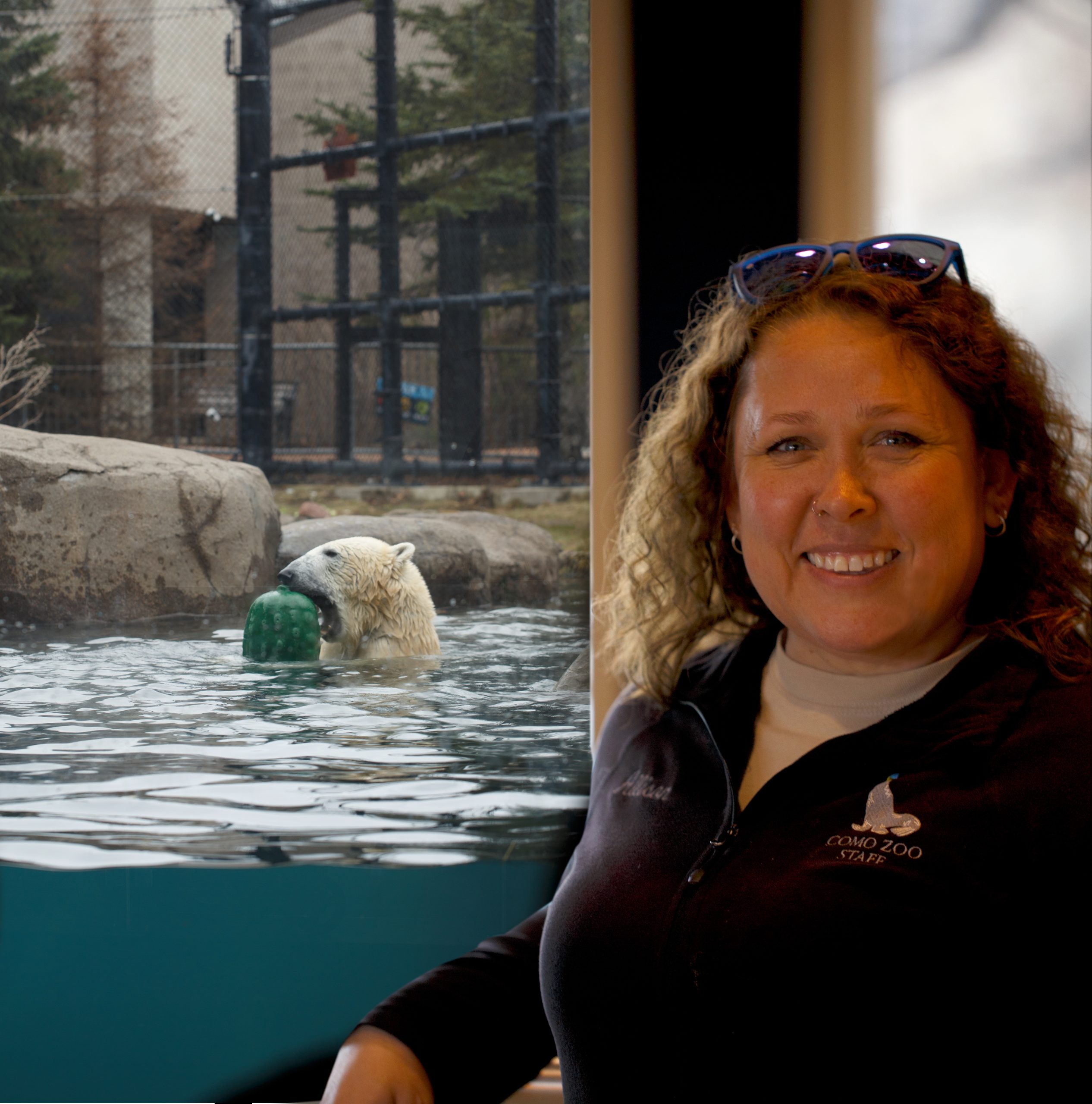
While Como Zoo’s keepers have earned national recognition for their success at reducing polar bear repetitive behaviors and developing tools for improving polar bear blood draws, Jungheim’s longtime leadership in polar bear preservation is a volunteer effort. “I don’t get any extra money or funding for managing the polar bear studbook, but it’s worth it to be part of the bigger picture, helping polar bears around the country, and not just here at Como.”
Polar bears require just the right conditions for successful breeding, both in zoos and in the wild. While polar bears will typically mate in early spring, they’re one of more than 130 animal species with delayed implantation, meaning that fertilized eggs don’t implant in the uterus until months later. The delay allows females to build up the fat reserves they’ll need to support themselves and their cubs during a long denning period. “But if the female doesn’t gain enough weight, or have good enough body condition, she may not implant that embryo or embryos at all,” explains Jungheim. The long dormancy period means that if one breeding pair is unsuccessful, zoos don’t have much time to establish a new pairing.
“That’s one reason why collaboration with other zoos is so important,” she says, noting that the polar bear community of keepers, managers, and veterinary staff have regular virtual meetings throughout the year, sharing breeding and denning news, and exploring new strategies. “One of the things we’re trying is to create more choice for mates by pairing more than just one male and one female,” she says. “Our thought is that by giving mate choice, it gives the male the chance to share the love with other females, and increases competition for breeding, and hopefully, increases success rates.”
With that strategy in mind, Como Zoo is getting ready to welcome a new female bear from a partner zoo, who might make a good breeding partner for Kulu. “With an aging population of bears, we’re trying to shake things up,” Jungheim says. If the pairing works, she may even have a couple of new names to add to the polar bear studbook.
Funding from Como Friends enabled Allison Jungheim to travel to attend an in-person polar bear conference, strengthening the network of connections zoos rely on to help bears live their best lives.
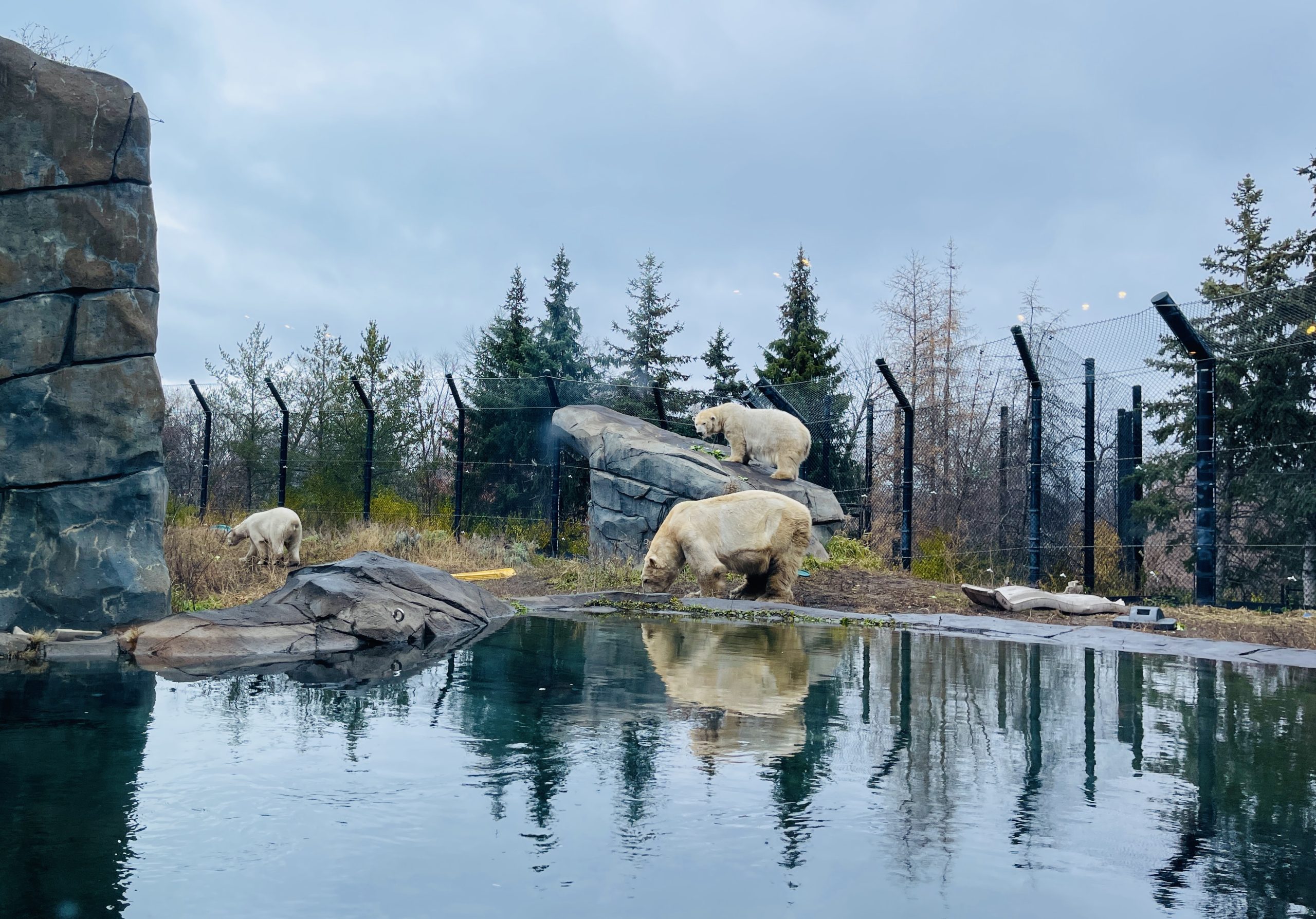
Celebrate Party for the Planet at Como on
April 26 and 27 | Presented by Xcel Energy
There’s no better place to celebrate Earth Day 2025 than Como Park Zoo & Conservatory, where our annual Party for the Planet is a two-day weekend celebration for visitors of all ages. Powered by our friends at Xcel Energy, this year’s Earth Day theme, “Our Power, Our Planet,” celebrates the movement toward renewable energy. With family-friendly activity stations, and splashy public programs like our Blaze Sparky Show, Party for the Planet is a great way to learn more about what you can do to protect our environment on Earth Day and every day.
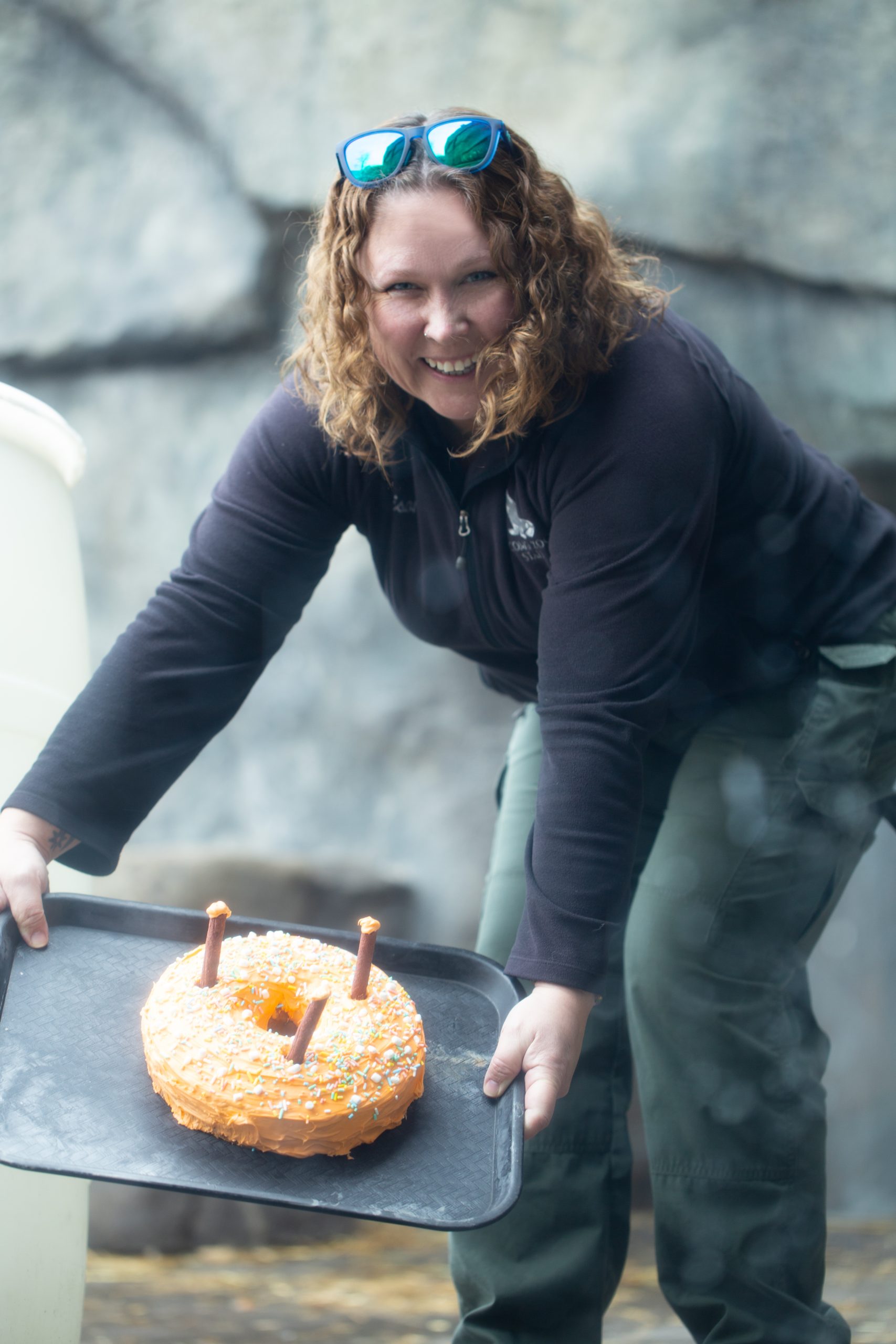

Meet Ray Watson, the Marjorie McNeely Conservatory’s new horticultural curator

Since taking on the role as curator at the Marjorie McNeely Conservatory, Ray Watson has been impressed by just how passionate Como’s horticulturists are about the plants in their care.
“Within my first week here, every staff member I met apologized for gushing and going on about what they’re interested in, whether that’s staghorn ferns, or carnivorous plants, or orchids,” Watson says. “That enthusiasm is why the plants here are so beautiful and well cared for, and I think the passion that people who work here have for plants evokes something in visitors as well.”
Watson’s own passion for the conservation of living things has been the common thread on a career path that’s taken them from farm work and landscape design, to education and youth engagement, to genomic research and COVID science. “The Marjorie McNeely Conservatory is really fortunate to have found someone with Ray’s unique mix of skills and interests, from field conservation, to curriculum writing, to greenhouse operations,” says Como Friends’ president Jackie Sticha. “Their perspective will definitely help strengthen and grow the plant collections at Como, and how those resources connect visitors to our conservation mission.”

A graduate of Swarthmore College, Watson earned a double major in religious studies and biology, where their research focused on hormones and mating behavior in forked fungus beetles. In graduate school at the University of Virginia, Watson earned a master’s degree in Ecology and Evolution, diving deep into the genetic evolution of domesticated sunflowers. Watson also served as a visiting scholar at the University of California, Berkeley and worked as an educator with the Smithsonian National Museum of Natural History’s Youth Engagement through Science program, writing curriculum as well as collecting and managing research populations of teaching specimens.
Moving to Minnesota with their partner, Watson joined the University of Minnesota’s Genomics Center just before the start of the pandemic, going on to lead a team of researchers in developing COVID testing protocols. But a first visit to the Marjorie McNeely Conservatory’s North Garden inspired them to think about returning to plants as the focus of their work.
“Though I really enjoyed my role in research and development, during the pandemic, I realized that I was more of a public servant than a scientist,” Watson says. “This role really appealed to me because it was a marked shift toward providing that direct service to the public, using the resources that are available here from the city to benefit everyone in the community.”

One of Watson’s favorite spots in the Marjorie McNeely Conservatory is the North Garden, home of a long-standing fig tree they’ve affectionately dubbed “Figaro.” To keep the fig from overgrowing its setting, the tree was recently pollarded by Watson and horticulturists Jennifer Love, Isaac Zaman, and Rylee Werden. Pollarding is an age-old system of repeated methodical pruning in which the upper branches of a tree are removed. The result is increased growth at the cut points and a dense head of foliage and branches. A pollarded tree has characteristic knobs at the end of the main branches, like you see today.
Thanks to your generous support, the horticulture team has a lift and other essential tools to carefully trim and maintain the beautiful trees throughout Como’s indoor garden spaces, keeping them healthy and vibrant for everyone to enjoy.
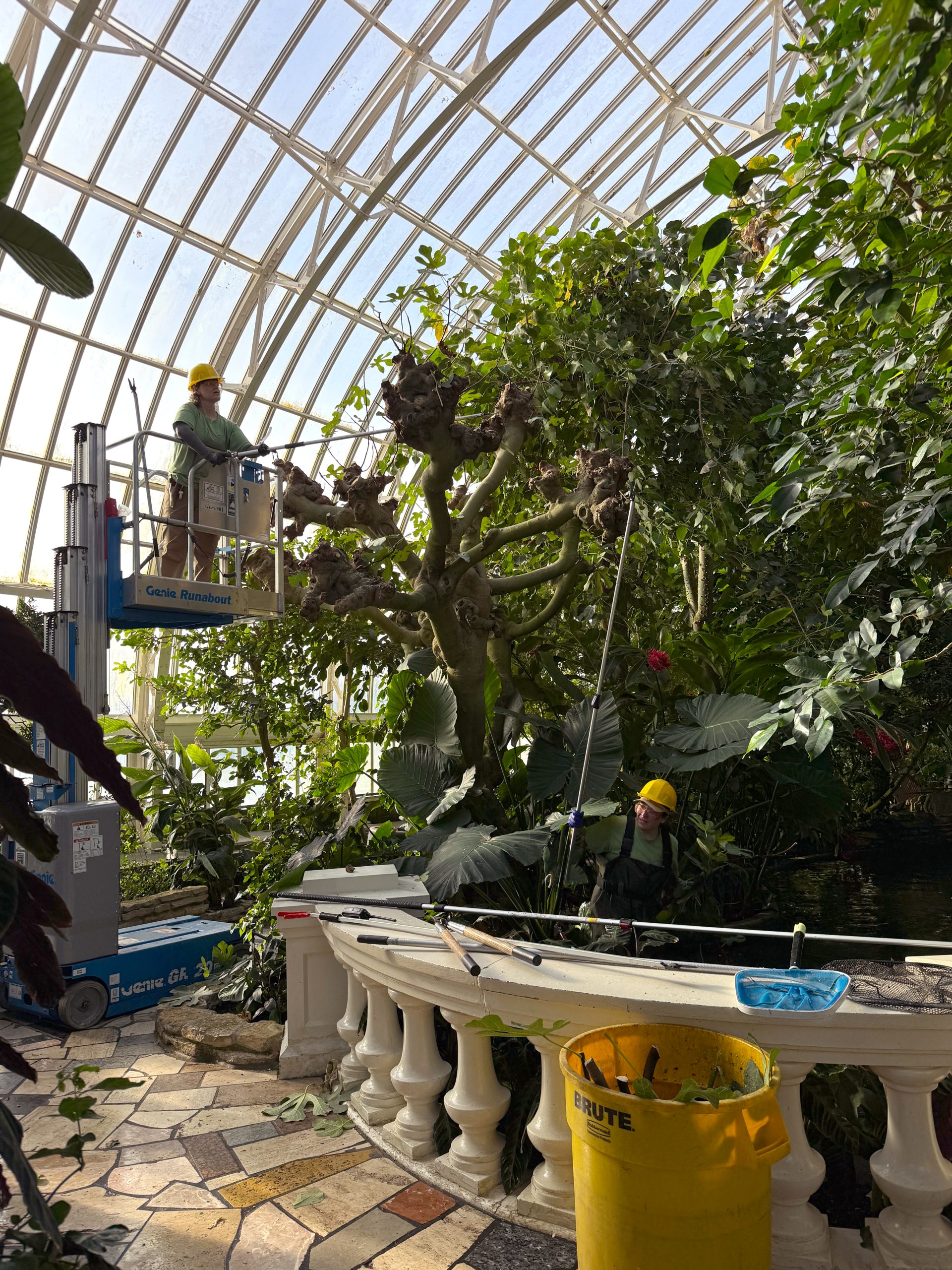
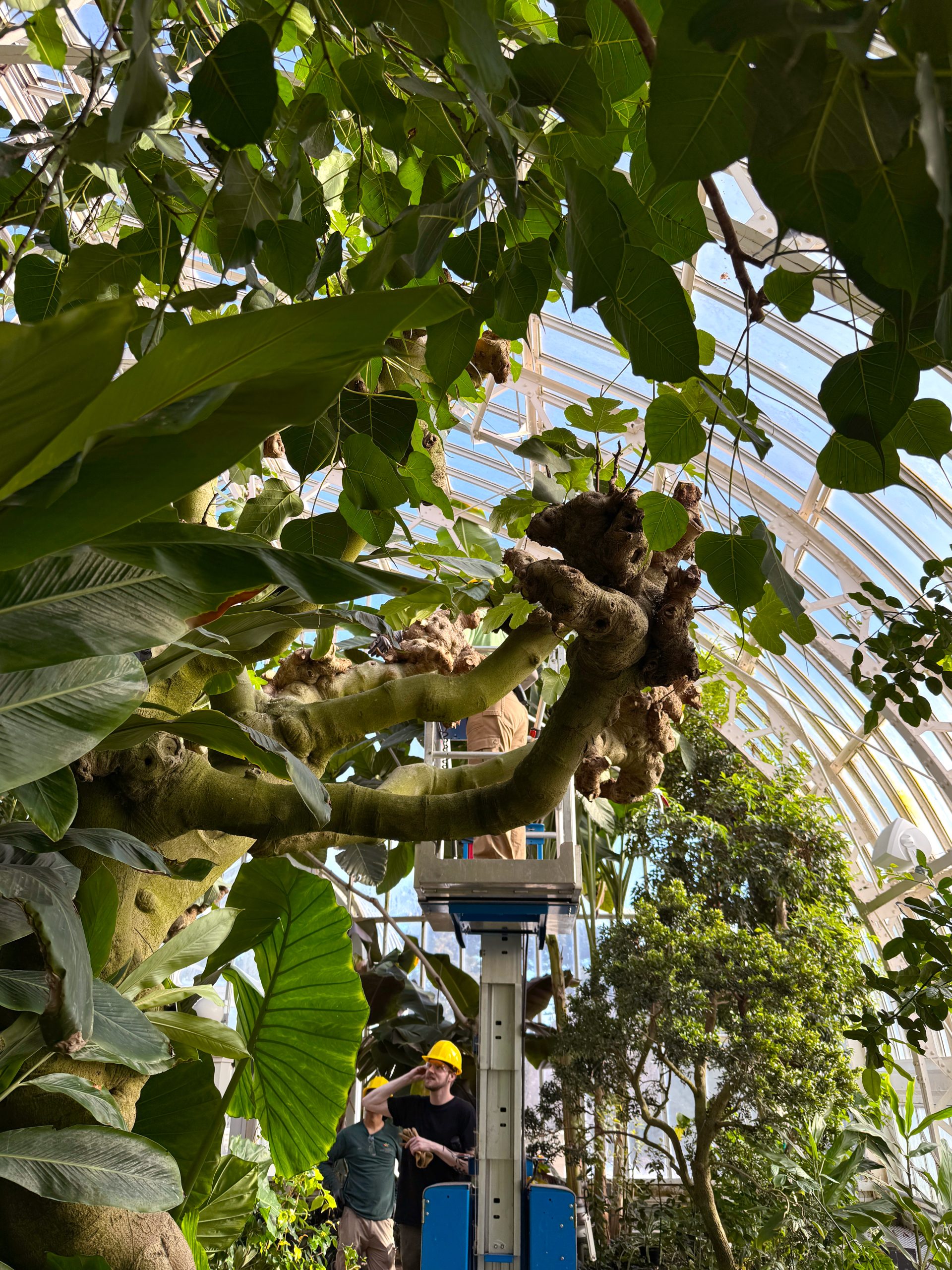
Making Minnesota’s most beautiful room more accessible for the future
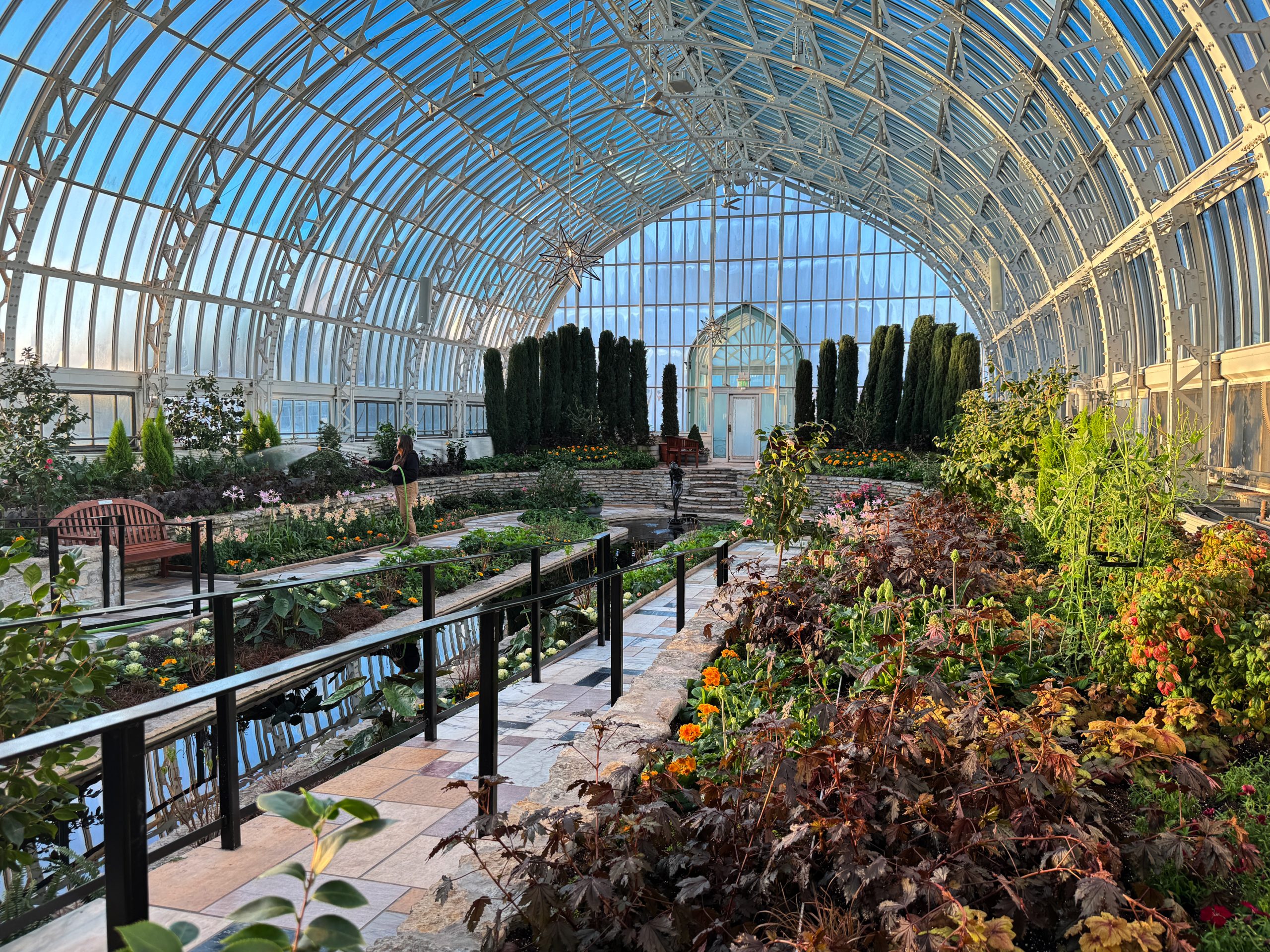
For one of the first times in its century-long history of service, the Marjorie McNeely Conservatory’s Sunken Garden closed to the public earlier this winter to allow for the construction of two pedestrian ramps that will make the space more accessible to visitors. The brief closure also gave Como the chance to give the wing—a favorite Twin Cities wedding destination—a little extra sparkle. As the new and improved space reopens to the public this season, here’s a look at some of the features that make the Sunken Garden so special to so many.

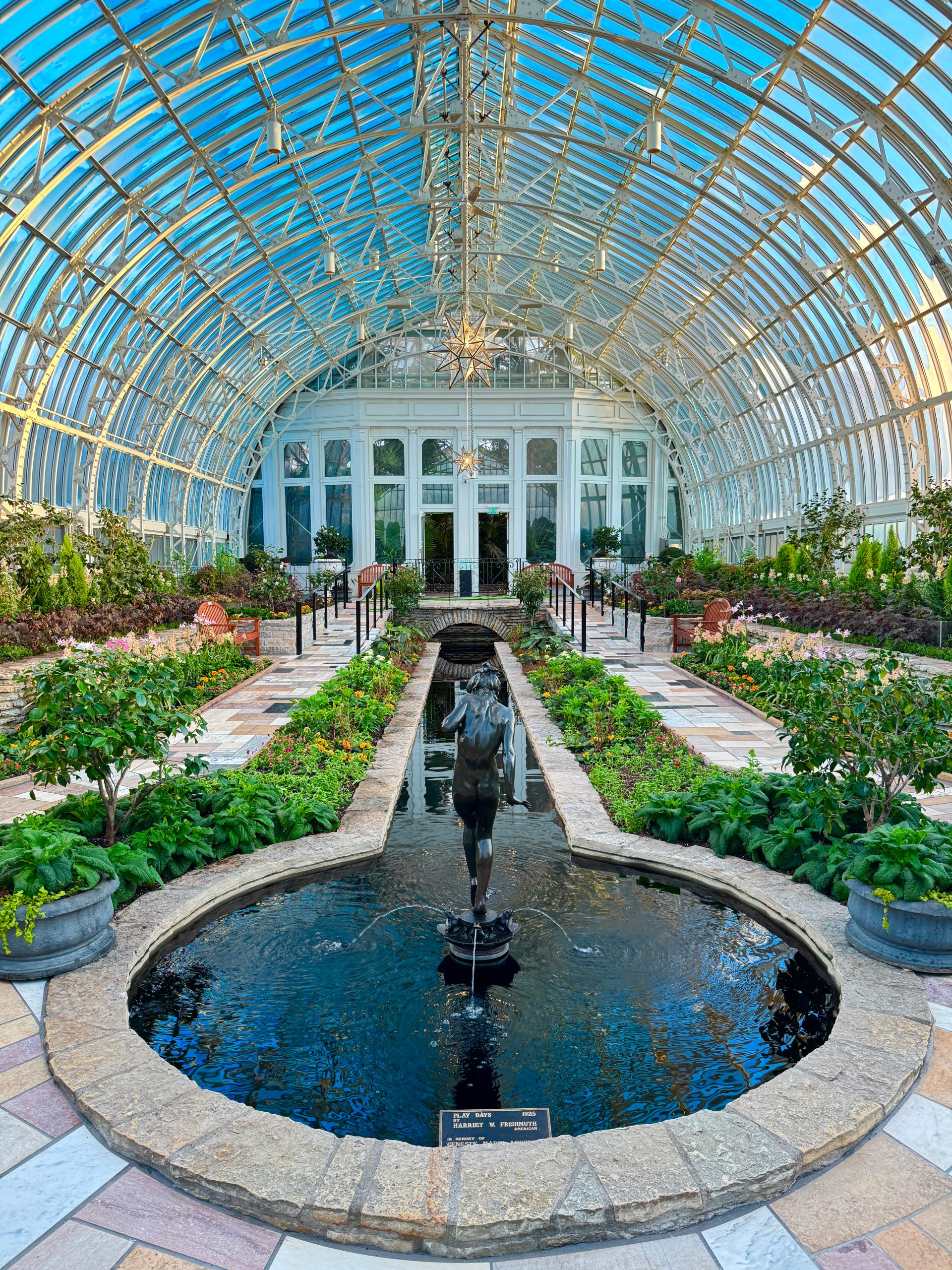
1). While the flowers come and go in the Sunken Garden, Minnesota’s most beautiful room has very deep roots. Originally opened as the Marjorie McNeely Conservatory’s south wing in 1915, the room was remodeled about a decade later to create the features we recognize today—the long, narrow floral beds, the lengthy reflecting pool, and the exceptional view from above that allows visitors to take it all in. “Sunken gardens were a trend in Europe at the time,” says Paul Knuth, the retired horticulturist who created the room’s rotating flower shows for more than 30 years. “But I think being able to see everything from one spot would have been the real inspiration. That view is easy on the eyes.”
2). A beautiful example of the Victorian glasshouse movement, the Conservatory’s listing on the National Register of Historic Places requires renovations to stay within the framework of the building’s original design, including recreating the distinctive marble flooring pattern on the new ramps. With masonry work that’s been kicking up a lot of dust, crews are also planning a deep cleaning of the windows and these Moravian star pendant lights. A traditional shape made popular in Germany in the 1830s, the star pendants were created by German immigrant and St. Paul craftsman Harry Fritsche. According to his grandson, Fritsche made and donated the now iconic lights to the Conservatory “as a gift to the city that welcomed him during difficult times,” and they have been hanging over the Sunken Garden since 1935.
3). “Play Days,” the beloved bronze sculpture at the south end of the Sunken Garden was also removed from the Sunken Garden this winter for repair and renovation. Created by Harriet Frishmuth, an American artist who studied with Auguste Rodin at Paris’s École des Beaux-Arts, the iconic sculpture is actually one of 99 known castings made of the work. In a fun twist of Como coincidence, this piece was donated to St. Paul in the 1960s by senior horticulturist Ariel Dressler’s godparents. “So many people feel a family connection to that room, and so do I, when I’m dusting that statue,” she says.
4). The Sunken Garden is a flower powerhouse, accounting for more than a third of the plants, plugs and bulbs grown each year in Como’s behind-the-scenes greenhouse. That number may even grow with the removal of the obsolete elevators, which has created more room for flower beds. “That’s something we’re excited about, because it’s a pretty significant new space for planting,” says Dressler. The spring and summer flower shows alone typically require up to 10,000 bulbs each year, which means that more than a million tulips, hyacinths, daffodils and other varieties have cycled through the Sunken Garden over the last century. “For years, Como Friends has offered the bulbs for sale when we’re finished with them, so it’s fun to run the numbers and imagine all of the decades that Como’s gardens have been making the community more beautiful, too,” says Dressler.
The Sunken Garden is also the site for Como’s Music Under Glass series this winter, a free concert series featuring local artists on selected Wednesday and Sunday nights. Visit comozooconservatory.org to learn more.
From polar bear medical procedures, to expert care for the gardens, to preserving and improving Como’s historic campus, your support made it all happen in 2024.

With her 30th birthday just celebrated, Nan is the grand dame of animal ambassadors at Como Zoo, continuing her reign as the oldest polar bear in North America. And thanks to a series of medical tests and procedures made possible this year with your support for Como Friends, this feisty alpha female is still living her best life in Polar Bear Odyssey with roommates Neil and Kulu.
Animal care is a constant at Como Zoo, but planning a full medical assessment for a polar bear is even more demanding, says senior keeper Allison Jungheim. Last spring, Nan presented with a short list of potential health problems that keepers and veterinarians decided to investigate. “Because we knew we wanted to get as much information as we could during the short time she’d be under anesthesia, we worked really hard to make sure we had every piece in place,” says Jungheim. During the 90-minute procedure in July, a dental team took a close look at her teeth, a veterinary team excised a mass on the side of her body, and another shaved a portion of her lower body to diagnose the vulvar dermatitis that was bothering her.
“We were able to get so much done that there was even time to give her a vaccination, and to collect a blood sample for a polar bear thyroid study they’re coordinating at the Oregon Zoo,” says Jungheim, who also serves as the Association of Zoos and Aquariums coordinator for the North American Polar Bear Species Survival Plan.
Providing state-of-the-art veterinary support to animals like Nan is just one of the things your support for Como Friends helped to make possible in 2024. Here’s a look:
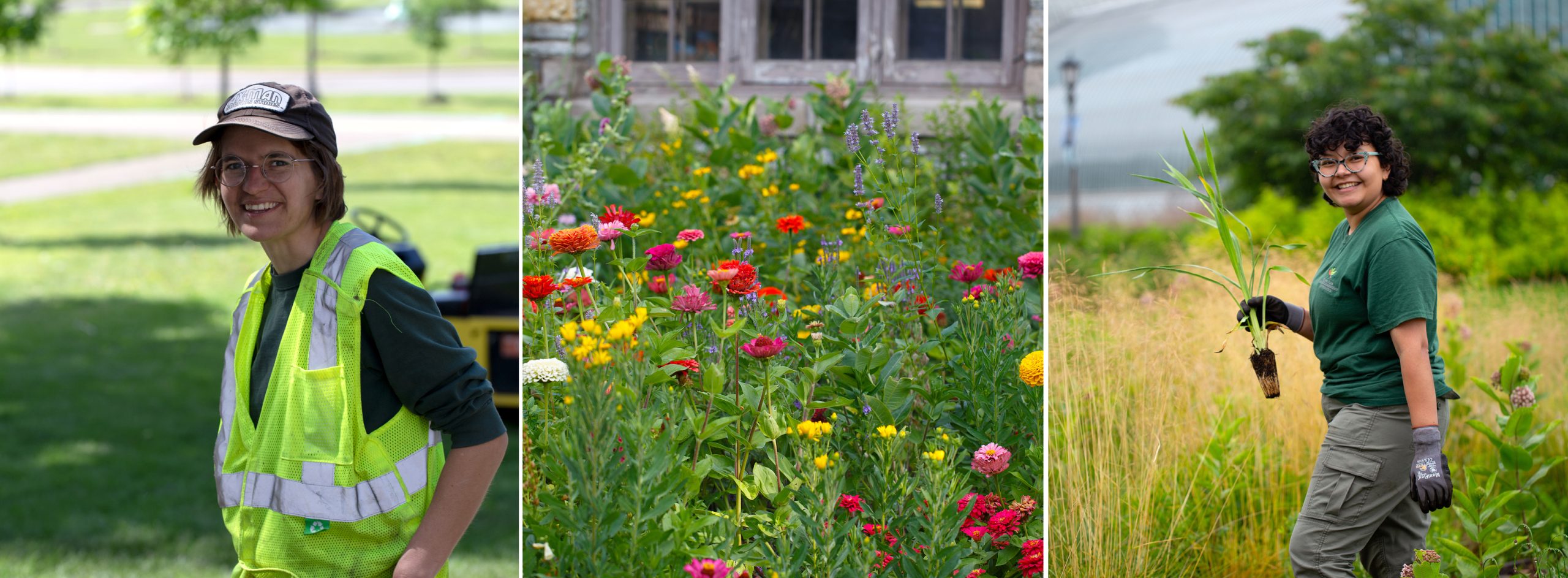
Greening the Marjorie McNeely Conservatory: For more than a century, Como has inspired the public with gorgeous gardens and floral displays, and now we’re helping highlight the beauty of sustainability. Thanks to contributions to Como Friends, horticulturists at the Conservatory have been introducing drought and heat-tolerant perennials and pollinator-friendly plants throughout Como’s campus. Your support also helps to provide the plant materials and professional expertise behind Como’s five seasonal flower shows, ensuring that the Sunken Garden is always Minnesota’s most beautiful room, no matter the season.
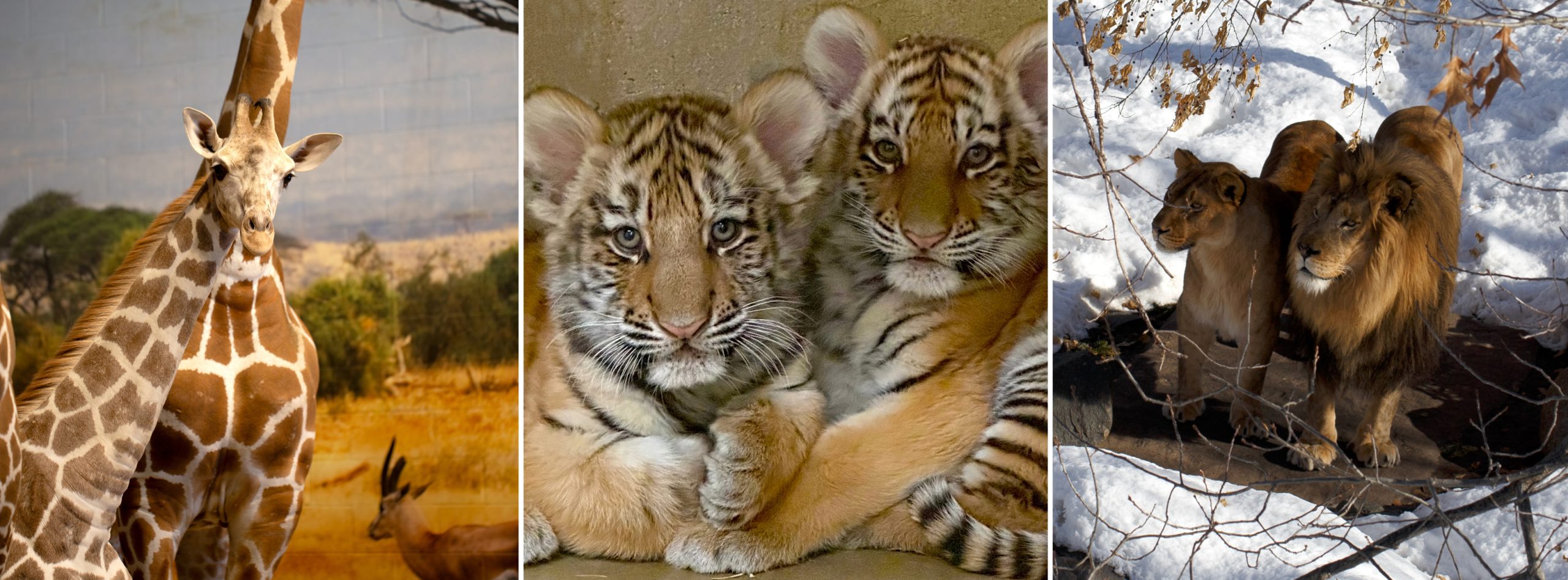
All Ages Animal Care: With tiny new arrivals like Amur tiger cubs Marisa and Maks and willowy nyala newborn Walter, Como Zoo’s keepers and veterinary staff had their hands full helping this year’s zooborns get off to a great start. Thanks to Como’s new on-site veterinary team, made possible in part by your support for Como Friends, the campus also had the resources and expertise to provide specialized care to adolescents like Ivy the giraffe and older animals like Mumford the lion, ensuring that Como Zoo’s animal ambassadors get the cutting edge care they need to thrive at every stage of life.
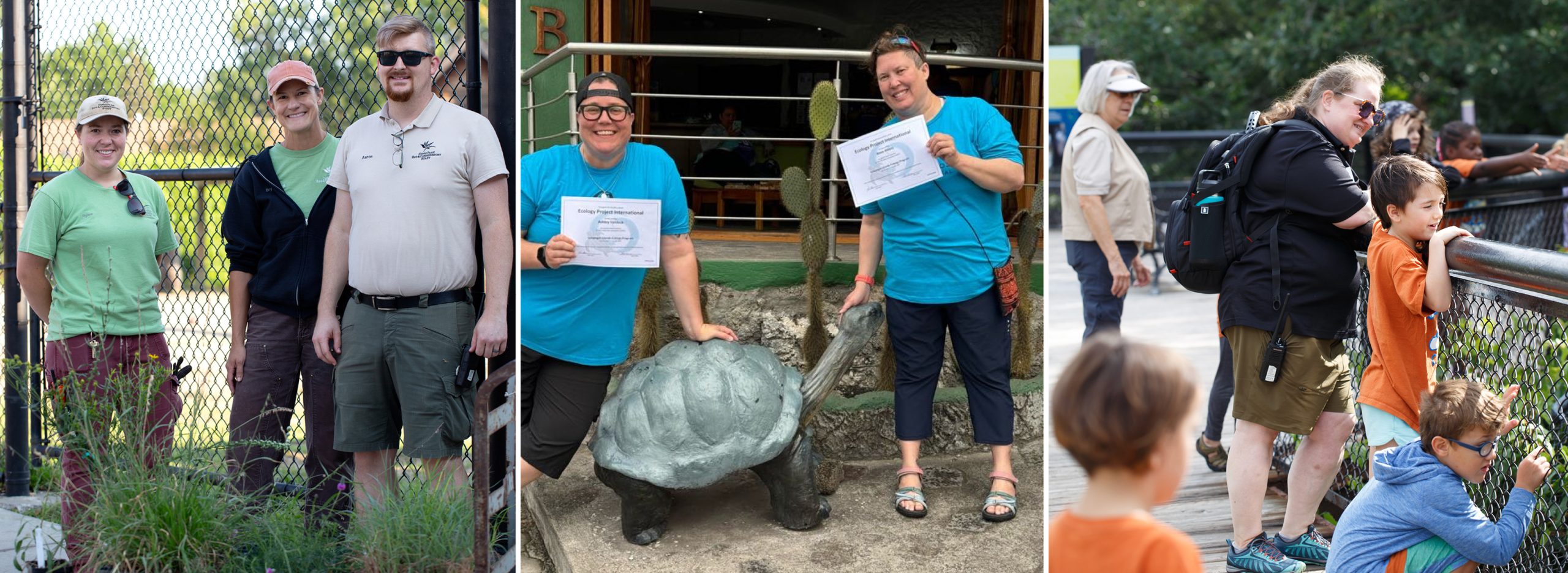
Connecting with Conservation: Promoting the value of conservation is Como’s mission, and this year, your gifts helped get the message out far and wide. Whether it’s telling a new story about the oak savanna ecosystem in Como Zoo’s bison habitat, or sending our intrepid education specialists to the Galapagos Islands to participate in field-based conservation and to meet tortoises in the wild, your support helps Como to connect with conservation efforts at home and around the world, while offering environmental education curriculum that teaches visitors about the profound connections between animals, plants and people.
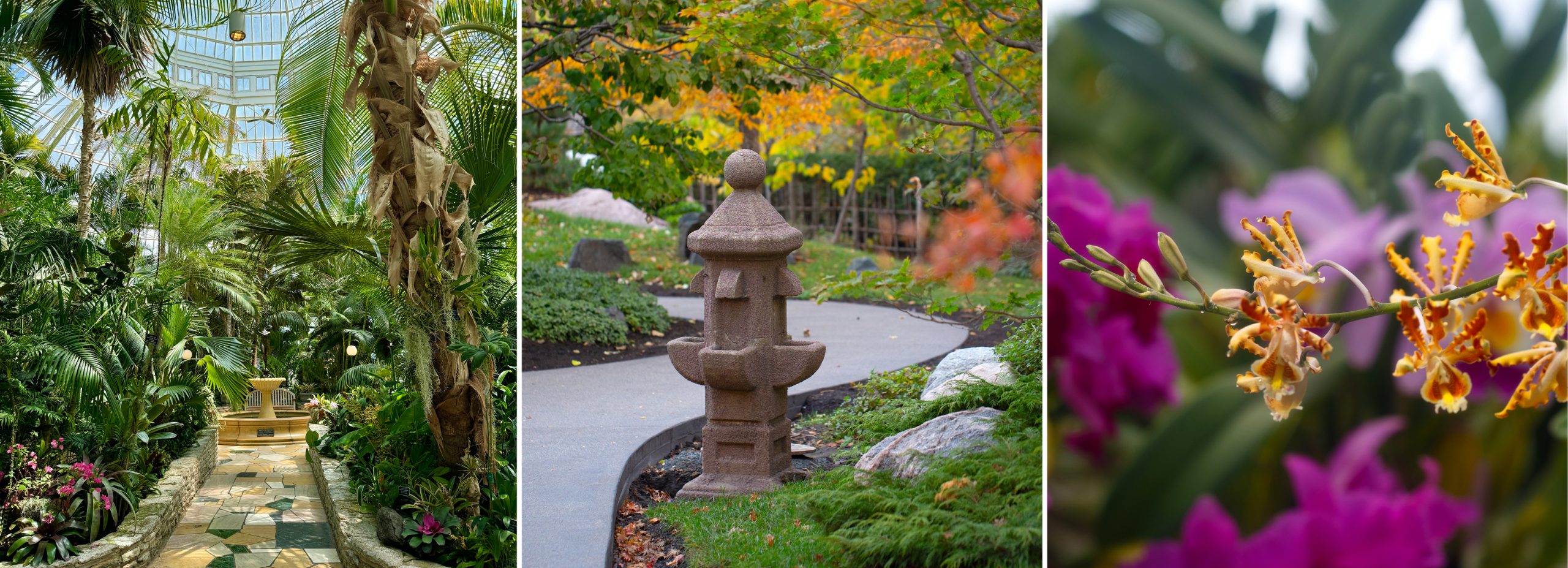
Preserving and Maintaining Como’s Historic Campus: From the iconic Palm Dome to the quiet corners of the Charlotte Partridge Ordway Japanese Garden, nearly every part of Como’s campus has a story to tell. In 2024, your contributions advanced maintenance on high-priority projects to preserve both historic and new assets at Como. Your support helped Como move forward on needed maintenance, from pruning tropical trees, to repaving pathways for better accessibility, to updating the venting that keeps Como’s Orchid Room in bloom.

Free Admission for Every Visitor: Como visitors came back in a big way in 2024, and your support made it possible. Now on pace to welcome more than two million visitors by the end of the year, Como’s free admission ensures that everyone in our community has access to the wonders of nature, every day of the year.
As a Como Friends supporter, you can take credit for all of this and more at Minnesota’s most visited cultural institution. Thank you for helping to make 2024 another year of growth at Como Park Zoo & Conservatory!
The tallest mammal on earth, giraffes also have the longest legs in the animal world, with an average “inseam” of 72 inches. As young giraffes grow, healthy limb development is a critical step in supporting their full adult weight of more than 2,000 pounds.

That’s why Como Zoo keepers and veterinary staff have been keeping a close eye on Ivy, a reticulated giraffe calf born in November to mother Zinnia. Like all young giraffes, Ivy was up and walking within minutes of her birth, but as she’s grown, keepers have noticed an unusual bend in the bones of her ankles.
“Over time, we started noticing that her legs were growing inward a little bit, and they were bumping into each other when she walked, which is why we started getting concerned,” says Wes Sims, director of animal care and health at Como Zoo. Equine surgeons from the University of Minnesota’s veterinary school diagnosed Angular Limb Deformation or ALD, a limb condition that’s common in horse foals as well.
Recently, hoofstock and veterinary staff took the extra step of anesthetizing the young giraffe to take x-rays to help inform her treatment plan. “After studying those x-rays, it was determined that she was not a good candidate for some of the typical surgeries that equine surgeons would want to perform in these cases,” says Sims. “Instead, she’ll be on stall rest for an extended period of time. Joint inflammation is something we want her to avoid for a while, so we don’t want her to risk going up inclines and declines or running around too much.”
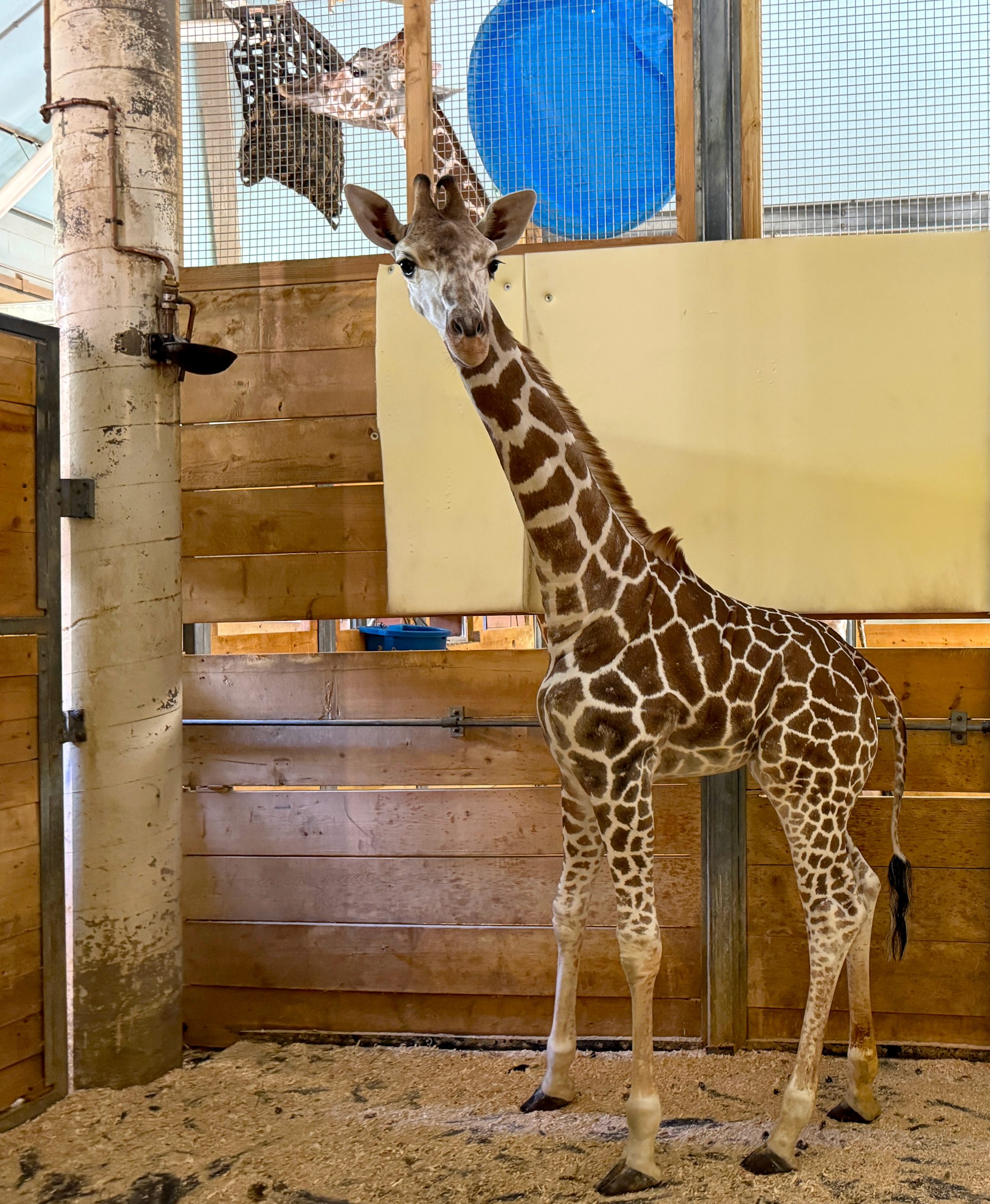
While the young giraffe remains in the Hoofstock Building’s behind-the-scenes habitat, Ivy has been getting plenty of attention from zookeepers, who provide daily enrichment to keep her engaged and curious. She also enjoys the companionship of her mother Zinnia, age 8, and her “aunt” Clover, age 23, who often choose to stay indoors with the young giraffe.
Though many Como Zoo visitors have shared how eager they are to see the young giraffe in her outdoor habitat, Sims says keeper talks that include updates about Ivy’s health conditions have helped convey how important stall rest is during this critical time in her development. “We’re doing everything we can to keep things calm and low key for her while we wait to see some progress,” says Sims.
Elevated Care for All of Como’s Animals
From portable x-ray machines and ultrasound monitors, to high-tech equipment that supports animal vision, dental health, and water quality, your support for Como Friends is critical to providing the cutting-edge care that keeps animals like Ivy healthy and curious.
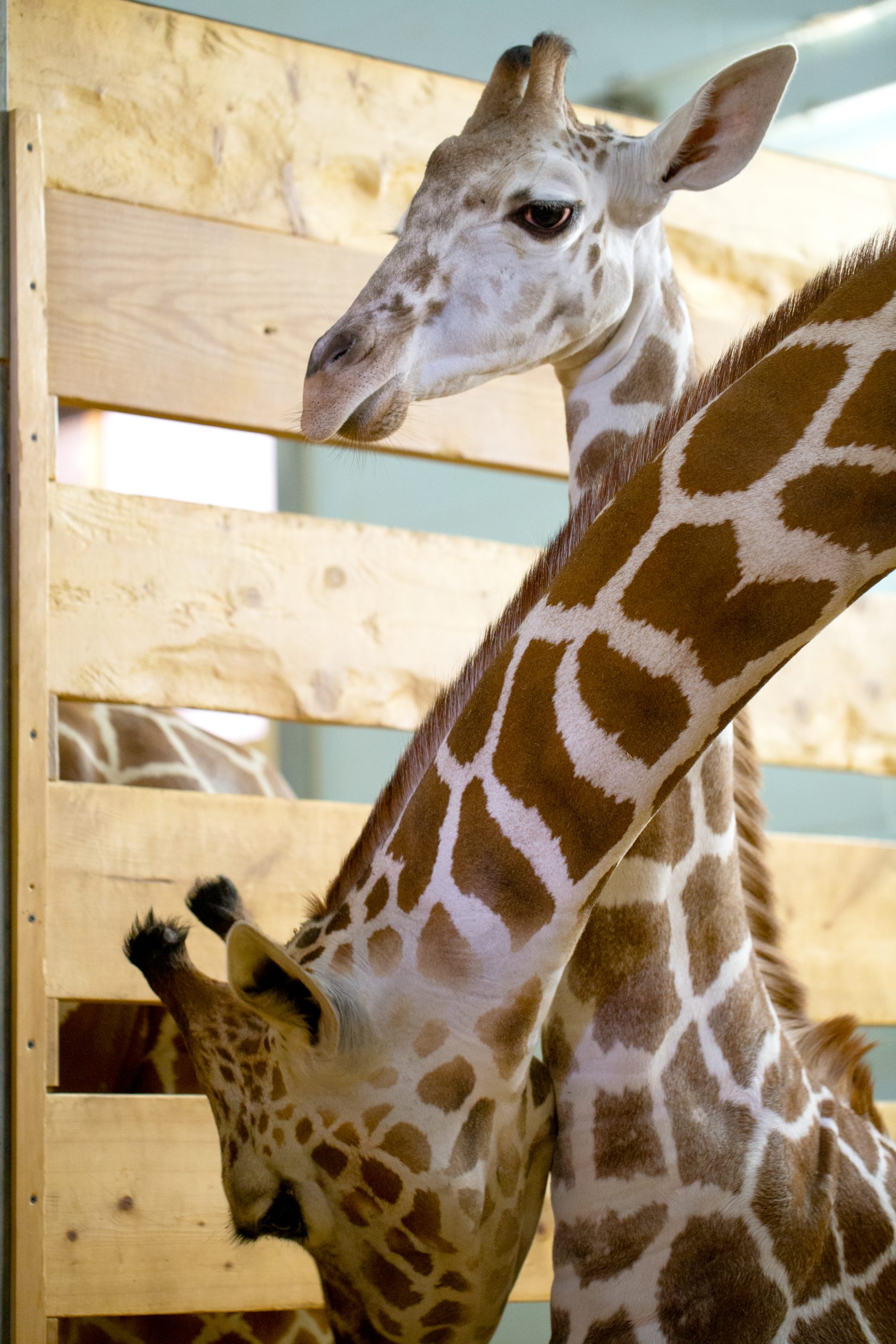

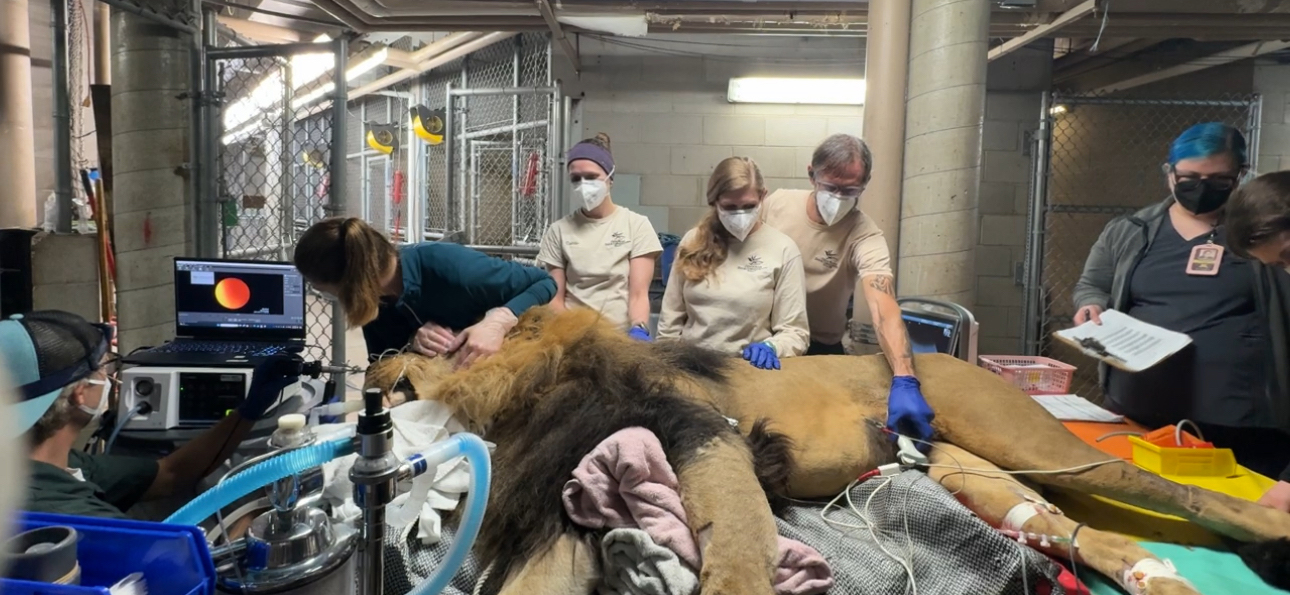
Como Zoo keeper Caitlin Allessi recently noticed that Mumford the lion seemed to be suffering from an increasing number of nosebleeds. “While he’s always had occasional problems with that, we noticed that they were getting more intense over time, and we wanted to investigate to rule out any big concerns about his health,” she says.


Getting a nearly 400-pound cat to the doctor is not easy, but the process has been made a little more convenient at Como Zoo over the last year thanks to the new on-site veterinary team. Supported in part by your contributions to Como Friends, this new approach to animal care helps to minimize stress for animals by eliminating the need to travel to the vet. It also allows veterinarians and keepers to collaborate more closely, managing multiple procedures to make the most of the time animals may have to be under anesthesia.
“Knowing that we would be scoping his nose, we realized it would also be a great time to coordinate with the veterinary dentist, which is a big undertaking with a lion,” says large cat keeper Hans Jorgensen. “The veterinary dental team told us that with a house cat, it usually takes 10 x-ray plates to view the cat’s whole mouth, but with Mumford, it took 50!”
Though Mumford has been a resident of Como Zoo since 2019, this was the first time keepers were able to do a full physical exam of the 8-year-old male, taking blood samples, a urine sample and radiographs can give veterinarians a more thorough understanding of the lion’s overall health. During the brief procedure, veterinarians got to the root of the nosebleed problem—a cluster of vascular tissue near the tip of his right nostril that gets irritated, particularly when he bumps it against the mesh of the exhibit.
“He has had a few more nosebleeds since this procedure, so for right now, we’ll just keep monitoring him,” says Allessi. “It’s a big deal to anesthetize a lion, so if we don’t have to do it, we don’t want to. But it’s so much more convenient to have veterinarians come to us—it’s been a nice improvement for the animals.”

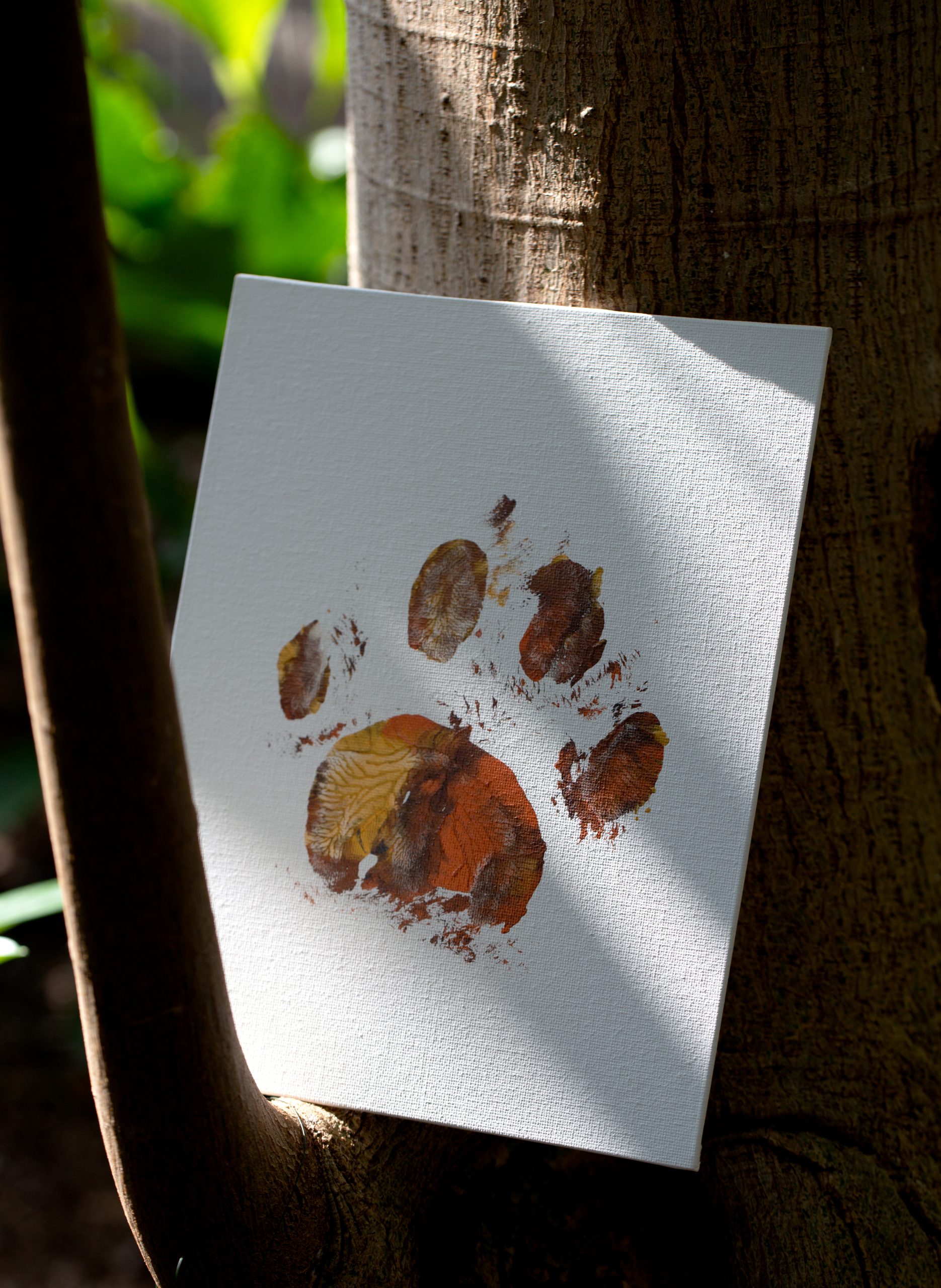
Mumford’s paw print is a featured auction item at this year’s Sunset Affair: Our Wild World Silent Auction!
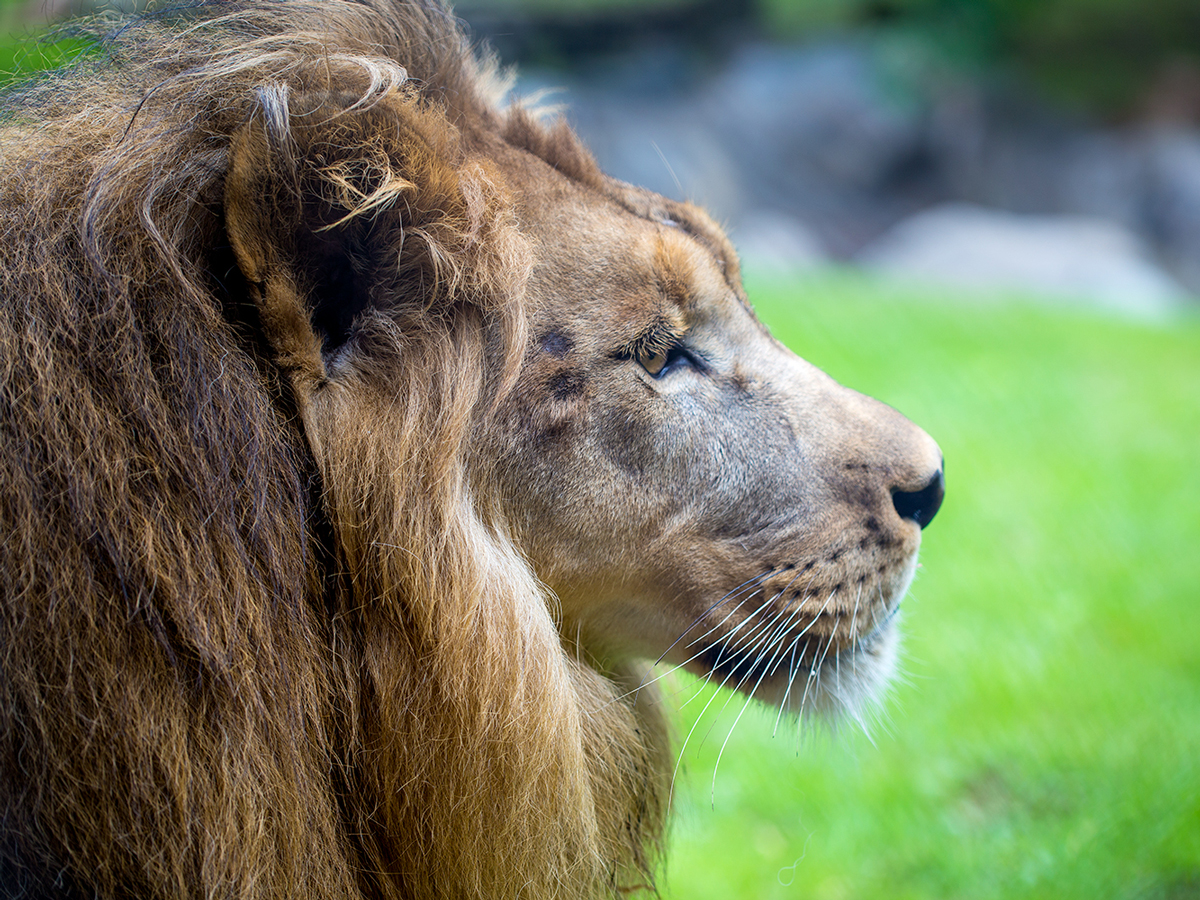
Como Friends marks a major fundraising milestone thanks to community support from people like you
Created by visionaries and volunteers more than a century ago, Como Park Zoo & Conservatory has always relied on community support to keep this public treasure growing. Since 2000, that’s also been the mission of Como Friends, the nonprofit fundraising partner behind major improvements like Como Harbor and Polar Bear Odyssey, and countless behind-the-scenes projects that help Como’s professionals do more for the animals and plants in their care.
Thanks to the extraordinary generosity of people like you, Como Friends has just reached an important milestone, securing more than $50 million in private donations to preserve Como’s historic campus, improve visitor amenities, update animal habitats and gardens, and expand education programs—all while preserving the free admission that welcomes nearly 1.8 million visitors each year.
“When Como Friends started 23 years ago, it would have been hard to fathom that a little start-up organization could someday raise more than $50 million,” says Jackie Sticha, who has served as the nonprofit’s president since its founding. “But we had a big vision for what was possible at Como Park Zoo & Conservatory, and were able to engage some incredible community leaders who helped us to kick off the organization, and to grow our work year after year.”
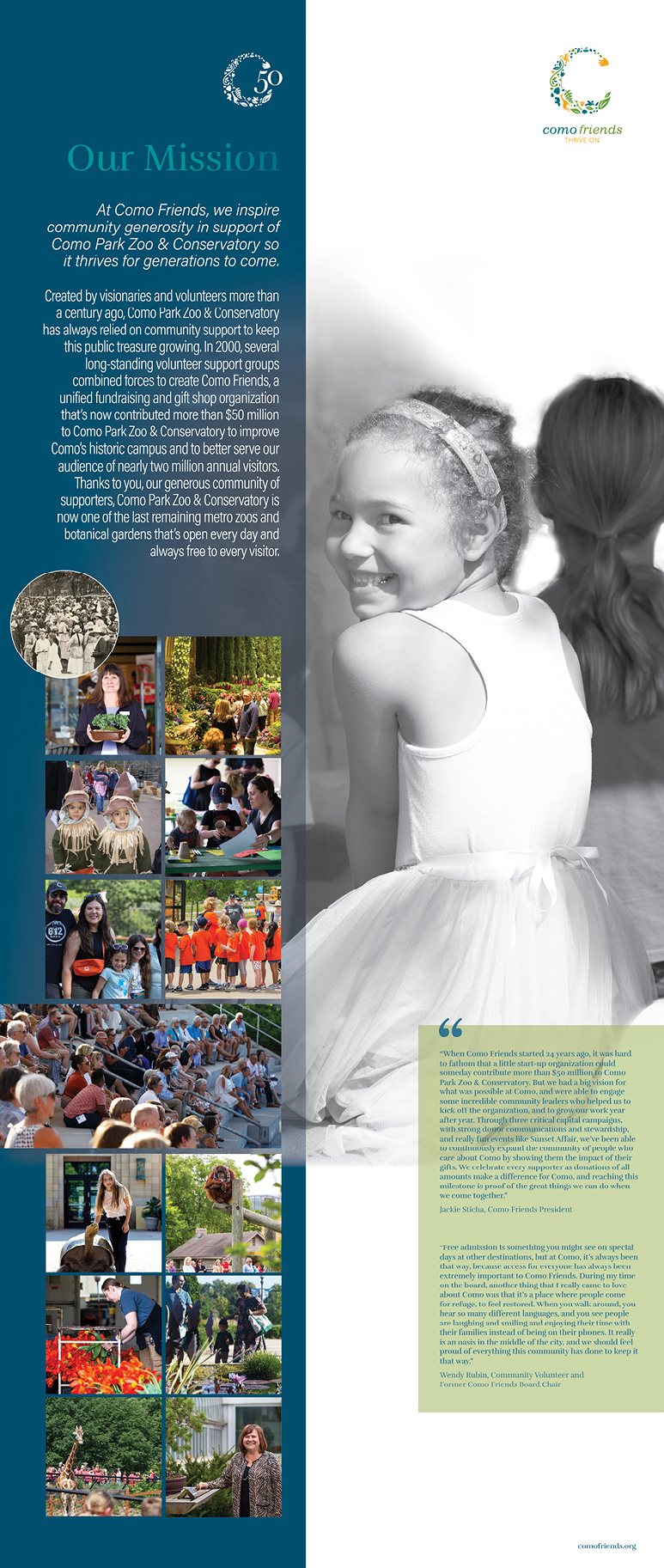
“Como’s transformation over the last 20 years is really rooted in this great public/private partnership,” says Michelle Furrer, Como Park Zoo & Conservatory’s director and campus manager. “Having Como Friends with us at the table at the start of every project has been a real benefit when it comes to the design process and value engineering of our capital improvements. They can see where we’re going to have challenges, and it helps them to be a better advocate for us as they’re seeking additional funding from the community. There’s so much that Como Friends makes possible year to year, from small projects, to major repairs, to behind-the-scenes operational support. Como just wouldn’t be where it is today without their support.”
Originally founded through the merger of several different fundraising and nonprofit groups, Como Friends has grown every year since its founding, expanding fundraising strategy and growing the retail operation at Garden Safari Gifts to keep pace with Como’s needs. From an initial contribution of $309,740 in 2000, Como Friends’ support has increased more than five-fold, with an average annual contribution of nearly $1.7 million each year—far more in years during capital campaigns the nonprofit has led. This commitment to Como’s daily operations has been critical to preserving the open-door policy at Como Park Zoo & Conservatory, one of the last major metro area zoos and botanical gardens that’s always free to visitors.
“Through three critical capital campaigns, with strong communications and stewardship, and really fun events like Sunset Affair, we’ve been able to continuously expand the community of people who care about Como by showing them the impact of their gifts,” says Sticha. “While we’re proud of achieving our mission as a nonprofit, we’re also incredibly grateful to the members, sponsors, individuals, businesses, and corporate and foundation donors that have helped us succeed through their generosity, commitment and affection for this place. We want this community to understand that every size donation does make a difference at Como, and reaching this milestone is proof of the great things we can do when we come together.”
As a Conservation Champion, Como Zoo primate keeper Em Brunmeier traveled to Peru to learn more about spider monkeys in the wild
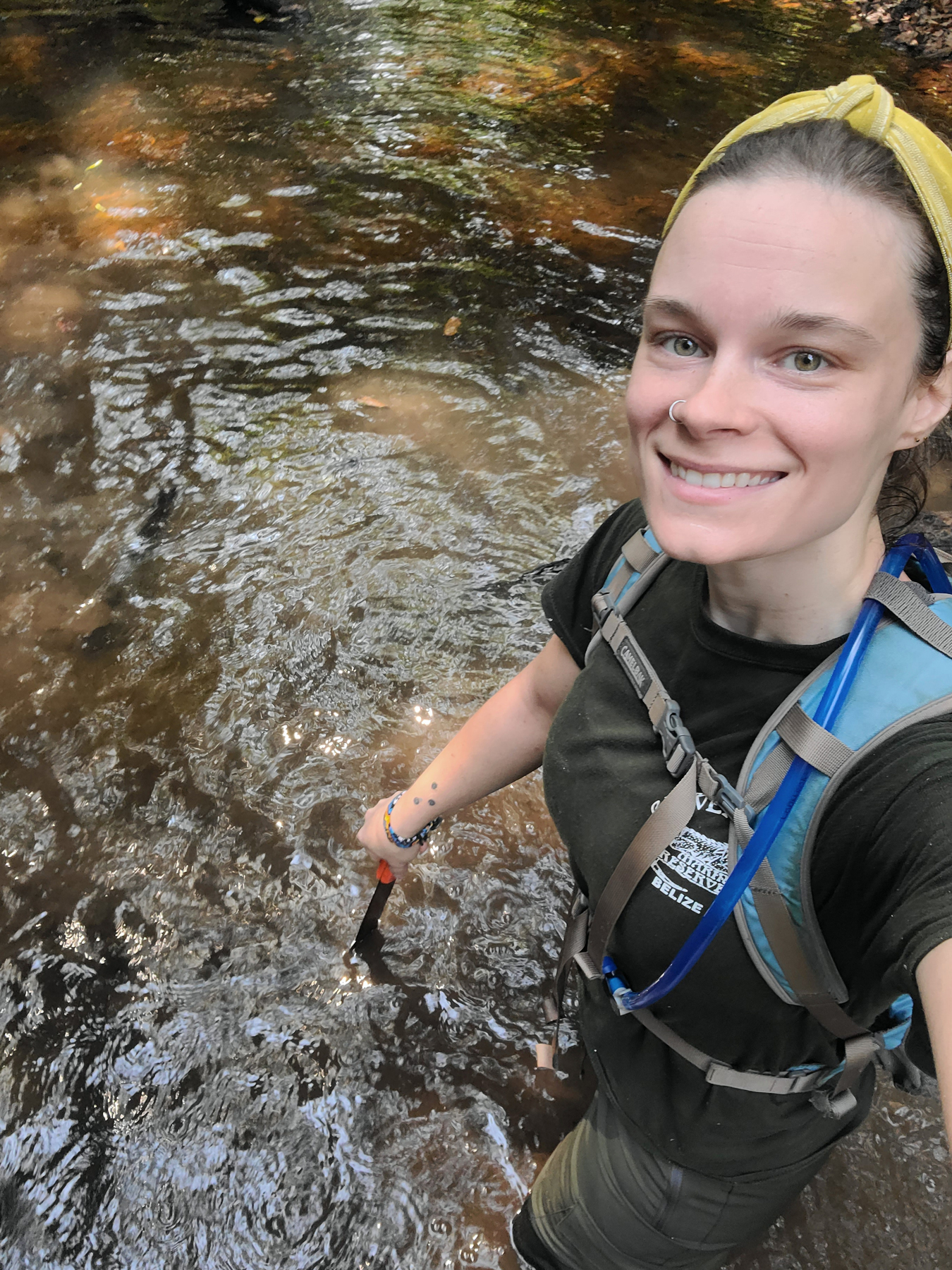
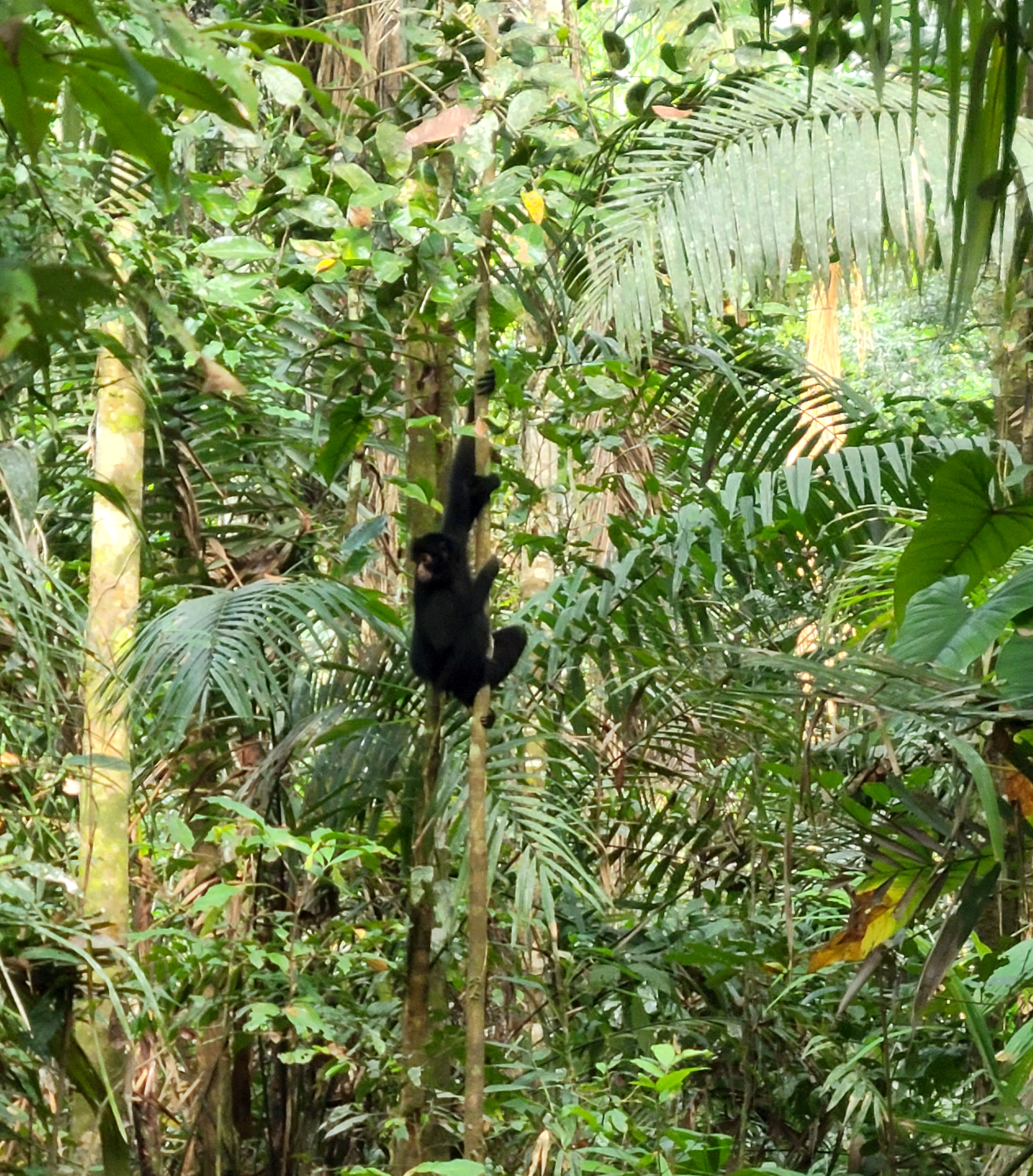
Behind the scenes in Como Zoo’s Primate Building, Brunmeier has become a big fan of the four spider monkeys in her care—Gomez, Katie, Ellie, and Jazz—and she applied to learn more about their cousins in the wild through Conservation Champions, the Como Friends micro-grant program that encourages Como’s keepers and horticulturists to take part in conservation efforts in the field. After researching conservation projects around South America, she decided that the Kawsay Biological Station in Puerto Maldonado, Madre de Dios, Peru was the place to be.
“What was really special about this location was that the team there had been able to bring back and restore a spider monkey population that had been locally extinct, and that was something that I was really excited to be part of, and to see how they were managing that,” she says. “They also work with other scientists in the area, like botanists and PhD students from abroad to research other parts of the ecosystem and how they all correlate with spider monkeys. I really wanted the chance to learn more about how all of these factors come together.”
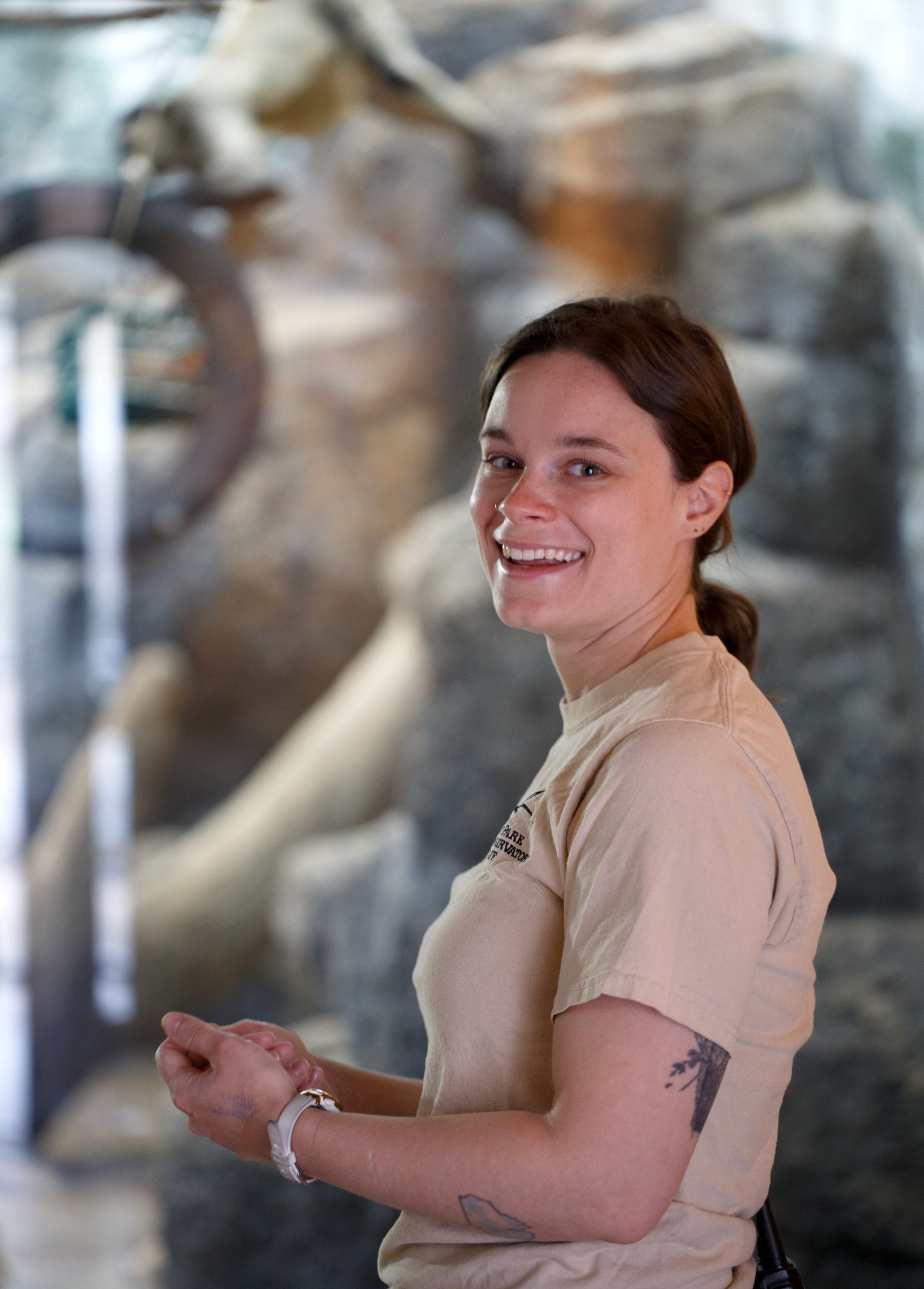
As part of the project, Brunmeier joined a team of researchers tracking spider monkeys that had been previously released into the Tambopata National Reserve to study the seasonal variation of their behavior. “With no GPS collars or other tracking devices, it was quite a task,” she says. “We had no guarantee we would find them and had to go pretty far into the Amazon rainforest.” But once the spider monkeys were located, Brunmeier got the chance to hear the full chorus of their vocalizations. “For spider monkeys in the wild, their home range is nearly 700 acres, and they often split up their group and then reunite at night to sleep together,” she says. “To do all of that requires quite a lot of logistics, so they’ve come up with quite a lot of vocalizations. They have little chirping sounds that they make when they’re close to each other, and really loud, bellowing calls that they use to try and find each other over long distances. It was so fun listening to them—they have lots of things to say.”
During her two and a half weeks in the field, Brunmeier also got the chance to care for young spider monkeys in a rehabilitation facility. “That’s where my personal expertise came in handy, because hands-on care of the animals is what I do every day,” she says. “I was also able to talk with the team about how we do primate enrichment at AZA [Association of Zoos and Aquariums] institutions in the U.S., which is something I’m passionate about.”
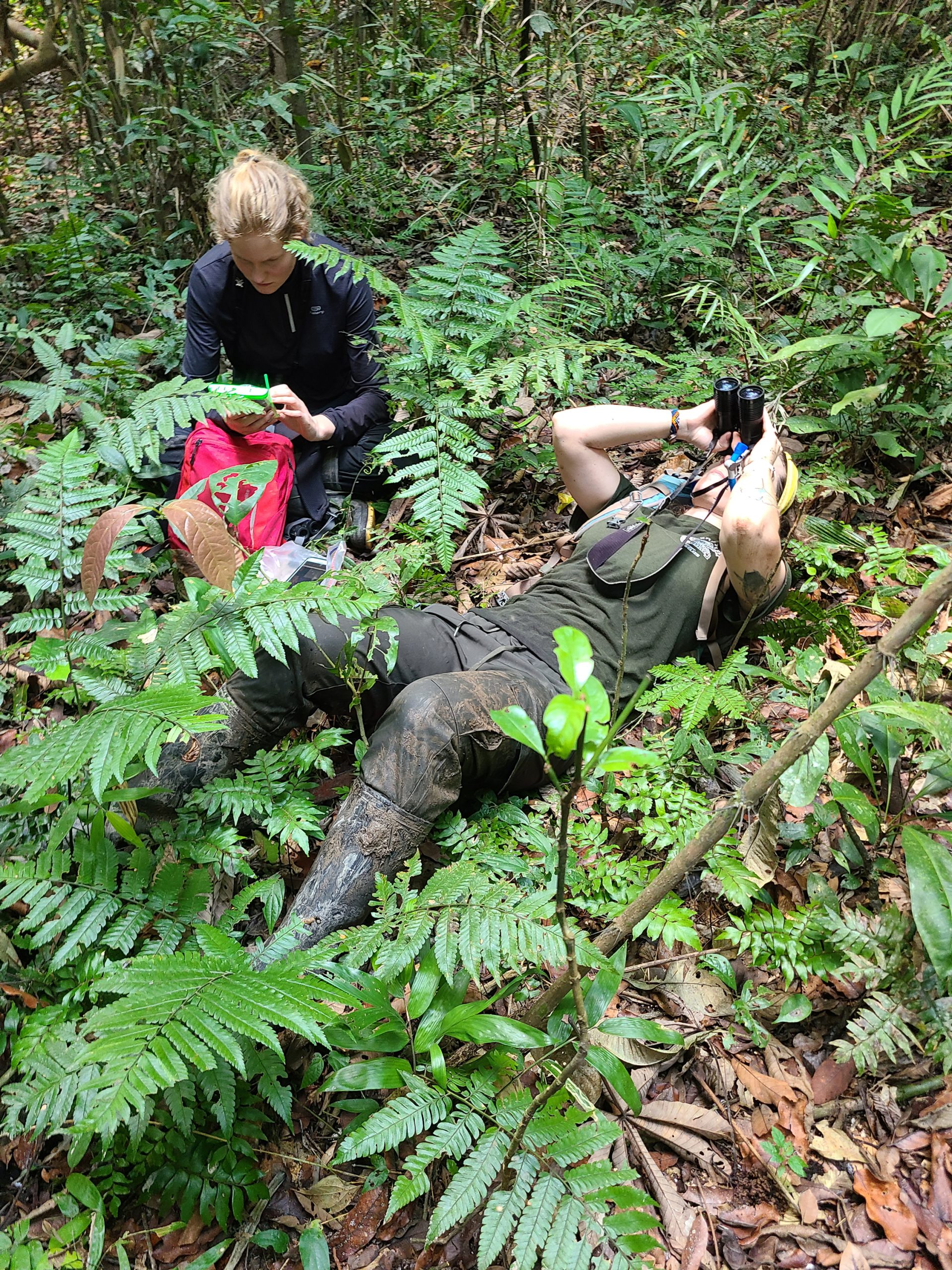
Now back at Como Zoo, Brunmeier says her trip to Peru has brought new insights to her work with spider monkeys, and new ideas for ongoing animal enrichment to the conservation work at Kawsay Biological Station. “What’s cool about the Conservation Champions trips is that it’s a two-way street,” she says. “We get the chance to learn about the animals we care about in the wild, and because we know our animals at Como Zoo so well, we also have important things to share with our conservation partners.”
Our Conservation Champions Program would not be possible without your support. Thank you!
